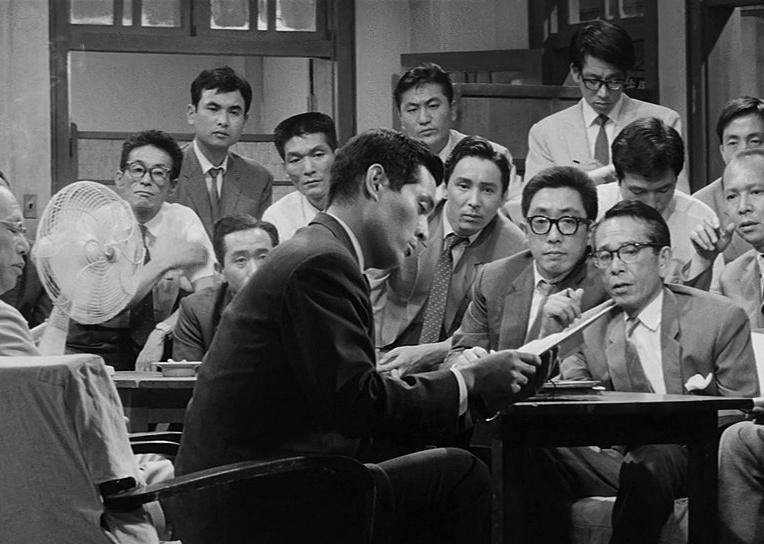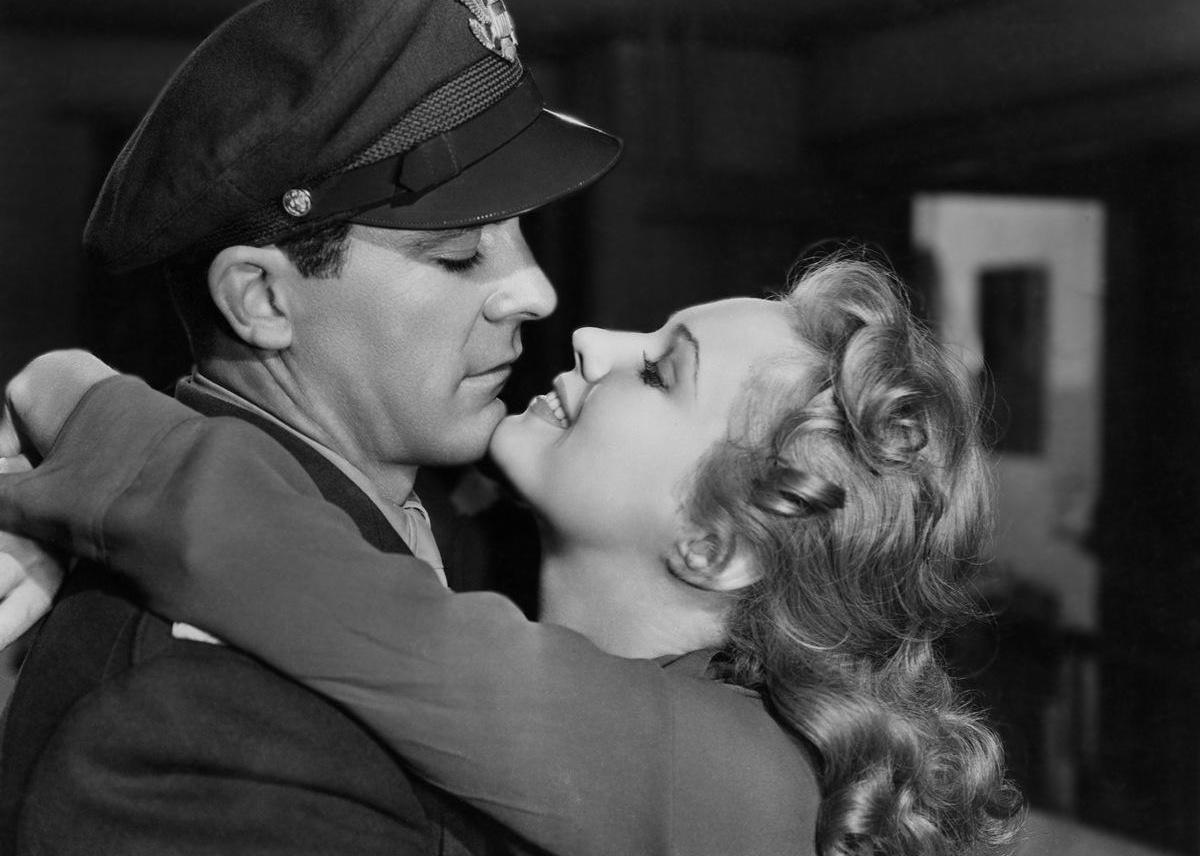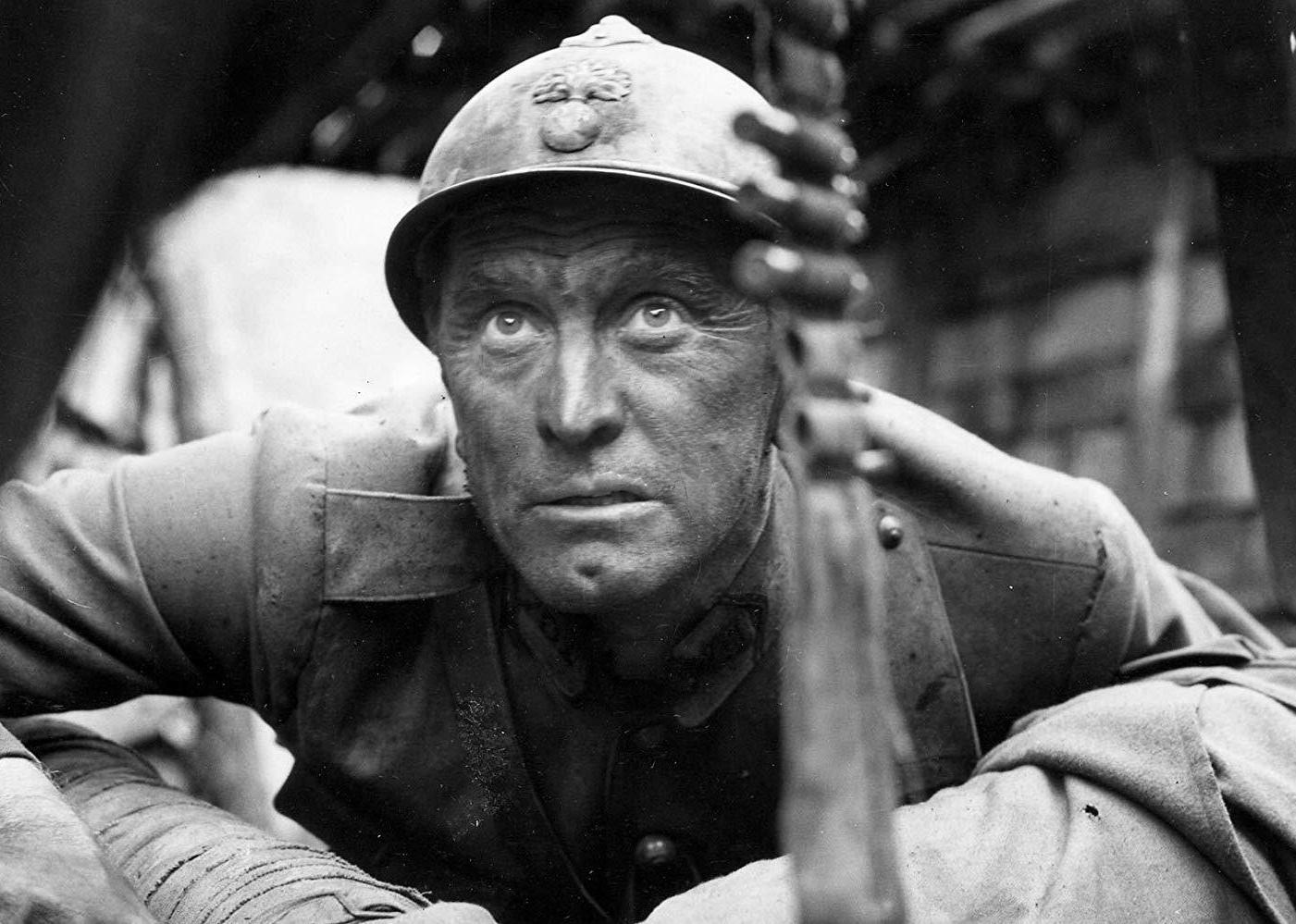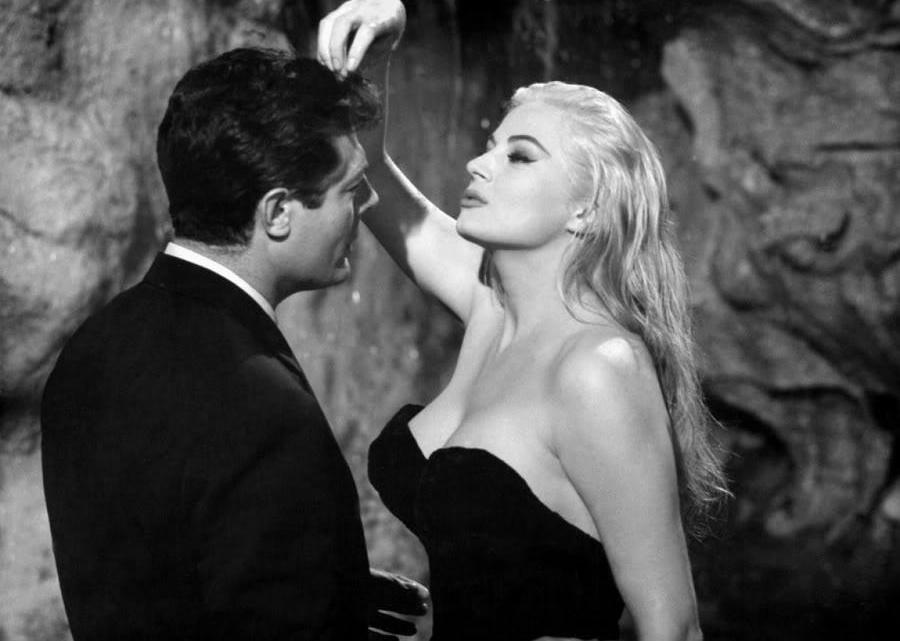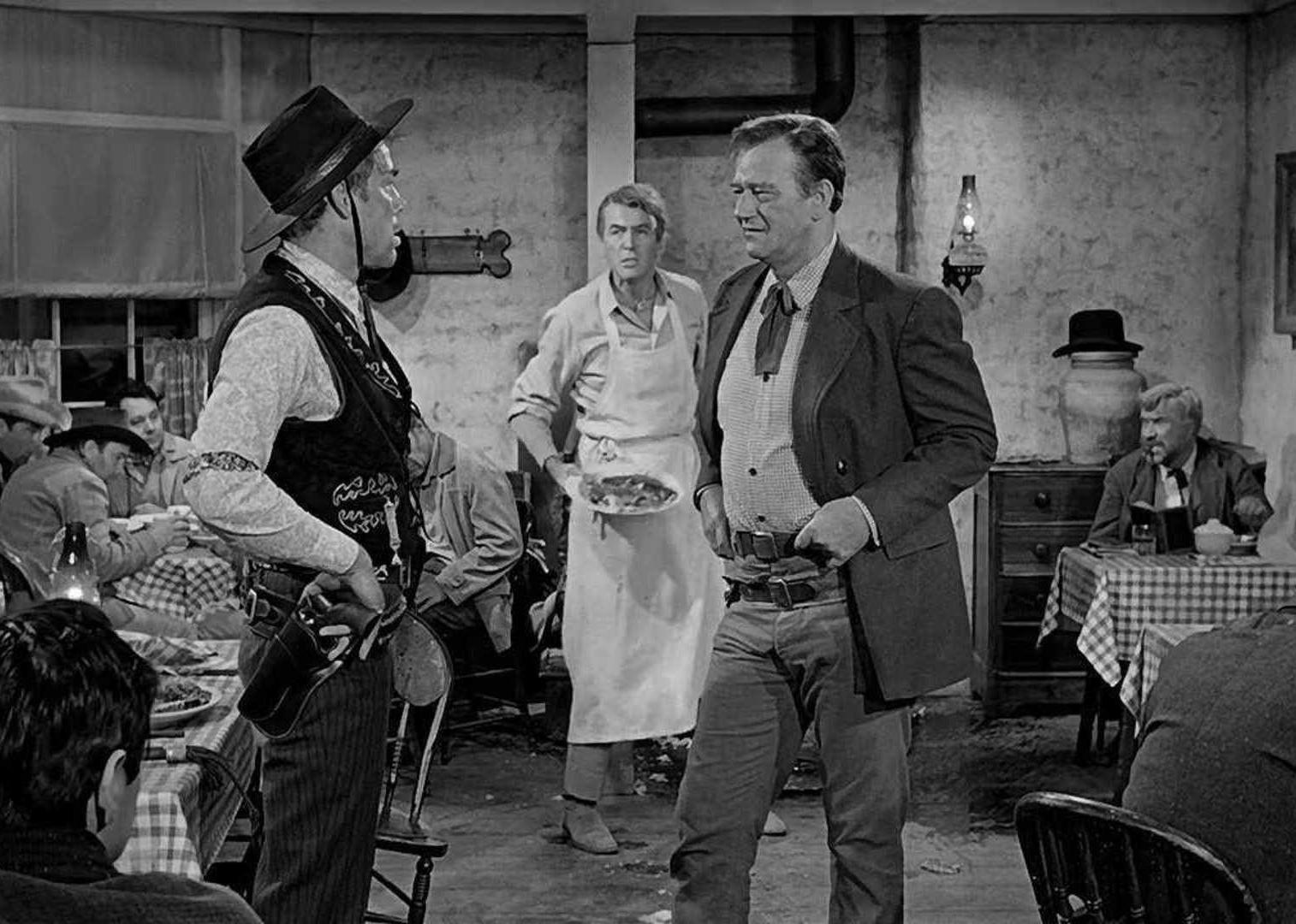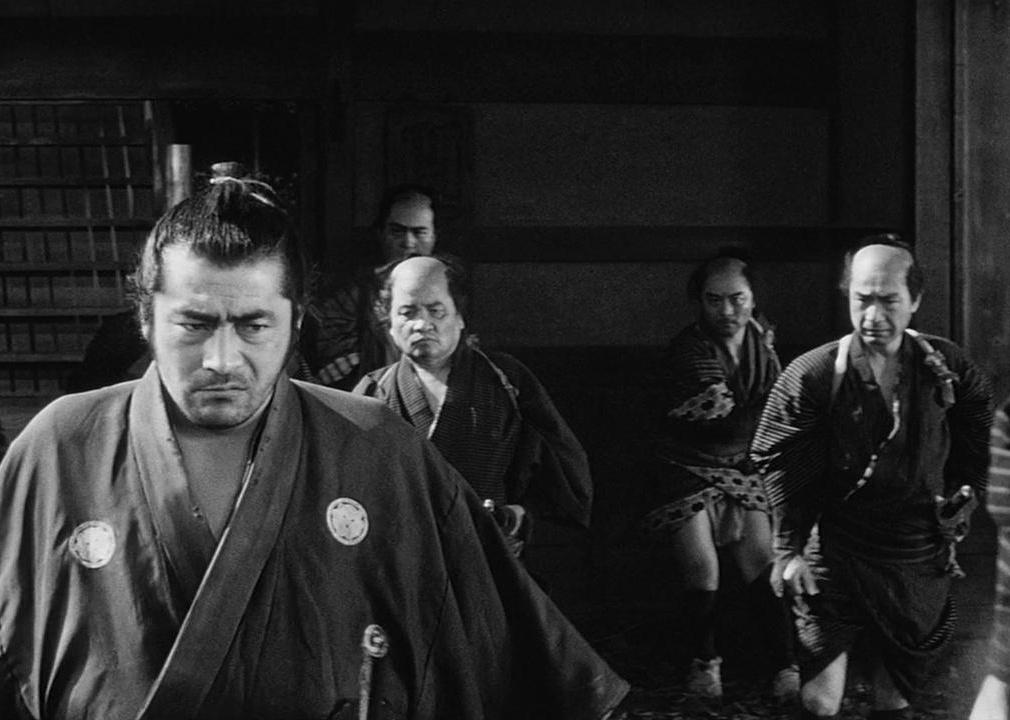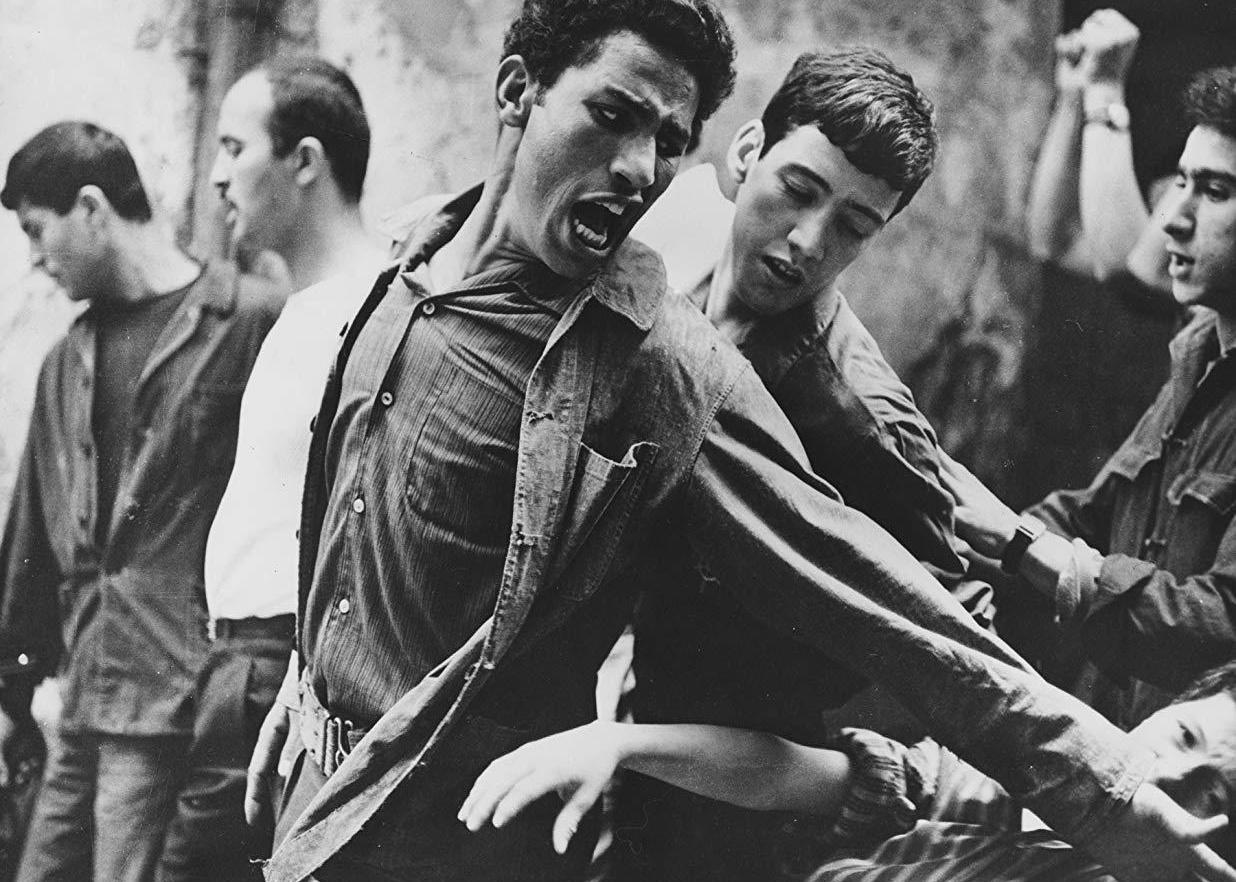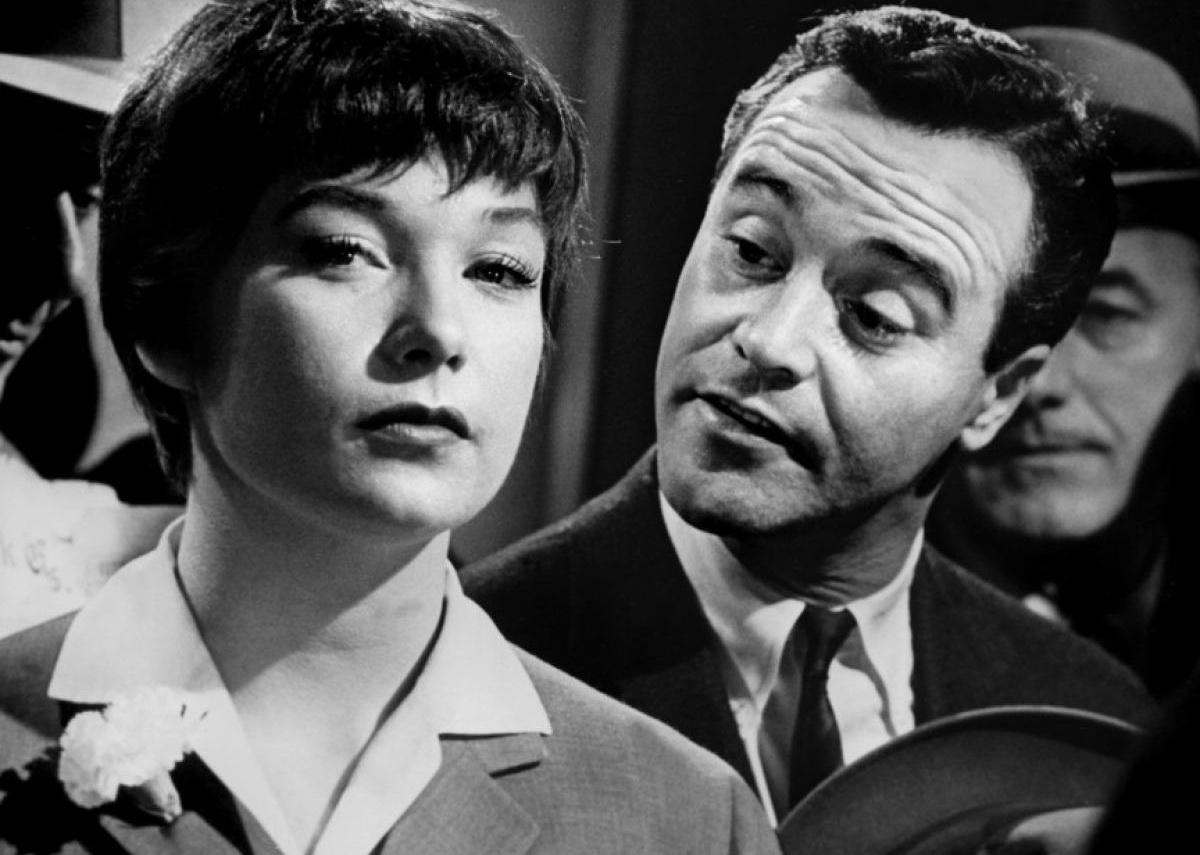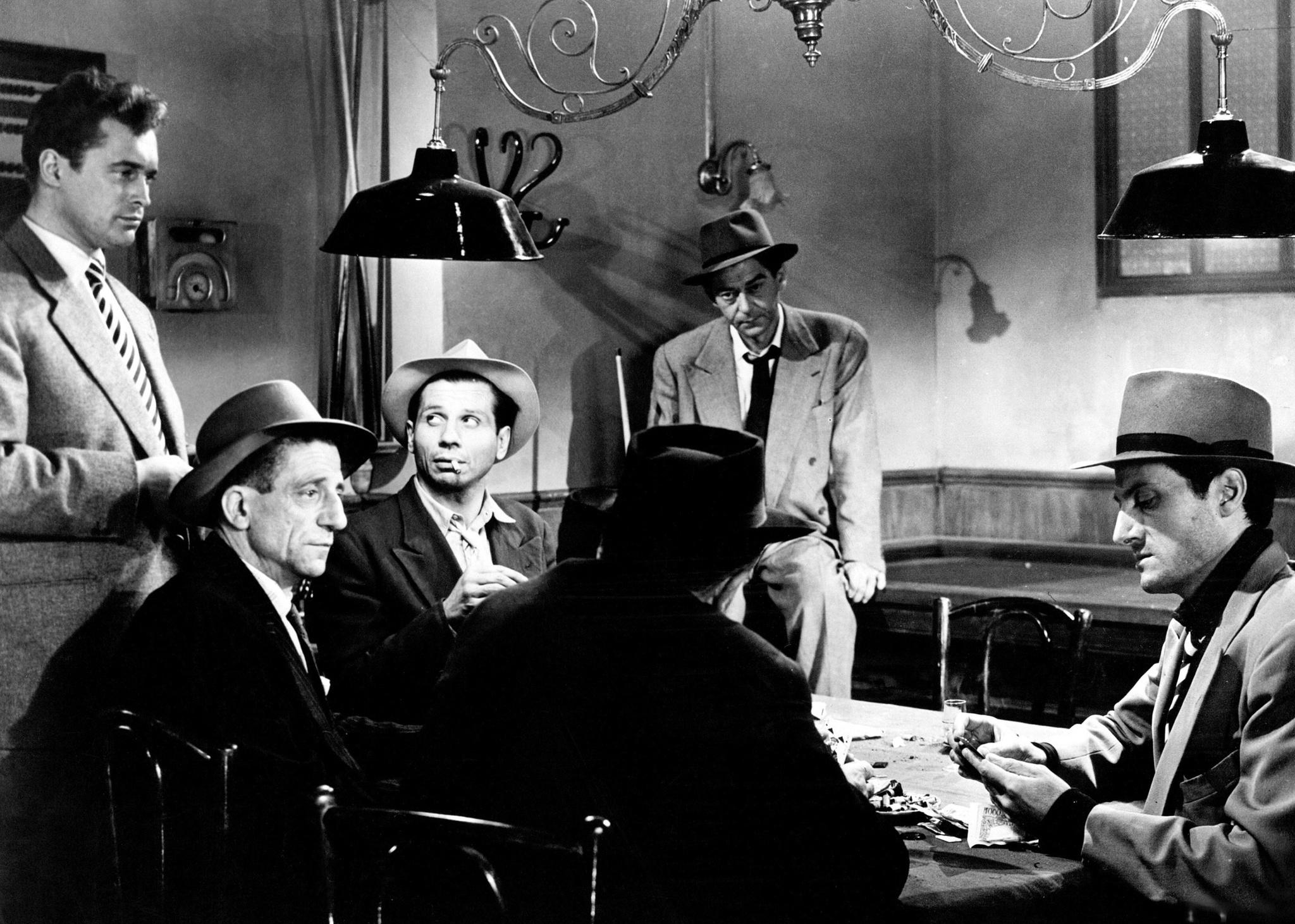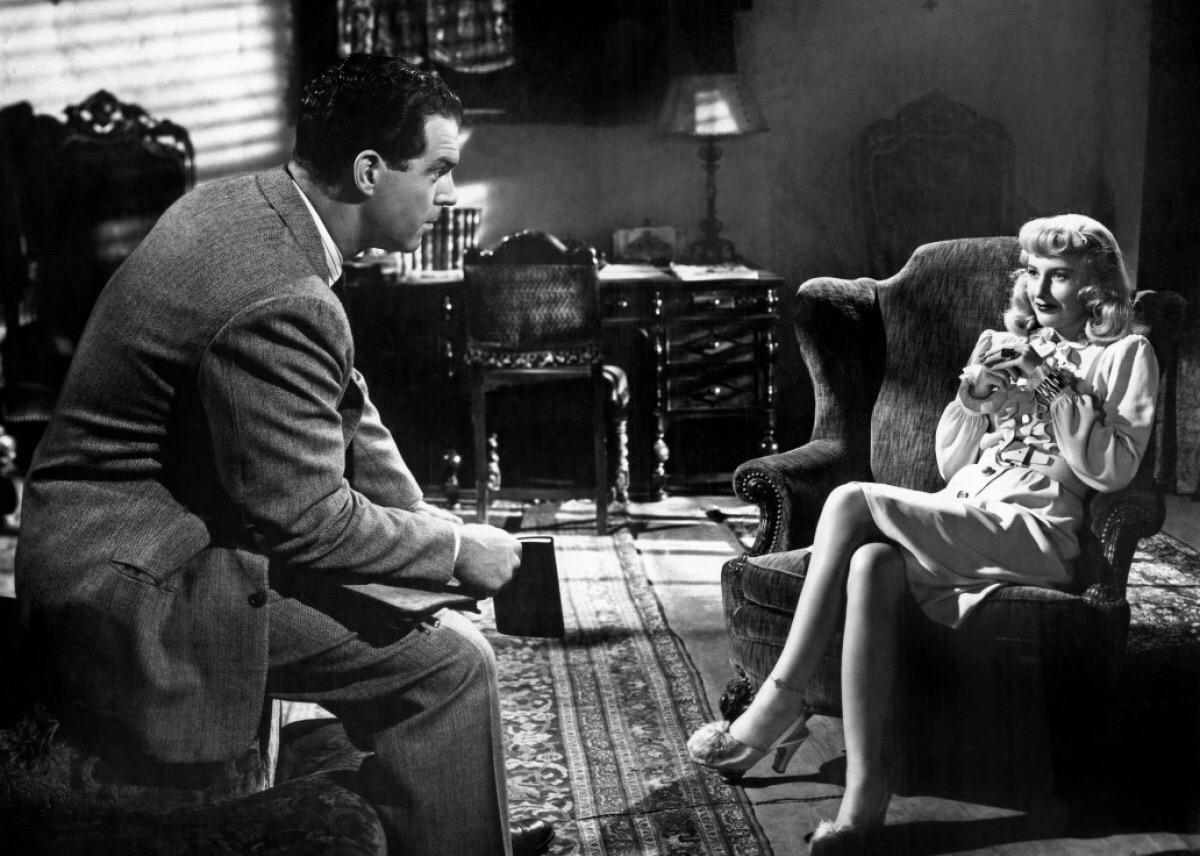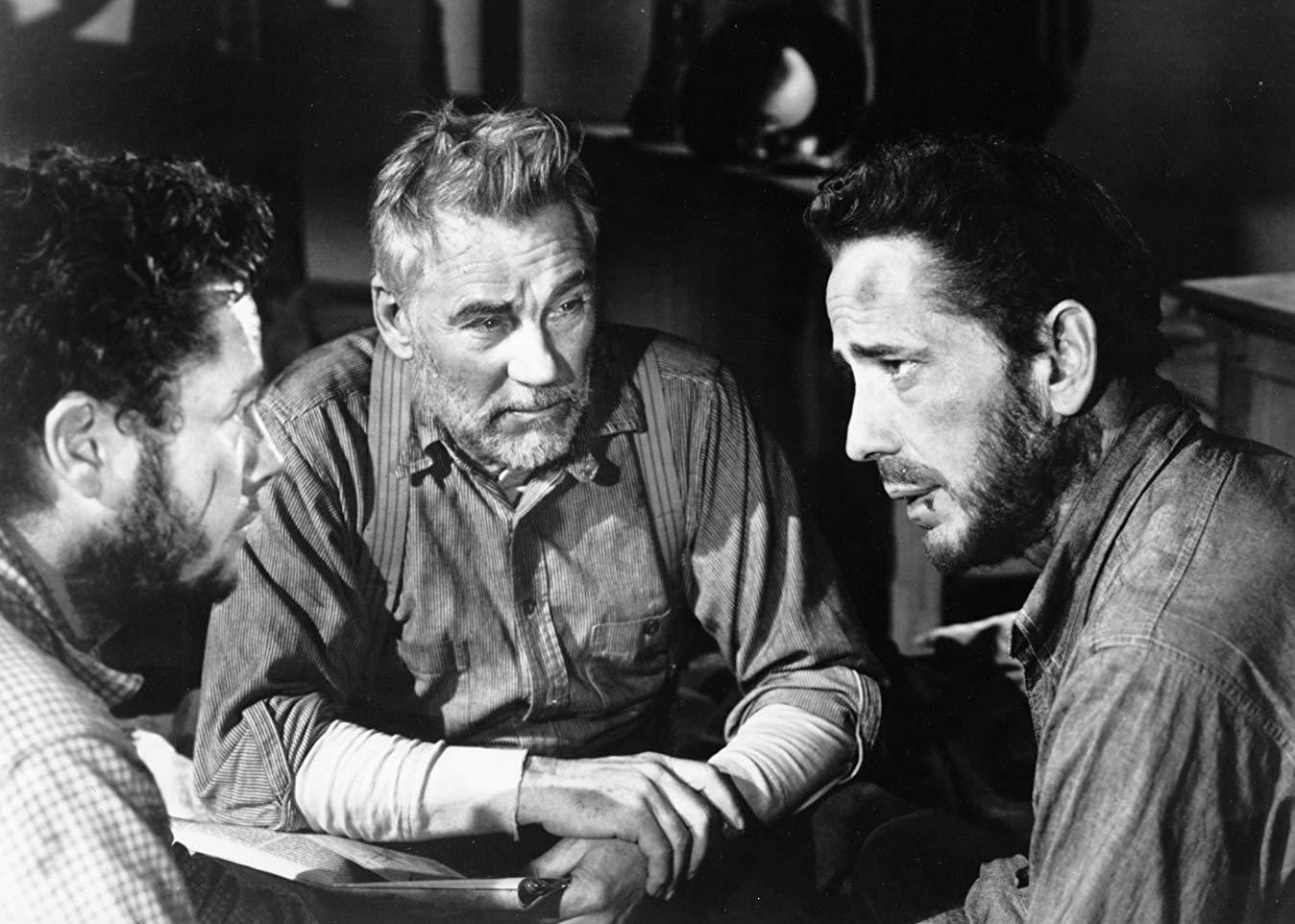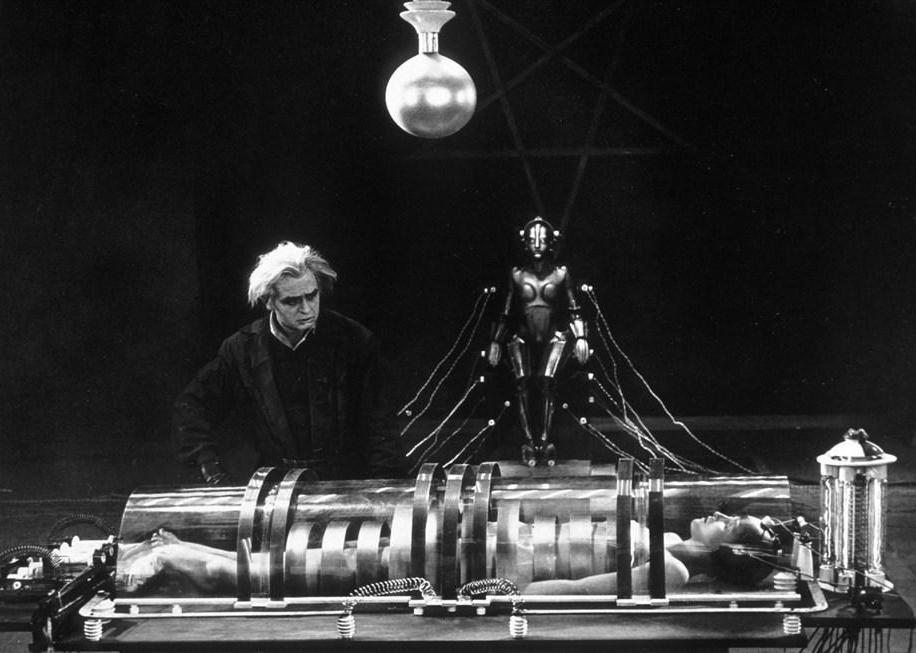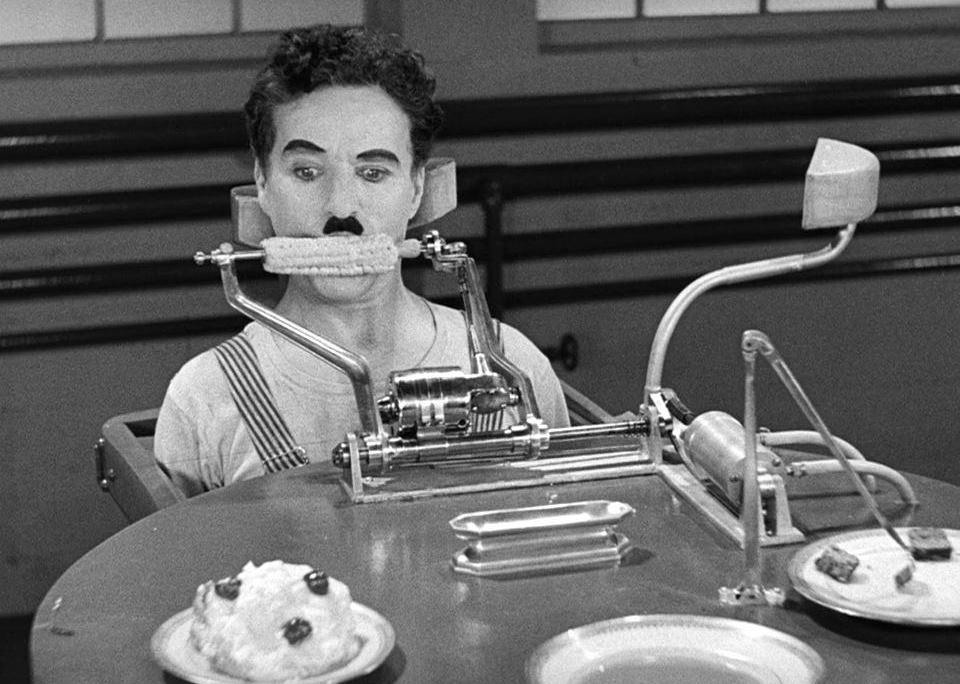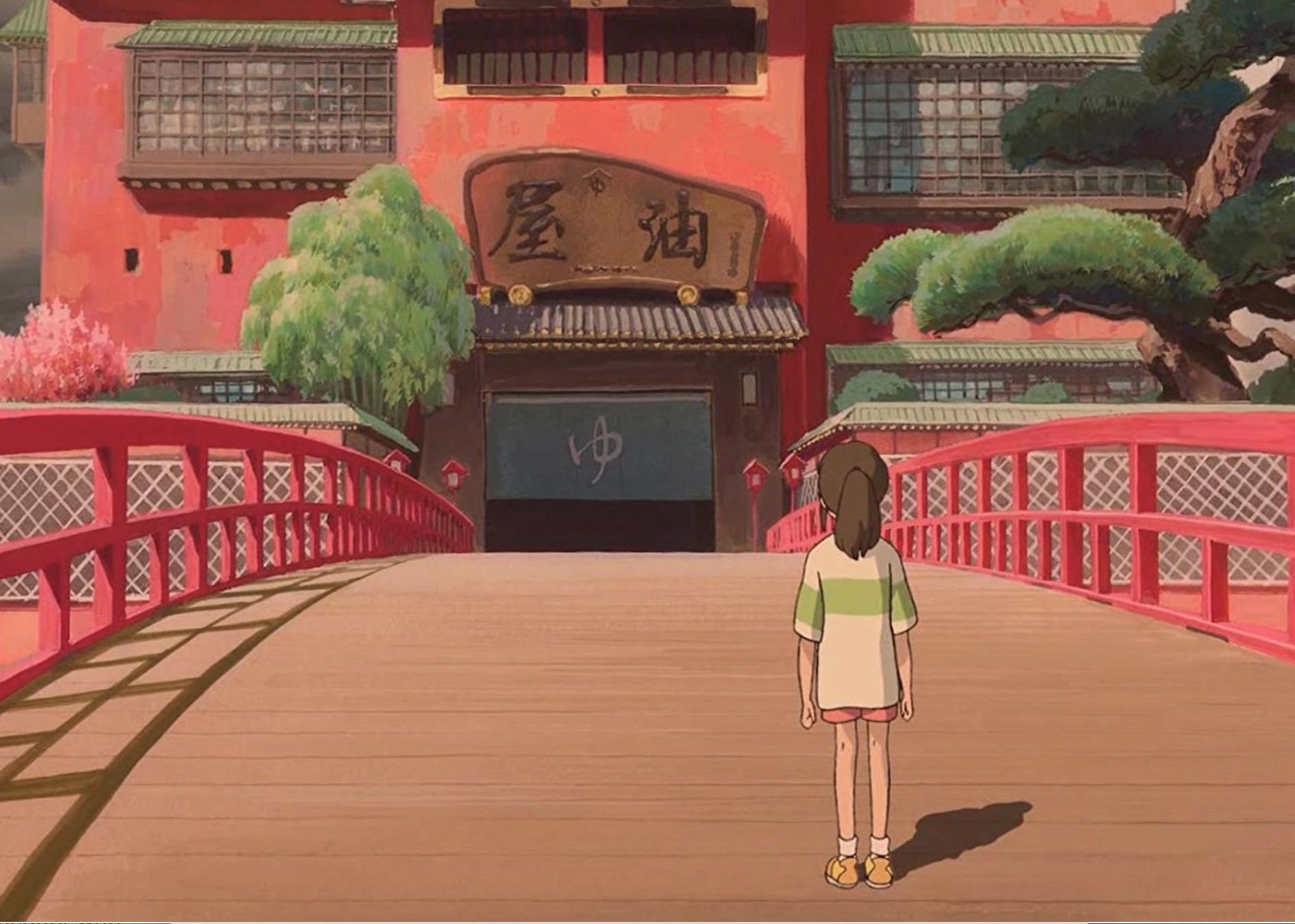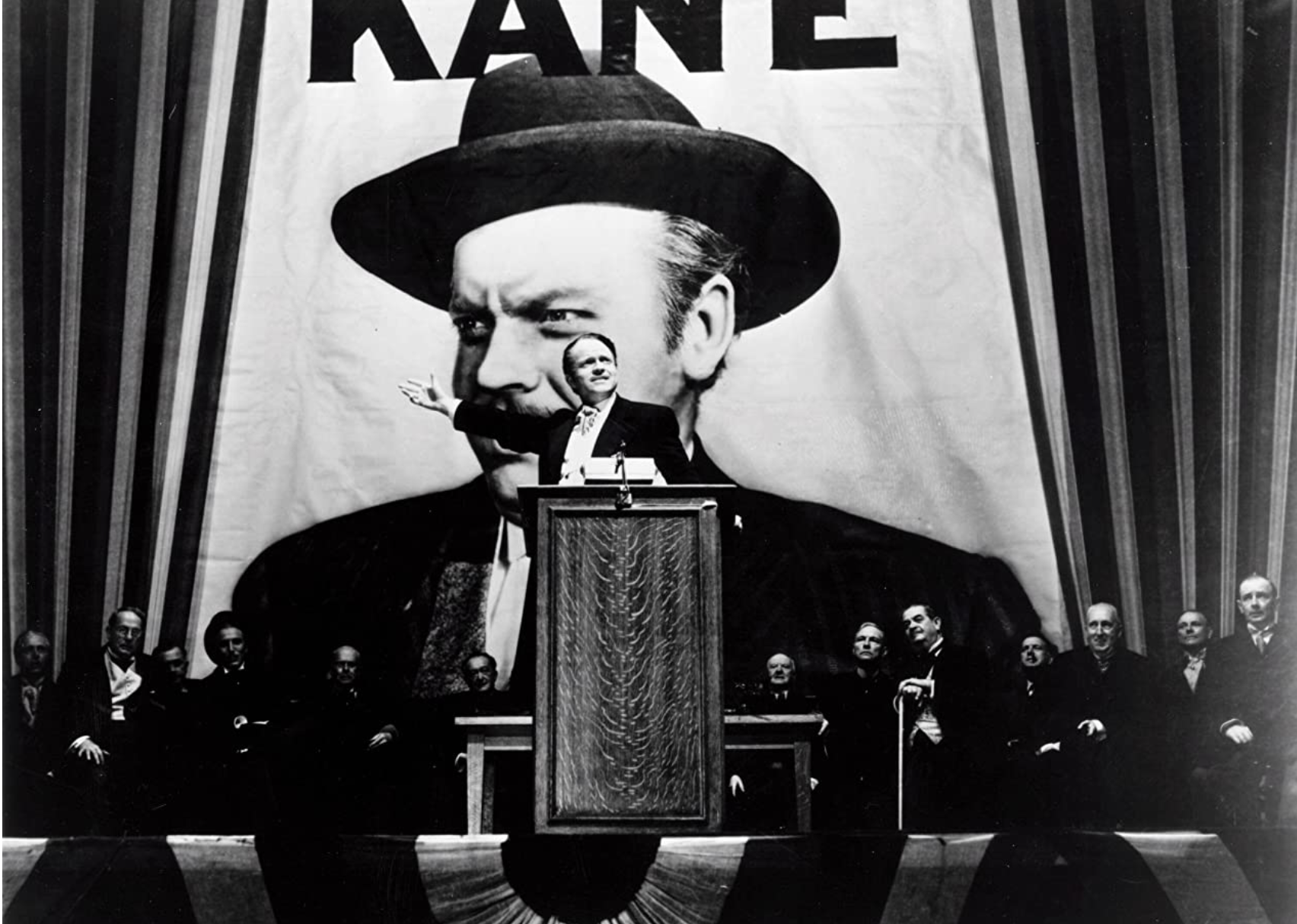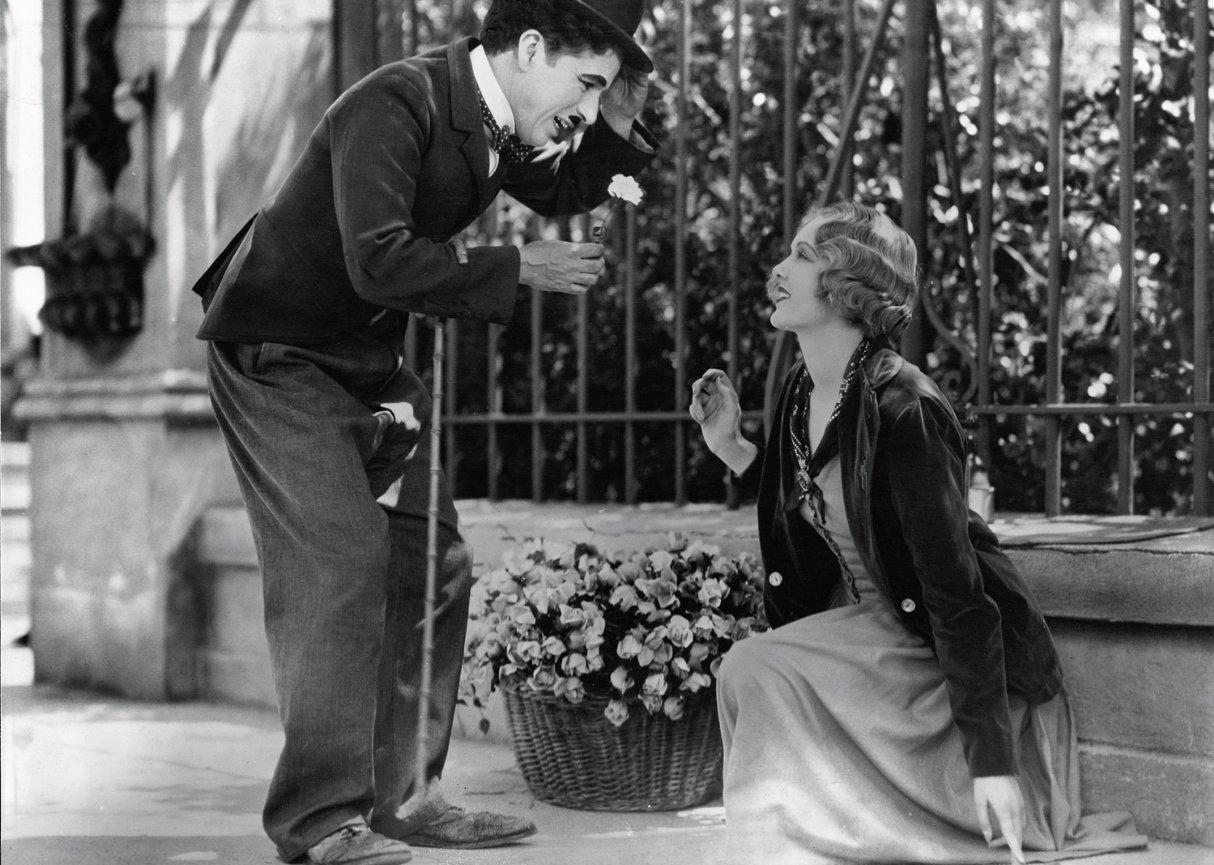100 best movies of all time
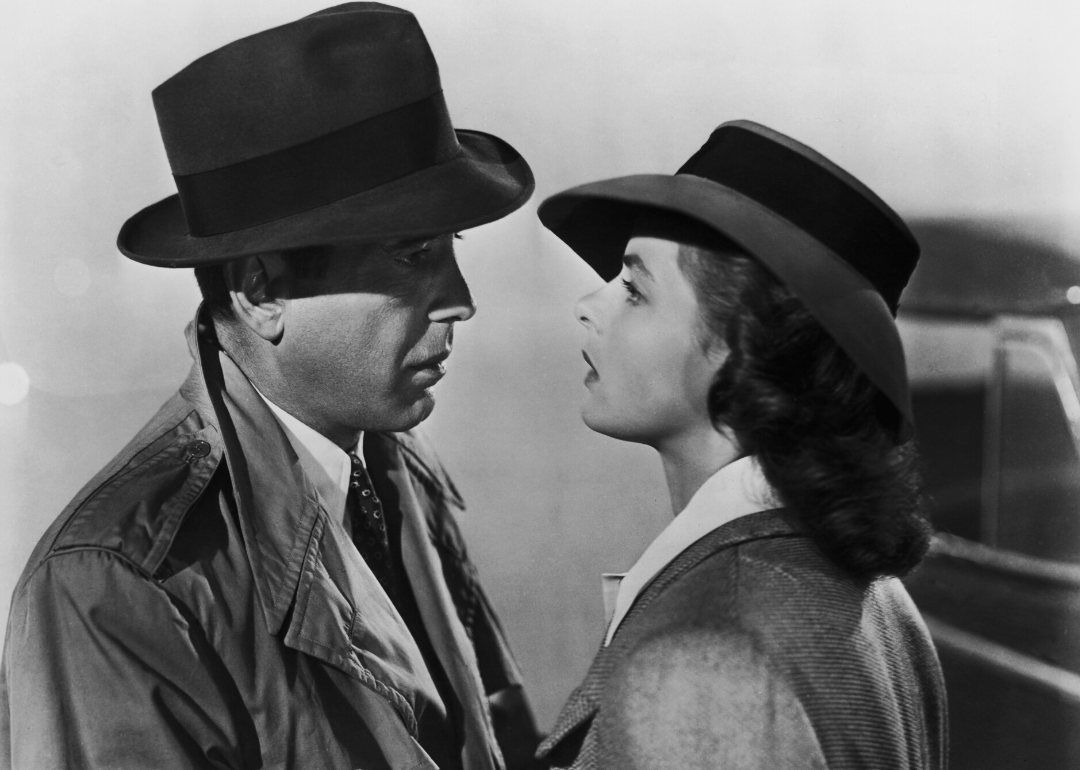
Popperfoto // Getty Images
100 best movies of all time
Humphrey Bogart and Ingrid Bergman face each other in a scene from Casablanca.
Audiences have been enraptured by cinema since 1895 when Auguste and Louis Lumière used a cinematograph machine to project moving images onto a screen. Naturally, movies have come a long way since the early days of 50-second reels, resulting in a rich variety of styles—many of which are easily streamed right from home. Every cinematic era has put forth its respective slate of timeless masterpieces.
The best movies arguably represent the pinnacle of artistic achievement in the modern era and that makes them worth celebrating over and over again. To explore the 100 best films of all time, Stacker analyzed IMDb ratings and Metascores to create a score equally weighting the two. To qualify, each movie needed at least 20,000 votes on IMDb and a Metascore. Ties were broken by IMDb user votes. Films of all languages and from all countries were considered.
Great films usually deliver the goods on multiple fronts. That means everything from the writing to the music to the acting is memorable, if not downright iconic. At the end of the day, of course, there is no one solitary answer as to what makes a great movie—just like there is no one type of great film.
Counting down from #100, here are the best movies of all time.
You may also like: Why these famous films were banned around the globe
![]()
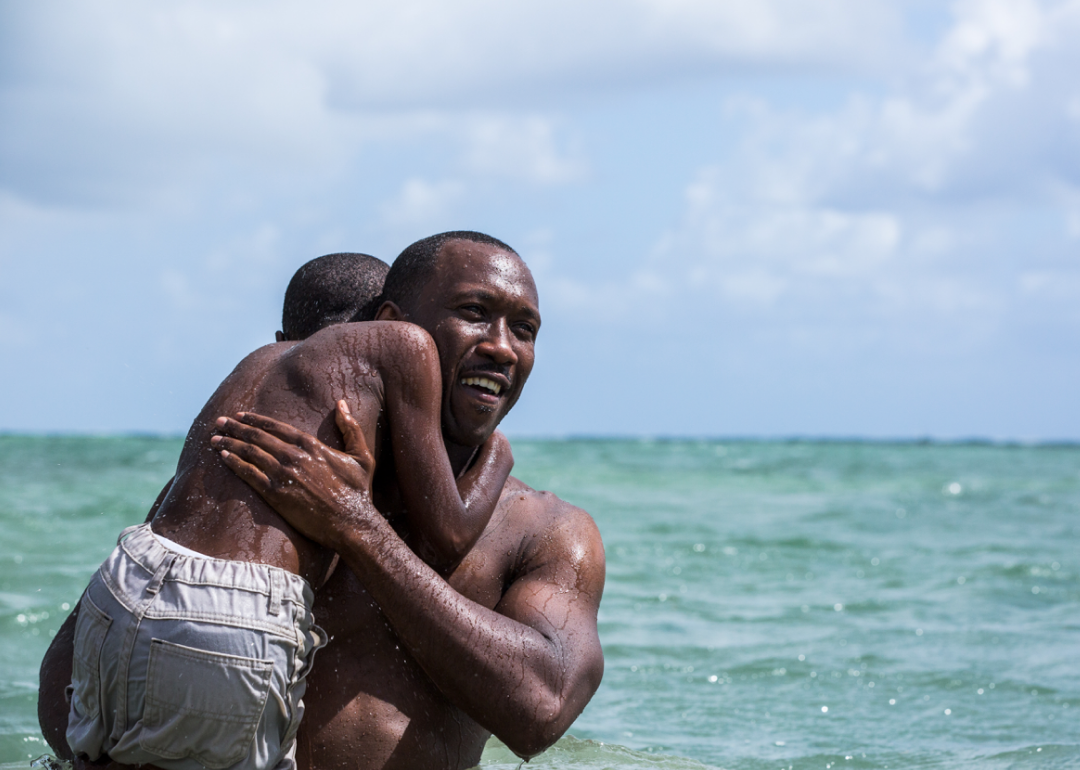
A24
#100. Moonlight (2016)
Mahershala Ali and Alex R. Hibbert in a scene from Moonlight.
– Director: Barry Jenkins
– Stacker score: 90.1
– Metascore: 99
– IMDb user rating: 7.4
– Runtime: 111 minutes
Divided into three segments, this prescient drama follows young Chiron (Ashton Sanders) on his path to self-discovery. Brought to life with vivid color and precision, the story grapples with themes of poverty and identity. “Moonlight” won three Academy Awards, including Best Picture. Mahershala Ali made history as the first Muslim to win an acting Oscar.
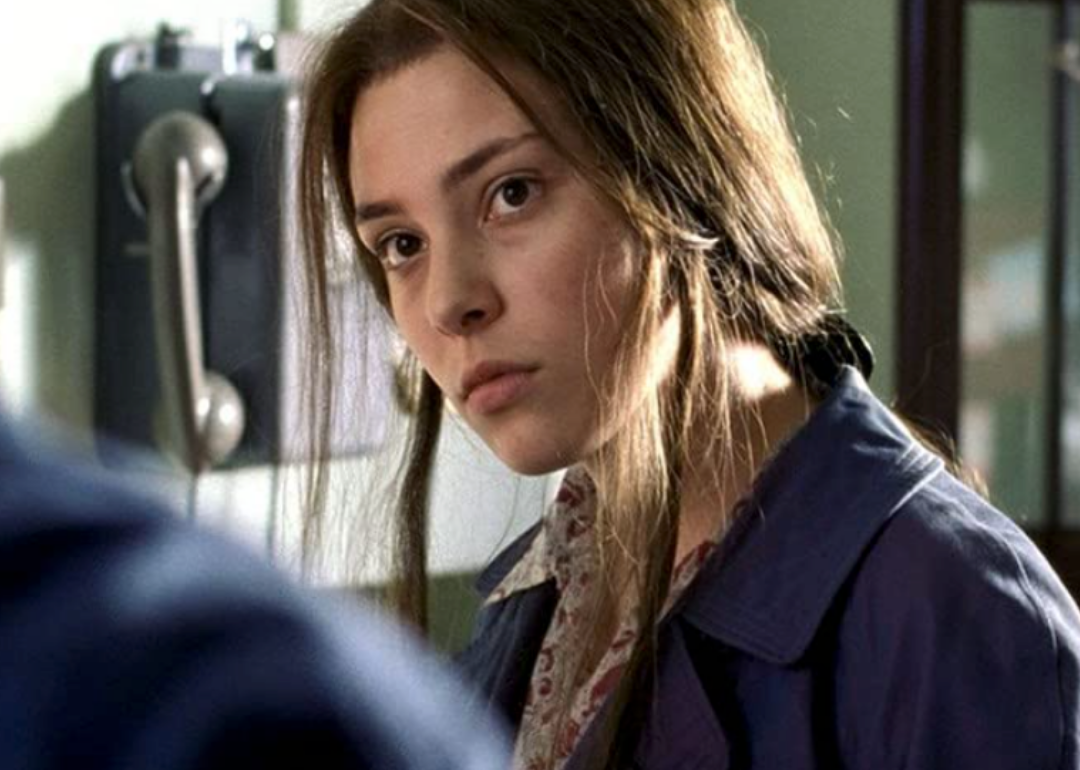
BiBi Film
#99. The Best of Youth (2003)
Jasmine Trinca in a scene from The Best of Youth.
– Director: Marco Tullio Giordana
– Stacker score: 90.6
– Metascore: 89
– IMDb user rating: 8.5
– Runtime: 366 minutes
“The Best of Youth” follows middle-class Italian brothers Nicola (Luigi Lo Cascio) and Matteo (Alessio Boni) over nearly 40 years, as they come of age and search for meaning amid post-World War II upheaval. Because of its lengthy runtime, the film was released as a pair of three-hour films. It won the “Prize Un Certain Regard” at the 2003 Cannes Film Festival. As film critic Peter Bradshaw notes, “The Best of Youth” is a notable example of Italian films that track history through an extensive family saga. Other examples include “The Leopard” and “Rocco and His Brothers.”
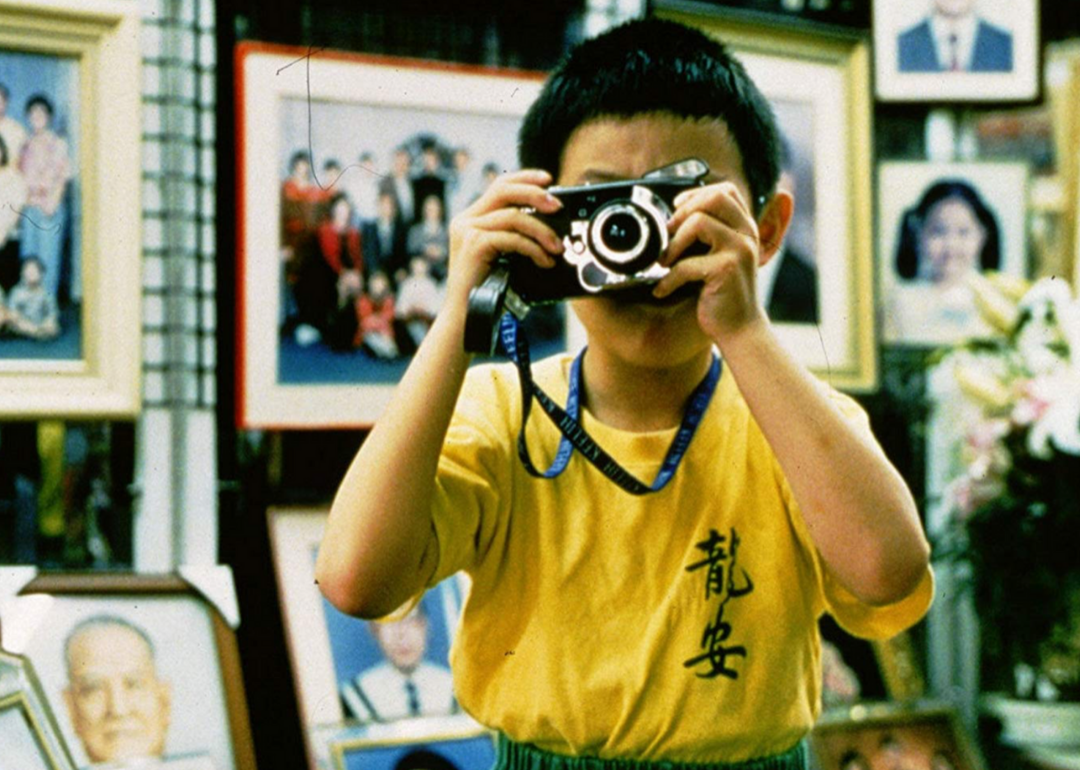
1+2 Seisaku Iinkai
#98. Yi Yi (2000)
Jonathan Chang in a scene from Yi Yi.
– Director: Edward Yang
– Stacker score: 90.6
– Metascore: 93
– IMDb user rating: 8.1
– Runtime: 173 minutes
This generational Taiwanese drama follows the plight of engineer NJ (Wu Nien-jen), and how his actions affect three generations of his middle-class family. Director Edward Yang received particular acclaim for “Yi Yi,” taking home Best Director at the 2000 Cannes Film Festival for the film. Its Chinese title can be translated to the phrase “one by one,” or “one after another.”
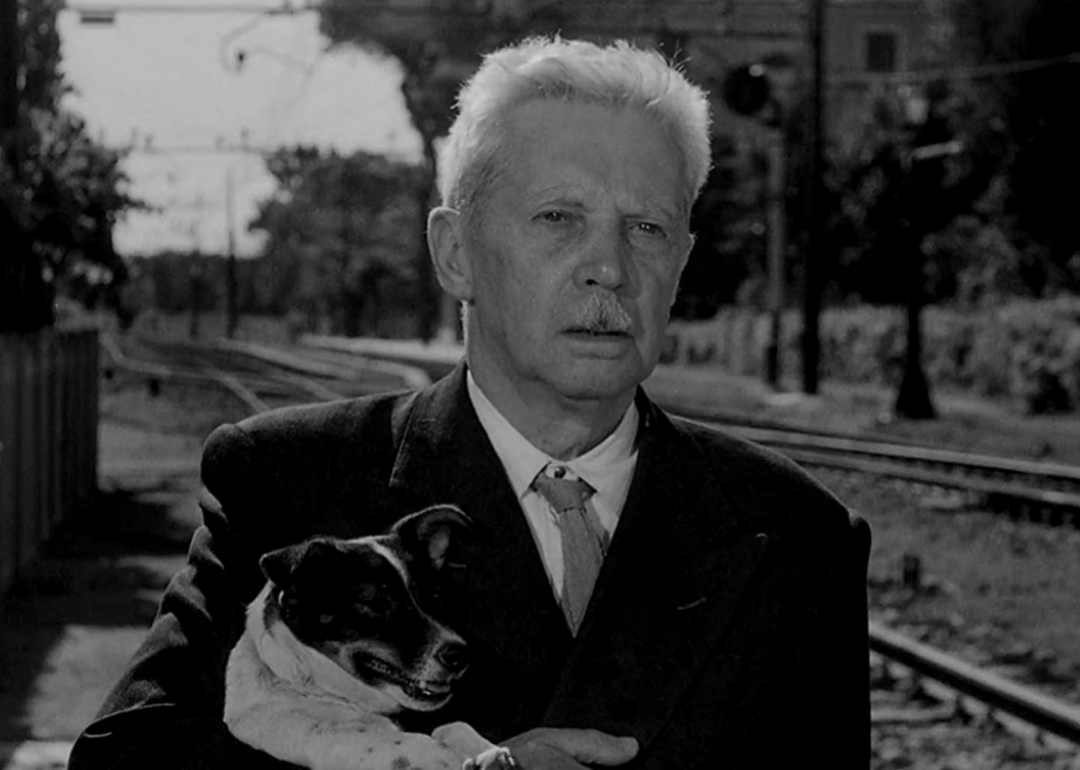
Rizzoli Film
#97. Umberto D. (1952)
Carlo Battisti with a dog in Umberto D.
– Director: Vittorio De Sica
– Stacker score: 90.6
– Metascore: 92
– IMDb user rating: 8.2
– Runtime: 89 minutes
In this Italian film, elderly Rome resident Umberto Domenico Ferrari (Carlo Battisti) and his beloved dog Flike face eviction and the prospect of poverty. Desperate to evade threats from his landlady (Lina Gennari), Domenico fakes illness in order to stay at his hospital, leaving Flike behind with the landlady’s compassionate maid. Although Italians found the movie too critical so soon after World War II, it’s since attained a legacy as one of the great Italian films.
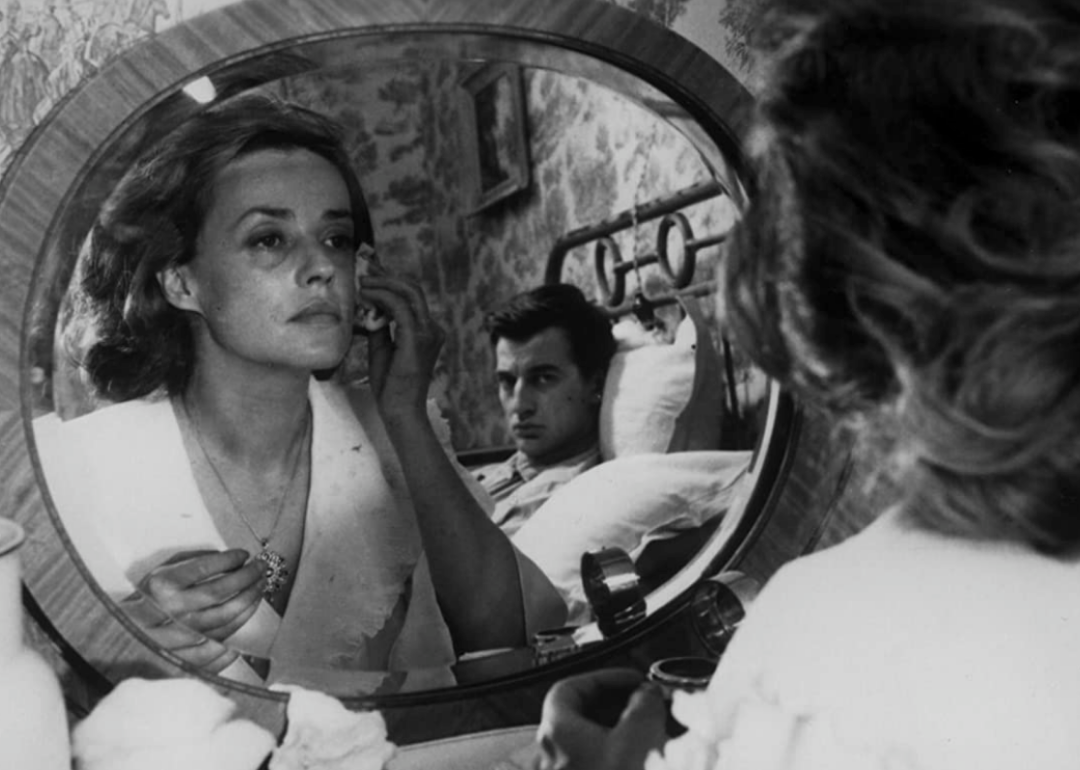
Cinédis
#96. Jules and Jim (1962)
Actors in a scene from Jules and Jim.
– Director: François Truffaut
– Stacker score: 90.6
– Metascore: 97
– IMDb user rating: 7.7
– Runtime: 105 minutes
This prime example of French new wave cinema tells the story of an ill-fated love triangle between Frenchman Jim (Henri Serre), his Austrian friend Jules (Oskar Werner), and Jules’ eventual wife Catherine (Jeanne Moreau). “Jules and Jim” is loosely based on the 1953 autobiographical novel by Henri-Pierre Roché, and Truffaut befriended the author before his eventual death. The movie was an inspiration for Martin Scorsese when making “Goodfellas,” as he admired its “punk attitude.”
You may also like: 50 best WWII movies of all time
Kurosawa Production Co.
#95. High and Low (1963)
Actors in a scene from High and Low.
– Director: Akira Kurosawa
– Stacker score: 90.6
– Metascore: 90
– IMDb user rating: 8.4
– Runtime: 143 minutes
In “High and Low,” a Japanese executive’s comfortable life is upended when his chauffeur’s son is kidnapped and held for ransom. Soon, his entire family is under threat. The movie is loosely based on the Ed McBain novel “King’s Ransom,” and stands as a strong example of a Japanese police procedural. Criterion describes the movie as “a diabolical treatise on contemporary Japanese society.”
The Samuel Goldwyn Company
#94. The Best Years of Our Lives (1946)
Actors in a scene from The Best Years of Our Lives.
– Director: William Wyler
– Stacker score: 90.6
– Metascore: 93
– IMDb user rating: 8.1
– Runtime: 170 minutes
In this harrowing 1946 drama, three soldiers struggle to reintegrate into society after returning home from serving in World War II. “The Best Years of Our Lives” was directed by William Wyler, a former Air Force major whose previous war film, “Mrs. Miniver,” is held in similarly high regard. Despite the grim and depressing tone, “The Best Years of Our Lives” was the biggest box office success since 1939’s “Gone With the Wind.” The picture was also one of the first 25 films selected by the Library of Congress for preservation in the National Film Registry in 1989.
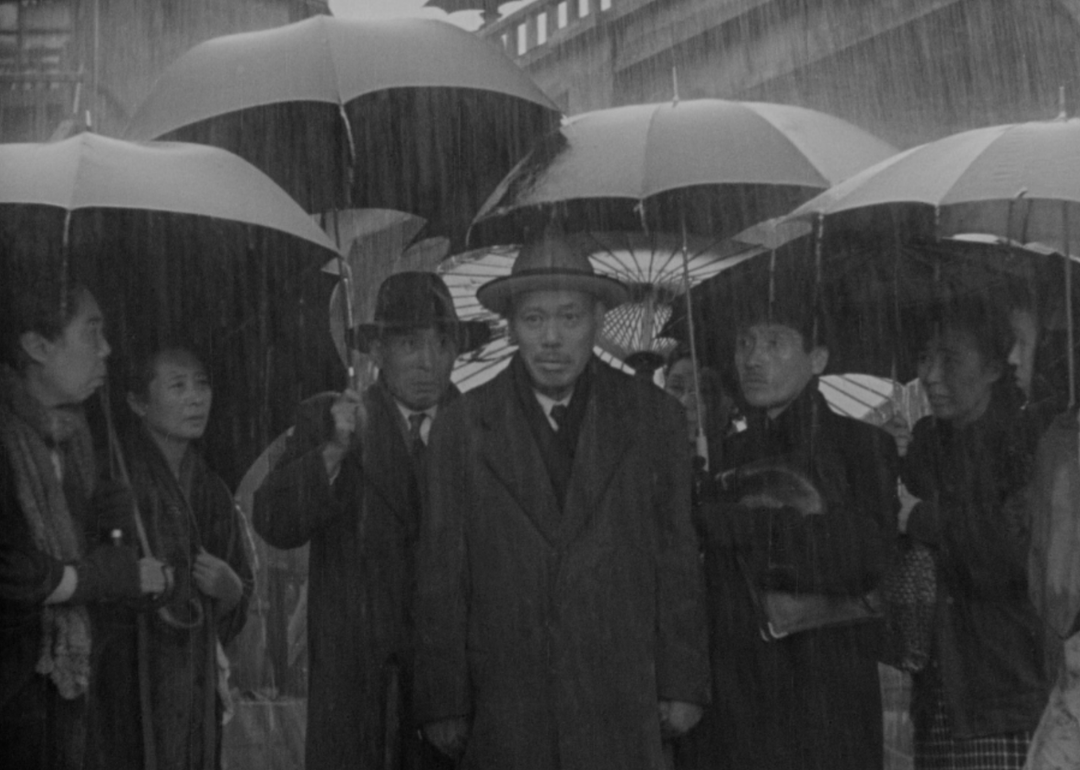
Toho Company
#93. Ikiru (1952)
Actors in a scene from Ikiru.
– Director: Akira Kurosawa
– Stacker score: 90.6
– Metascore: 91
– IMDb user rating: 8.3
– Runtime: 143 minutes
In “Ikiru,” a Tokyo bureaucrat searches for meaning after being diagnosed with terminal cancer and struggling to maintain a relationship with his son. The film was partially inspired by Russian writer Leo Tolstoy’s novella “The Death of Ivan Ilyich.” However, Kurosawa also uses “Ikiru” to critique issues like contemporary Japanese bureaucracy and the decay of the traditional Japanese family structure, while remaining a poignant exploration of what it means to be alive.
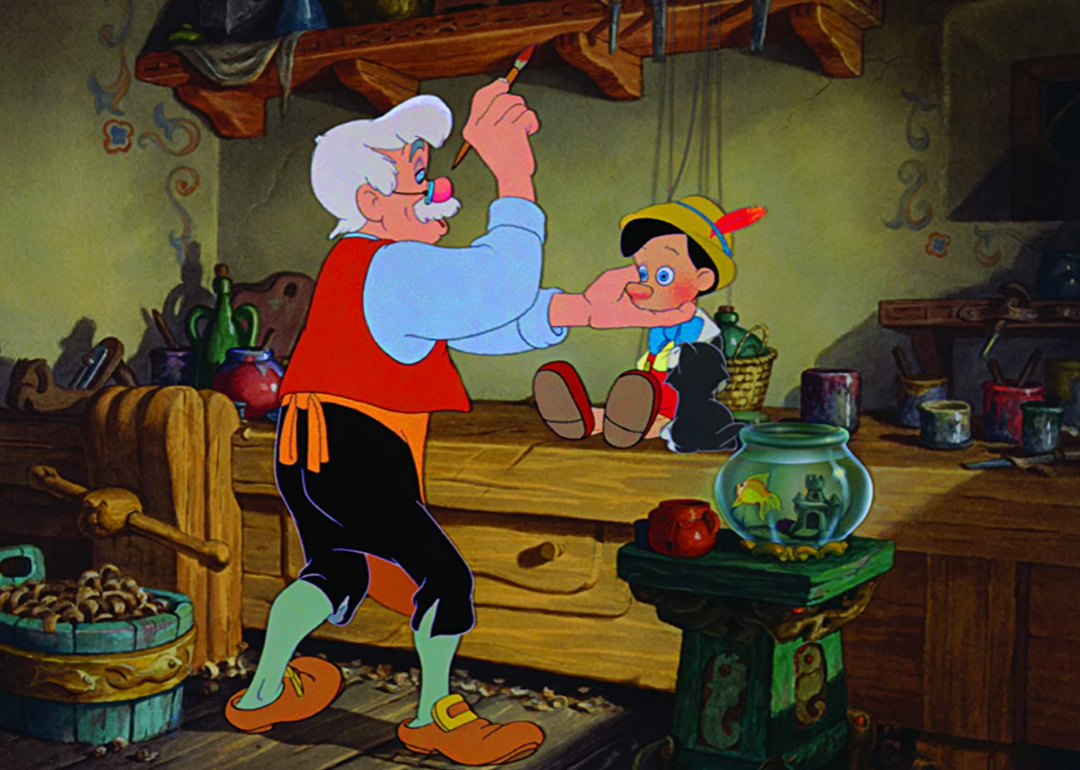
Walt Disney Studios
#92. Pinocchio (1940)
Animated still from Pinocchio.
– Directors: Norman Ferguson, T. Hee, Wilfred Jackson, Jack Kinney, Hamilton Luske, Bill Roberts, Ben Sharpsteen
– Stacker score: 90.6
– Metascore: 99
– IMDb user rating: 7.5
– Runtime: 88 minutes
With a 2022 debut of the live-action remake, it’s the perfect time to revisit this original Disney classic. The studio’s second full-length animated effort, “Pinocchio” was something of a financial disappointment upon its initial release. Even so, the movie was one of the earliest animated features to win a major Oscar, including Best Music, Original Score and Best Music, Original Song. Thanks to theatrical re-releases and home video rentals and sales, the film eventually grossed more than $100 million.
Bryna Productions
#91. Paths of Glory (1957)
Kirk Douglas in a scene from Paths of Glory.
– Director: Stanley Kubrick
– Stacker score: 90.6
– Metascore: 90
– IMDb user rating: 8.4
– Runtime: 88 minutes
Although iconic director Stanley Kubrick addressed themes of war in many of his films, he arguably addressed it most potently in 1957’s “Paths of Glory.” The anti-war drama stars Kirk Douglas as Colonel Dax, a French commanding officer who defends his soldiers from martial charges of cowardace after they refuse to partake in a suicide mission. Loosely based on the true story of the Souain corporals affair of 1915, “Paths of Glory” was initially censored in several places—such as Switzerland and France—for its critique of the casual cruelty of war.
You may also like: Can you guess which iconic movie these scenes are from?
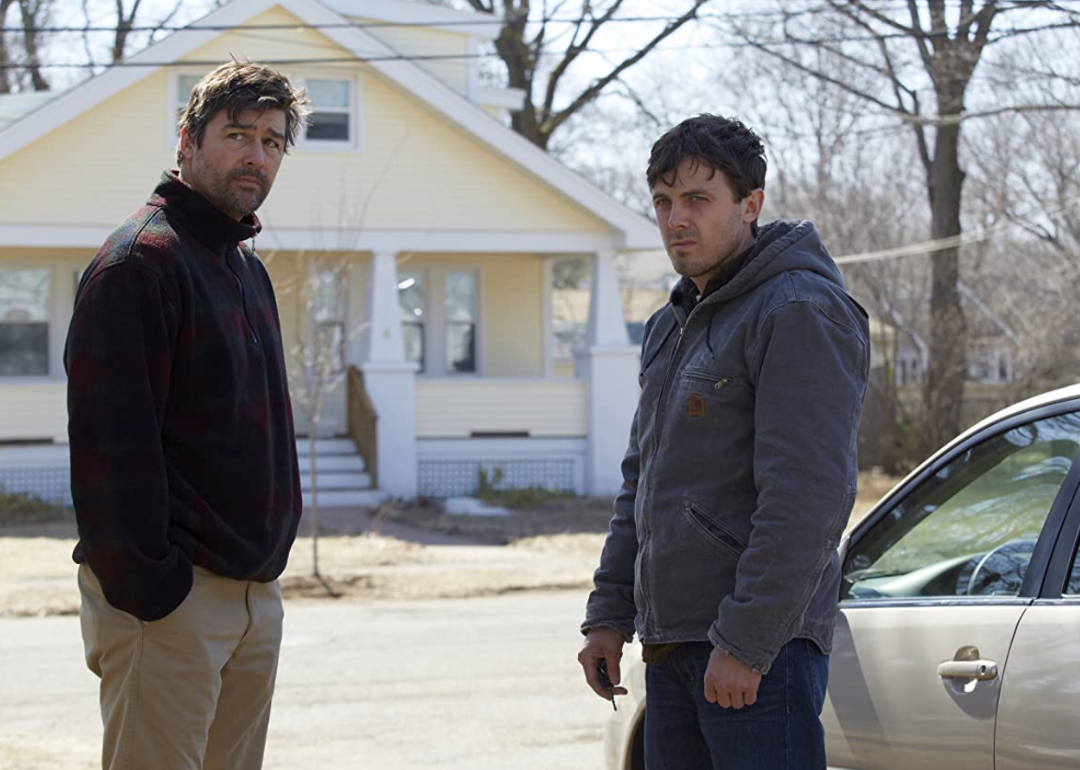
Amazon Studios
#90. Manchester by the Sea (2016)
Casey Affleck and Kyle Chandler in a scene from Manchester by the Sea.
– Director: Kenneth Lonergan
– Stacker score: 90.6
– Metascore: 96
– IMDb user rating: 7.8
– Runtime: 137 minutes
Dramas don’t get much more somber than this one from acclaimed writer and director Kenneth Lonergan. In the film, a brooding handyman (Casey Affleck) is given guardianship over his 16-year-old nephew and thereby forced to confront some traumatic demons from his own past. Michelle Williams co-stars and turns in one of her finest performances. The film took home two Academy Awards, including one for Affleck as Best Actor, as well as Best Original Screenplay.
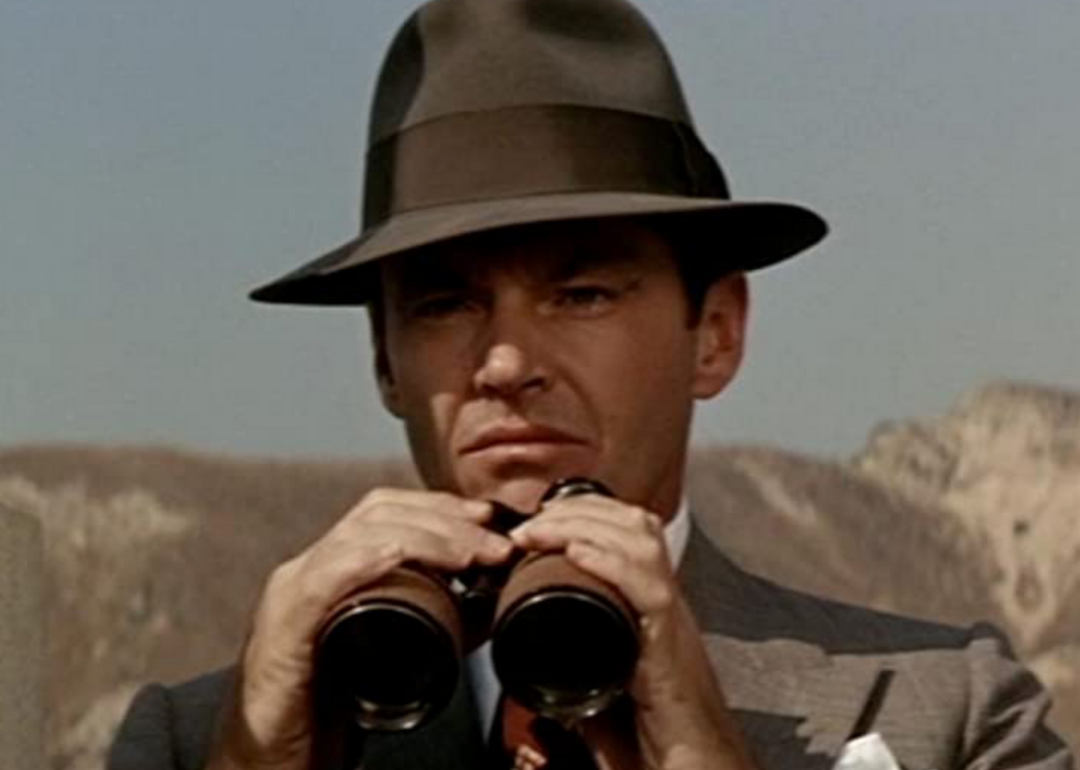
Paramount Pictures
#89. Chinatown (1974)
Jack Nicholson in a scene from Chinatown.
– Director: Roman Polanski
– Stacker score: 90.6
– Metascore: 92
– IMDb user rating: 8.2
– Runtime: 130 minutes
This noir-ish thriller takes place in 1937 and centers on a private investigator J.J. “Jake” Gittes (Jack Nicholson), who gets embroiled in a vicious scheme involving the water supply in Los Angeles. Frequently pointed to as an absolute masterclass in filmmaking, the movie delivers taut writing, exceptional acting, and an ending that goes straight to the bone. Faye Dunaway and John Huston co-star. Despite garnering an impressive 11 Oscar nominations, the film only took home one, for Best Original Screenplay.
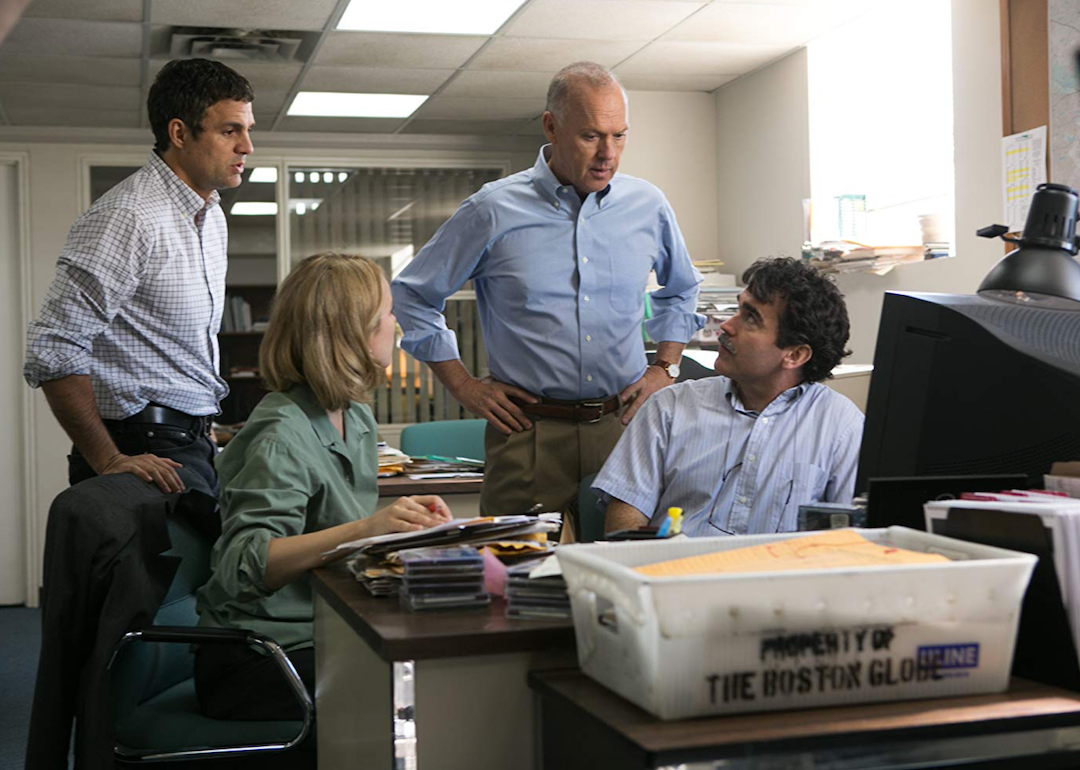
Participant Media
#88. Spotlight (2015)
Michael Keaton and cast in a scene from Spotlight.
– Director: Tom McCarthy
– Stacker score: 90.6
– Metascore: 93
– IMDb user rating: 8.1
– Runtime: 129 minutes
In this award-winning drama, Boston Globe reporters uncover a child abuse scandal involving the local Catholic archdiocese. Not only is the film based on a true story, but a number of real-life Boston Globe journalists were on hand as consultants. Reportedly, Walter Robinson even said of his on-screen counterpart, “If Michael Keaton robbed a bank, the police would quickly have me in handcuffs.” The film received six Academy Award nominations, stealing away with Best Picture and Best Original Screenplay.
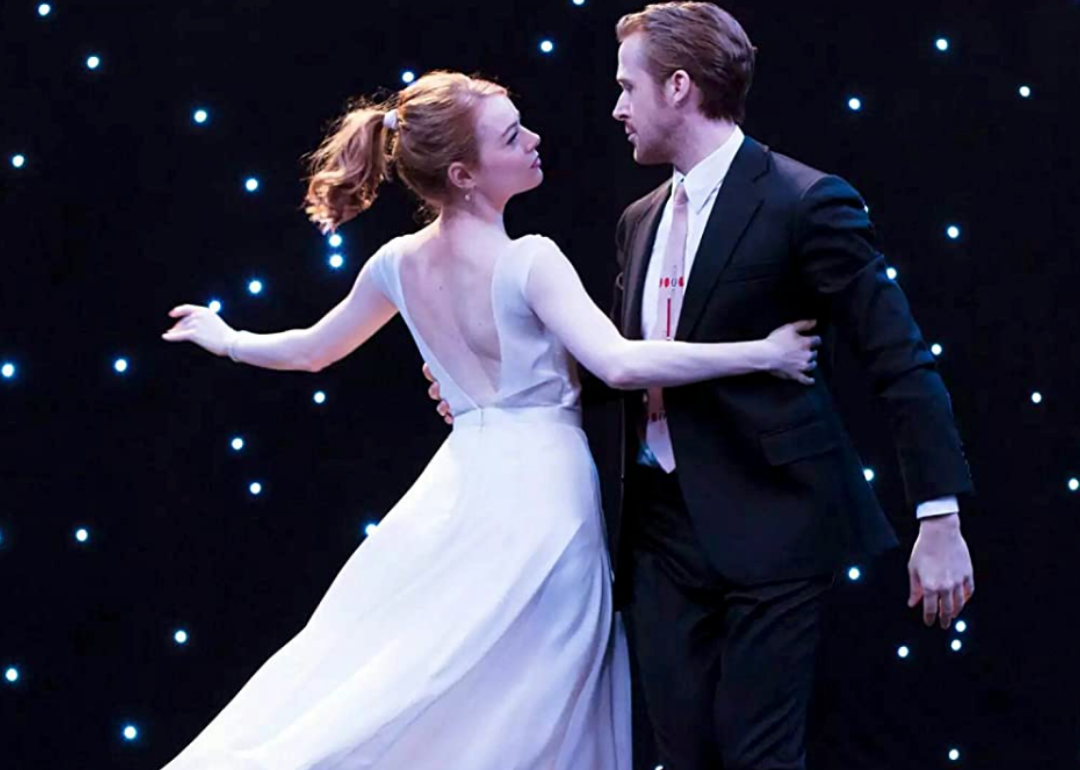
Summit Entertainment
#87. La La Land (2016)
Ryan Gosling and Emma Stone in a scene from La La Land.
– Director: Damien Chazelle
– Stacker score: 90.6
– Metascore: 94
– IMDb user rating: 8
– Runtime: 128 minutes
Modernizing the traditional musical, “La La Land” takes place in the city of dreams, and tells the story of two aspiring artists, one a musician (Ryan Gosling) and the other an actress (Emma Stone). Kicking the film off on a high note is a six-minute song-and-dance number that goes down in the middle of freeway traffic. Filming the scene took two days and involved stitching three consecutive shots together to create what appeared to be a single take. Among the movie’s 14 Academy Award nominations, Stone took home the Best Actress Oscar for her portrayal in the film, and Damien Chazelle for Best Director, making him the youngest winner at 32.
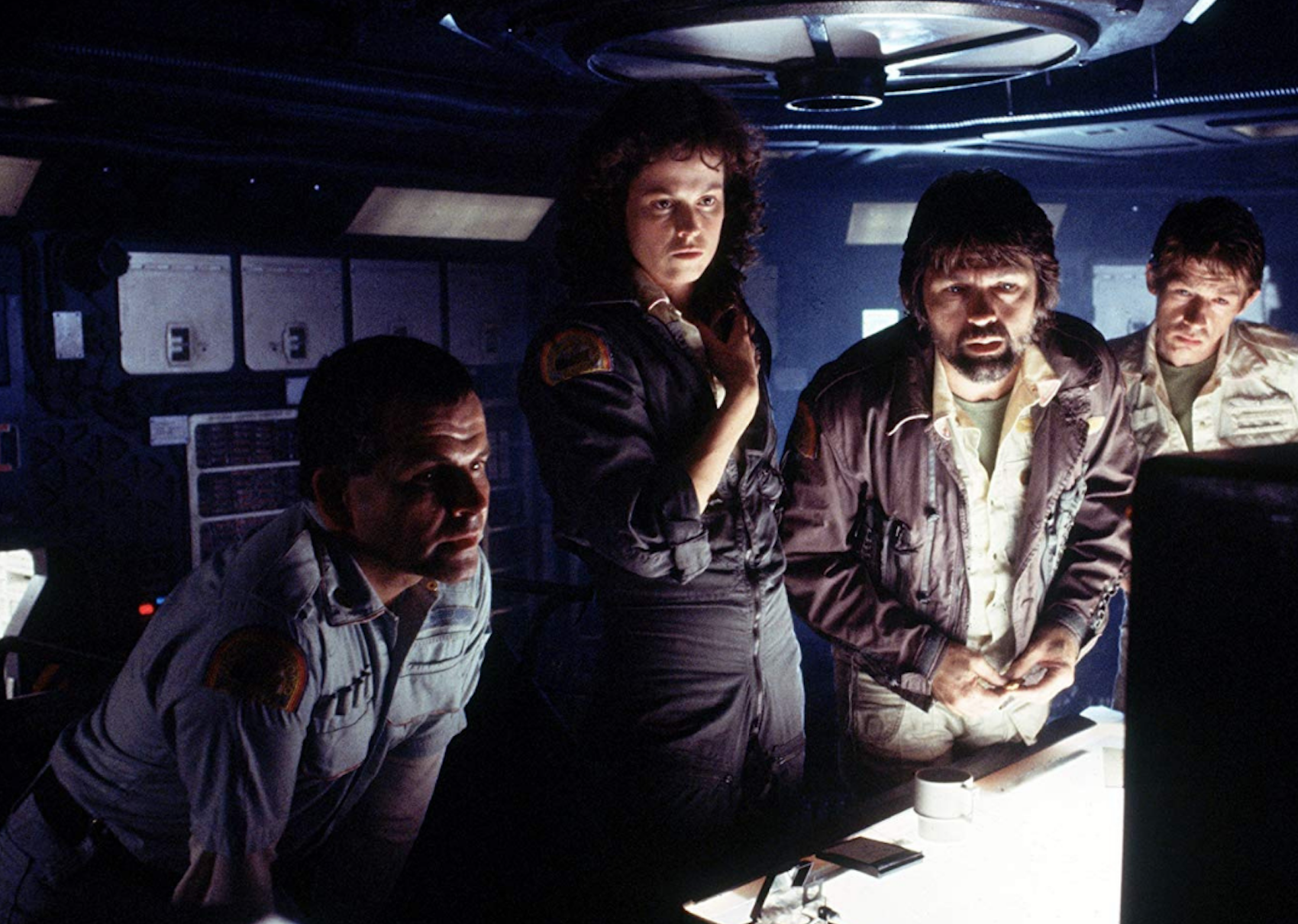
Twentieth Century-Fox Productions
#86. Alien (1979)
Actors in a scene from Alien.
– Director: Ridley Scott
– Stacker score: 90.6
– Metascore: 89
– IMDb user rating: 8.5
– Runtime: 117 minutes
The sparring between warrant officer Ellen Ripley (Sigourney Weaver) and the Alien spawned a franchise that included three sequels, two crossover films, and three prequels. “Alien: Awakening” is a long-gestating follow-up prequel. The otherworldly genesis tale—and all its associated hijinks—has all the ingredients for a riveting, sci-fi action saga. In 2002, the movie was selected by the Library of Congress for preservation in the National Film Registry.
You may also like: 100 best fantasy movies of all time
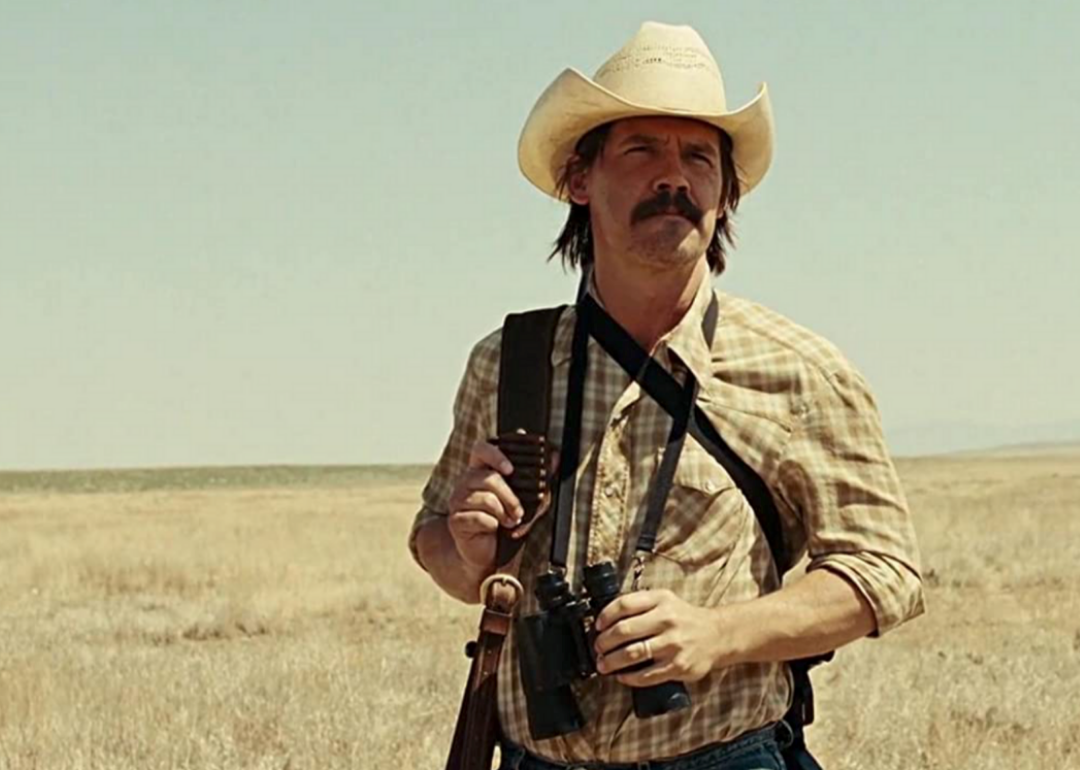
Paramount Vantage
#85. No Country for Old Men (2007)
Josh Brolin in a scene from No Country for Old Men.
– Directors: Ethan Coen, Joel Coen
– Stacker score: 90.6
– Metascore: 92
– IMDb user rating: 8.2
– Runtime: 122 minutes
Filmmaking duo the Coen brothers didn’t let the dense prose of Cormac McCarthy inhibit them from faithfully adapting “No Country for Old Men.” In the 2007 film, a man (Josh Brolin) comes upon $2 million in missing drug money and soon finds himself being hunted by a ruthless killer (Javier Bardem). For the most part, the movie stays true to the source material, while terrific performances bring every character even further to life. “No Country for Old Men” won four Oscars at the 80th Academy Awards, including Best Picture.
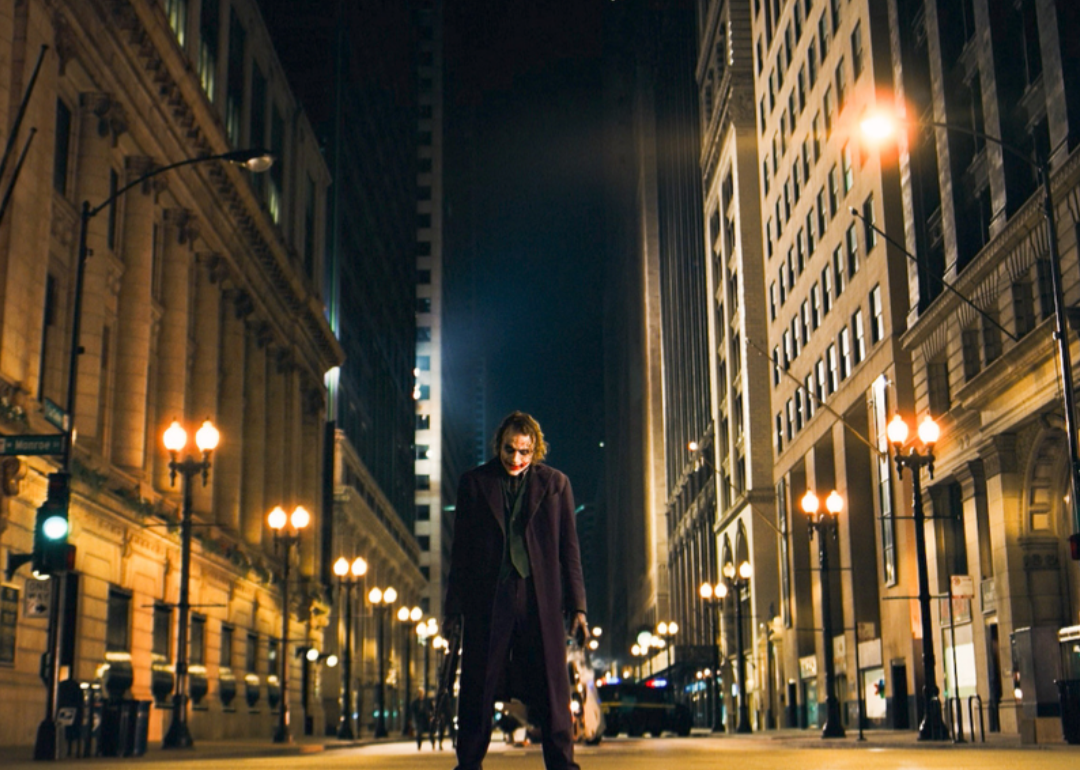
Warner Bros. Entertainment Inc.
#84. The Dark Knight (2008)
Heath Ledger in a scene from The Dark Knight.
– Director: Christopher Nolan
– Stacker score: 90.6
– Metascore: 84
– IMDb user rating: 9
– Runtime: 152 minutes
More than just the gold standard of comic book adaptations, “The Dark Knight” holds the #4 spot on the list of IMDb’s Highest Rated Titles. As the second film in Christopher Nolan’s heralded Dark Knight trilogy, it sees Christian Bale returning as the caped crusader and squaring off against Heath Ledger’s Joker. According to legend, Ledger drew inspiration from bands like The Sex Pistols and movies like “A Clockwork Orange” while preparing for the role. Among its eight Oscar nominations, “The Dark Knight” took home the awards for Best Sound Editing and Best Supporting Actor, posthumously awarded to Ledger.
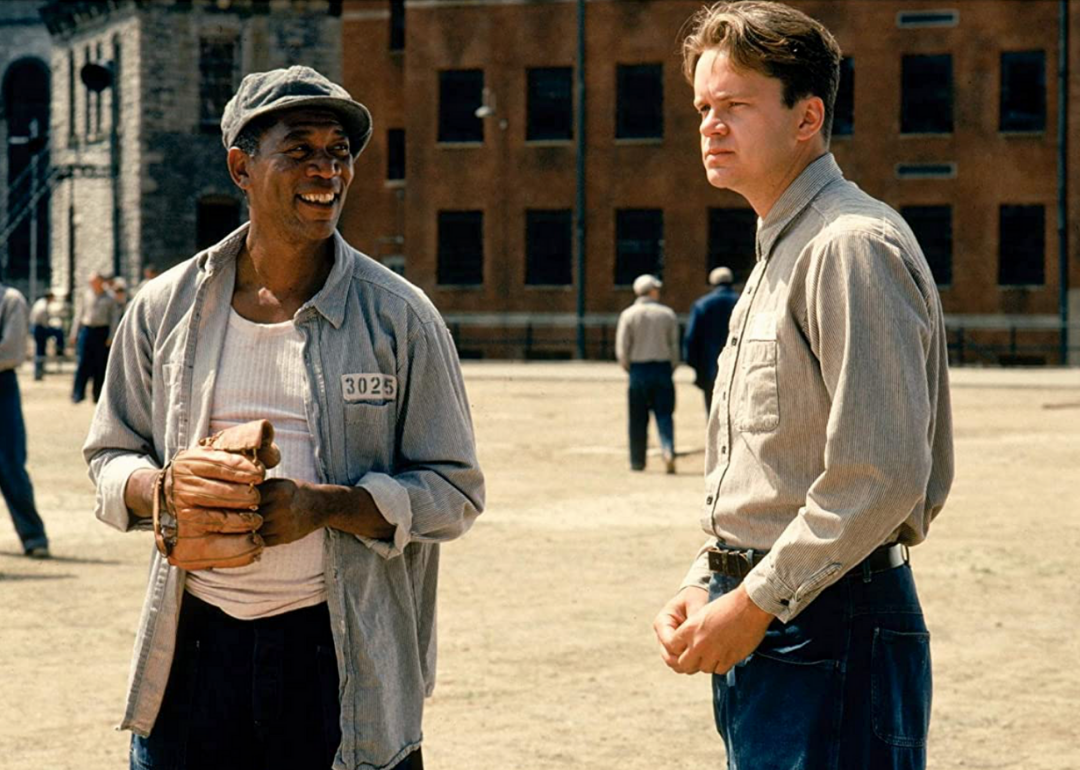
Castle Rock Entertainment
#83. The Shawshank Redemption (1994)
Morgan Freeman and Tim Robbins in a scene from The Shawshank Redemption.
– Director: Frank Darabont
– Stacker score: 90.6
– Metascore: 81
– IMDb user rating: 9.3
– Runtime: 142 minutes
Even decades after its release, “The Shawshank Redemption” still holds a top spot on IMDb’s list of Highest Rated Titles. Here on Stacker’s list, it doesn’t necessarily fare as well, but that’s not to say the film is anything short of spectacular. Based on a novella by Stephen King, it tells the story of Andy Dufresne (Tim Robbins), a banker convicted of his wife’s murder who grapples with decades of prison life starting in the mid-1940s. Helping him cope is a fellow inmate named Red (Morgan Freeman). In 2015, the Library of Congress chose the film for preservation in the National Film Registry.
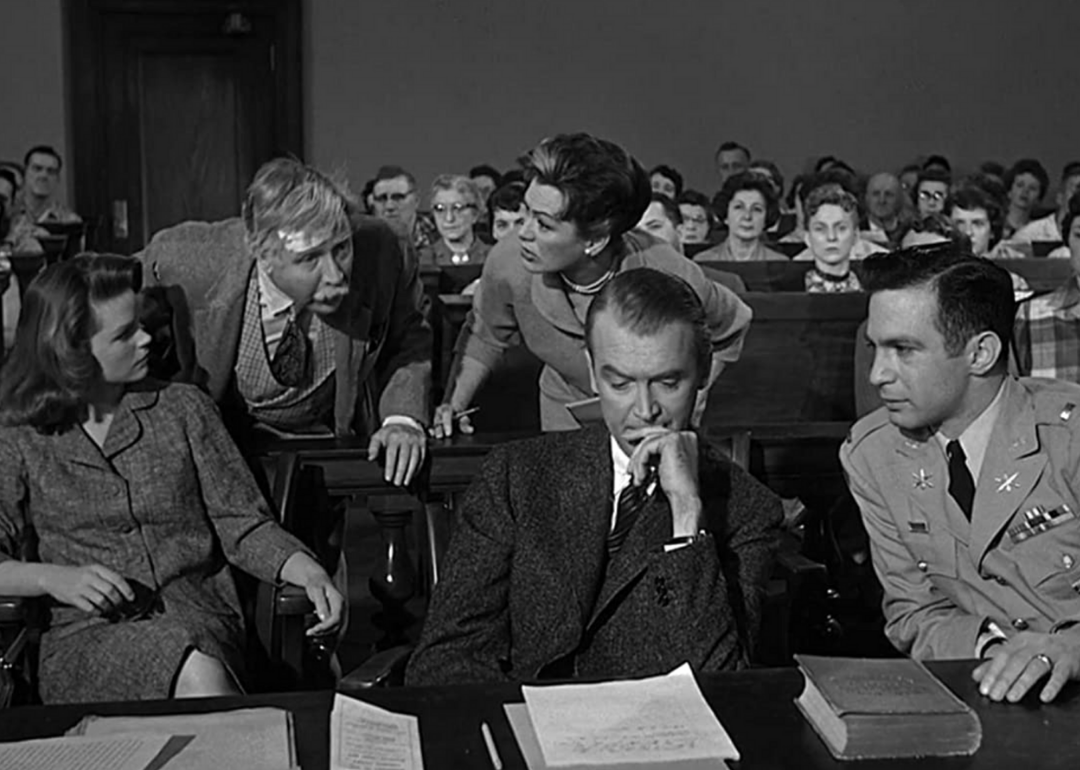
Columbia Pictures
#82. Anatomy of a Murder (1959)
Actors in a scene from Anatomy of a Murder.
– Director: Otto Preminger
– Stacker score: 91.1
– Metascore: 95
– IMDb user rating: 8
– Runtime: 161 minutes
Otto Preminger’s epic courtroom drama follows lawyer Paul Biegler (James Stewart) as he tries to clear Army Lt. Manion (Ben Gazzara) for the murder of an innkeeper Manion’s wife (Lee Remick) said raped her. In 2012, the film was selected for preservation in the National Film Registry by the Library of Congress. The film is based on the 1958 book by the same name, written by Michigan Supreme Court Justice John D. Voelker (pen name: Robert Traver), which is a fictionalized account of the real-life trial.
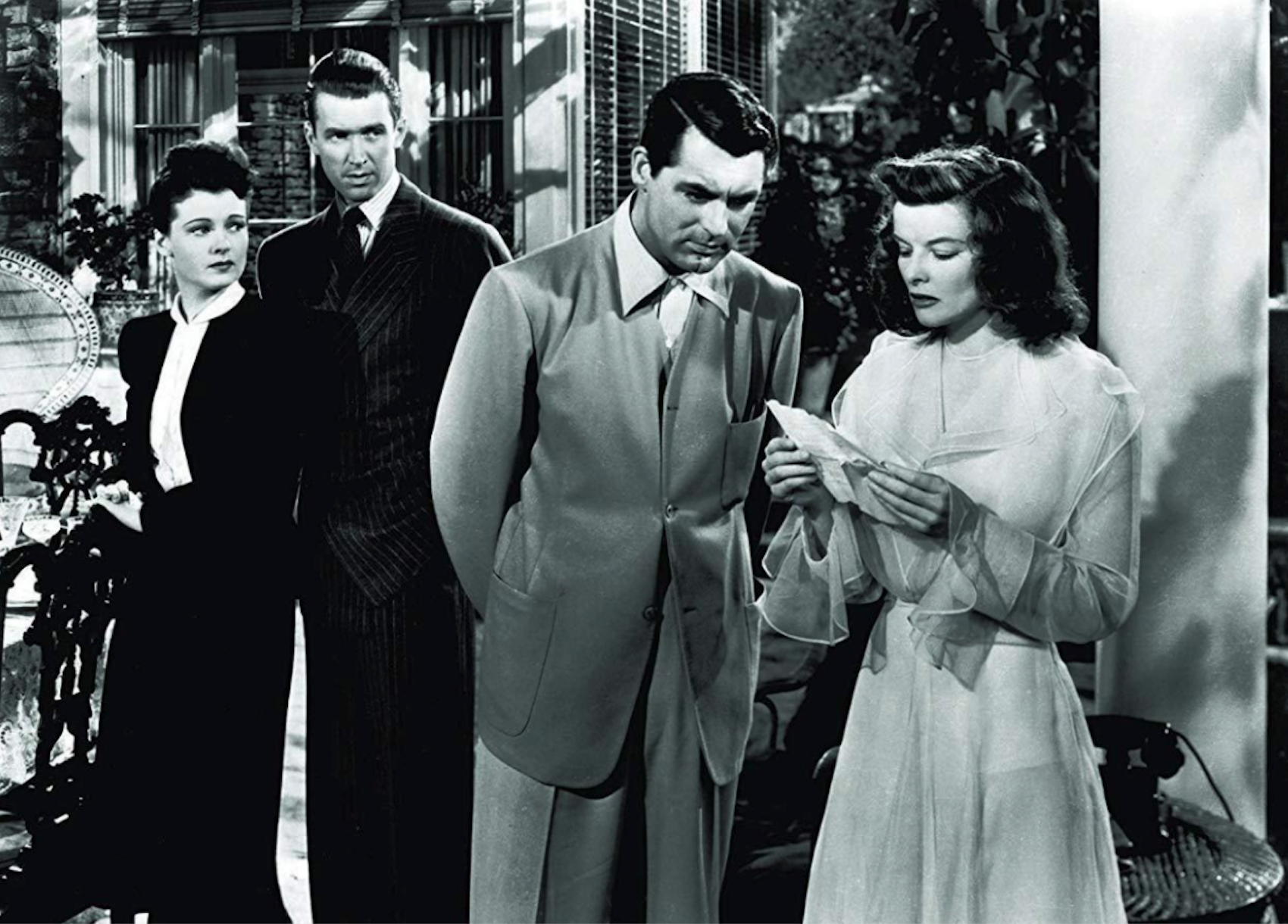
Metro-Goldwyn-Mayer
#81. The Philadelphia Story (1940)
Actors in a scene from The Philadelphia Story.
– Director: George Cukor
– Stacker score: 91.1
– Metascore: 96
– IMDb user rating: 7.9
– Runtime: 112 minutes
Starring Cary Grant, Katharine Hepburn, and James Stewart, this 1940 classic takes place days before socialite Tracy Lord (Hepburn) is set to remarry a stuffed-shirt millionaire. Things seem to be running smoothly enough until Lord’s ex-husband (Grant) and a reporter (Stewart) enter the picture and respectively express feelings for her. What ensues is an Old Hollywood romantic comedy of the highest order. The film took home two of the six Academy Awards for which it was nominated, including James Stewart for Best Actor and Donald Ogden Stewart for Best Adapted Screenplay.
You may also like: 25 iconic closing shots from film history
Riama Film
#80. La Dolce Vita (1960)
Actors in a scene from La Dolce Vita.
– Director: Federico Fellini
– Stacker score: 91.1
– Metascore: 95
– IMDb user rating: 8
– Runtime: 174 minutes
Spanning nearly three hours, “La Dolce Vita” functions as an early critique of gossip and celebrity culture via mid-20th century Rome. The film follows celebrity reporter Marcello Rubini (Marcello Mastroianni) as he lurks in the periphery of the spotlight, caught between his questionable professional tendencies and his own sneaking suspicion that the glamorous upper class isn’t all it’s cut out to be. “La Dolce Vita” was nominated for four Oscars: Best Director, Best Original Screenplay, Best Costume Design, and Best Art Direction, winning for Costume Design.
Paramount Pictures
#79. The Man Who Shot Liberty Valance (1962)
Actors in a scene from The Man Who Shot Liberty Valance.
– Director: John Ford
– Stacker score: 91.1
– Metascore: 94
– IMDb user rating: 8.1
– Runtime: 123 minutes
Director John Ford and actor John Wayne collaborated on several celebrated movies, including this one from 1962. In the film, a senator (James Stewart) returns to the town where he once famously shot a man named Liberty Valance. Or did he? As he recounts the tale, it’s revealed that a gunslinger named Tom Doniphon (John Wayne) might be the story’s true hero. “The Man Who Shot Liberty Valance” was selected for preservation in the National Film Registry by the Library of Congress in 2007.
Kurosawa Production Co.
#78. Yojimbo (1961)
Actors in a scene from Yojimbo.
– Director: Akira Kurosawa
– Stacker score: 91.1
– Metascore: 93
– IMDb user rating: 8.2
– Runtime: 110 minutes
This legendary samurai film stars Toshiro Mifune as a nameless, masterless samurai who takes refuge in a village where two powerful businessmen are warring over the local gambling scene. When the samurai offers to serve as bodyguard for both of them, the tension reaches a boiling point. “Yojimbo” was remade twice as a Western—by Walter Hill in 1996 as “Last Man Standing,” and Sergio Leone in 1964 as “A Fistful of Dollars.”
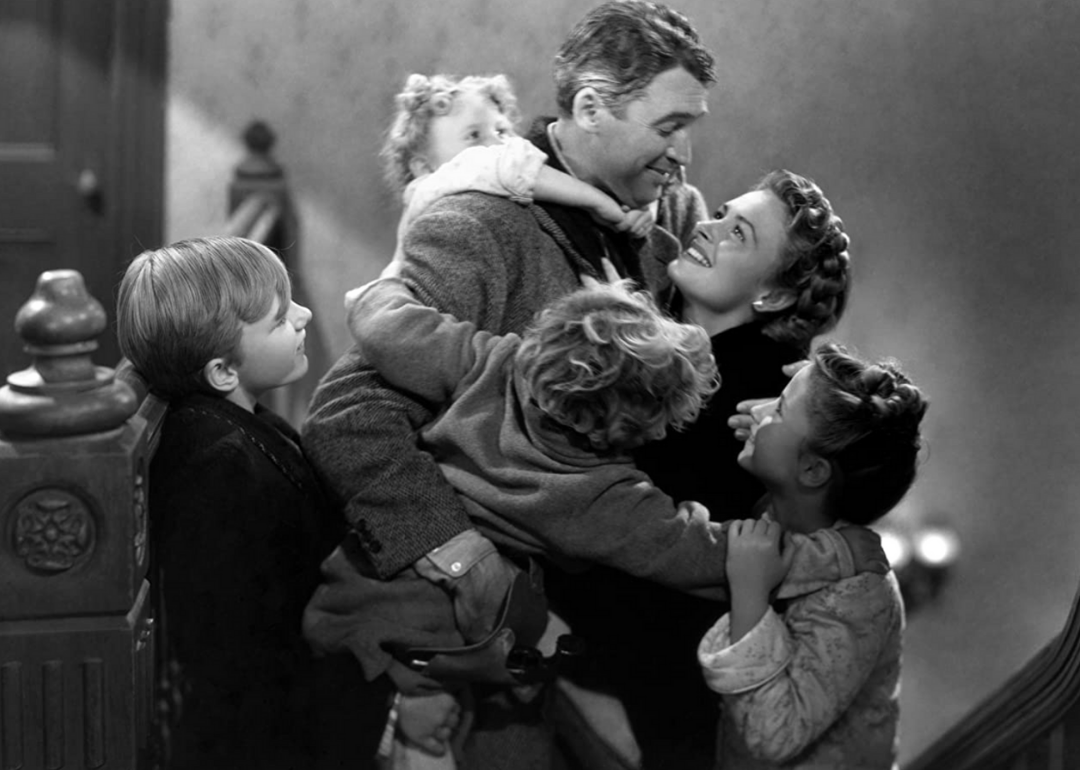
Liberty Films
#77. It’s a Wonderful Life (1946)
Actors in a scene from It’s a Wonderful Life.
– Director: Frank Capra
– Stacker score: 91.1
– Metascore: 89
– IMDb user rating: 8.6
– Runtime: 130 minutes
This 1946 classic might make for ideal holiday viewing, but the truth is there’s never a wrong time to watch it. Directed by Frank Capra and starring James Stewart, “It’s a Wonderful Life” shows a businessman (Stewart) what life would have been like had he never existed. To think, the movie itself wouldn’t exist had a frustrated writer named Philip Van Doren Stern not sent his rejected short story out as a Christmas card to all his friends and loved ones. The classic earned five Academy Award nominations, including Best Picture.

Walt Disney Productions
#76. Beauty and the Beast (1991)
An animated still from Beauty and the Beast.
– Directors: Gary Trousdale, Kirk Wise
– Stacker score: 91.1
– Metascore: 95
– IMDb user rating: 8
– Runtime: 84 minutes
The 2017 live-action remake of “Beauty and the Beast” might have raked in a large sum at the box office, but it’s the 1991 animated version that holds up as a bona fide work of art. Released by Disney amid a major comeback, the film tells a tale as old as time. It’s about a young prince who’s doomed to exist as a beast unless he can earn the love of his captive and thereby reverse the spell. It’s a charming movie, provided one doesn’t think too hard about the somewhat disturbing implications. The film made history when it became the first animated film to be nominated for the Oscar for Best Picture at the 64th Academy Awards.
You may also like: Mistakes from the 50 best movies of all time
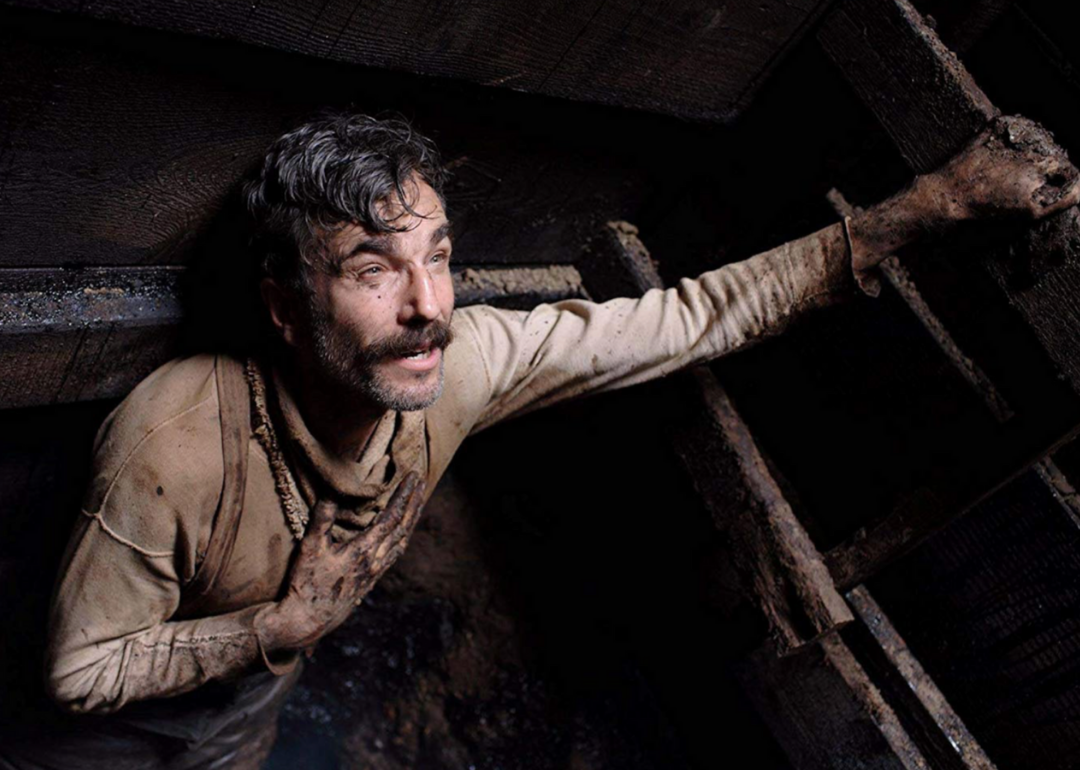
Paramount Vantage
#75. There Will Be Blood (2007)
Daniel Day-Lewis in a scene from There Will Be Blood.
– Director: Paul Thomas Anderson
– Stacker score: 91.1
– Metascore: 93
– IMDb user rating: 8.2
– Runtime: 158 minutes
Loosely inspired by an Upton Sinclair novel, this Paul Thomas Anderson drama follows oilman Daniel Plainview (Daniel Day-Lewis) as he rises to power at the turn of the century. One of the few things getting in Plainview’s way is a local pastor named Eli, played brilliantly by Paul Dano. As the two figures clash repeatedly, the film itself becomes a gripping study of ambition and exploitation. The film took home two of the eight Oscars for which it was nominated, including Best Actor and Best Cinematography.
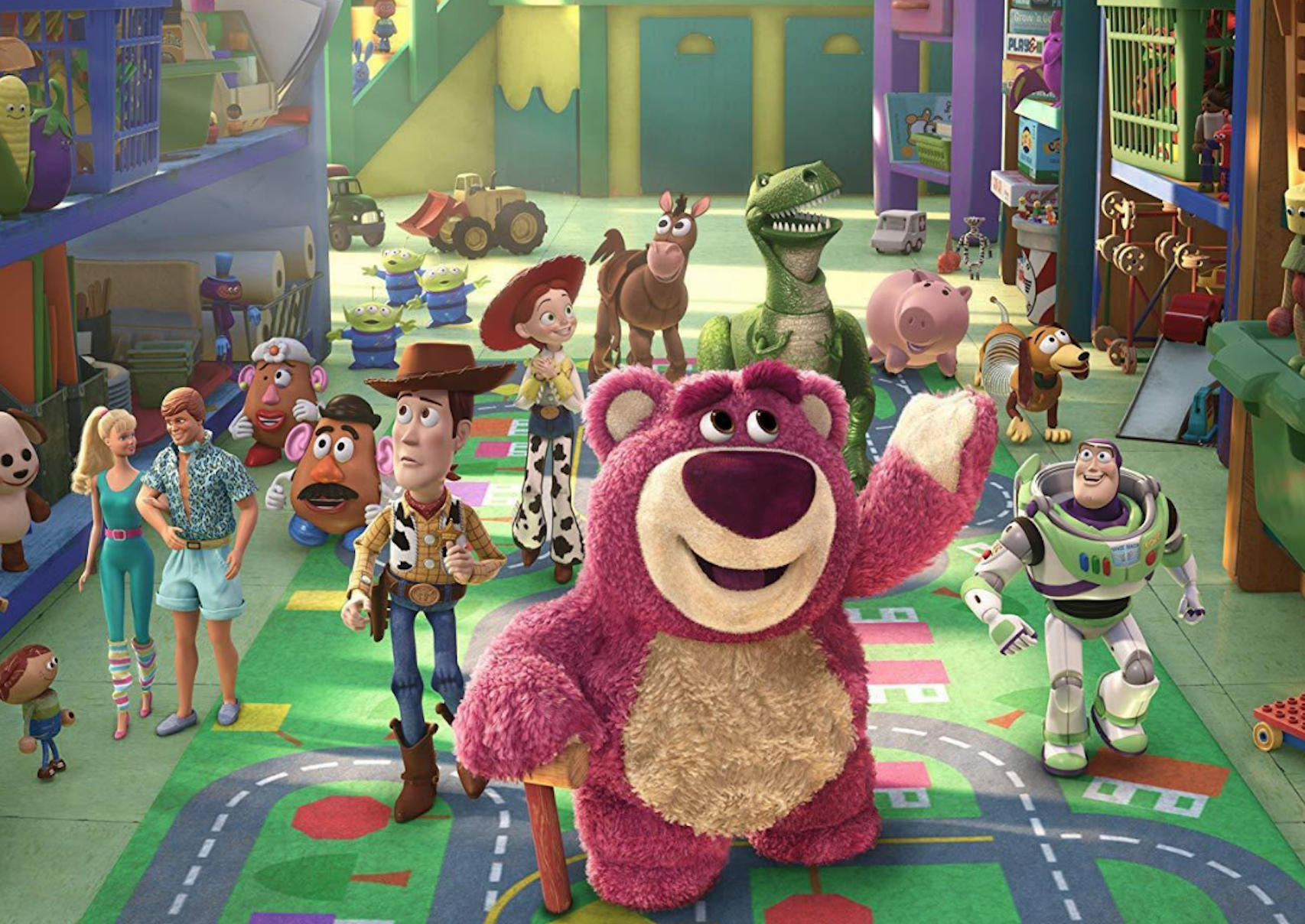
Walt Disney Pictures
#74. Toy Story 3 (2010)
Animated still with characters from Toy Story 3.
– Director: Lee Unkrich
– Stacker score: 91.1
– Metascore: 92
– IMDb user rating: 8.3
– Runtime: 103 minutes
Woody (voiced by Tom Hanks) and the gang are back for the third installment in the Toy Story franchise. This time around, Andy is college-bound, and hence a little too old to play with toys. Following his negligence, the toys end up at a local day care center, where the children are ruthless, and an evil bear named Lotso runs the show at night. Years after earning $1.067 billion worldwide, “Toy Story 3” was followed by the 2019 sequel, “Toy Story 4,” which grossed $1.073 billion.
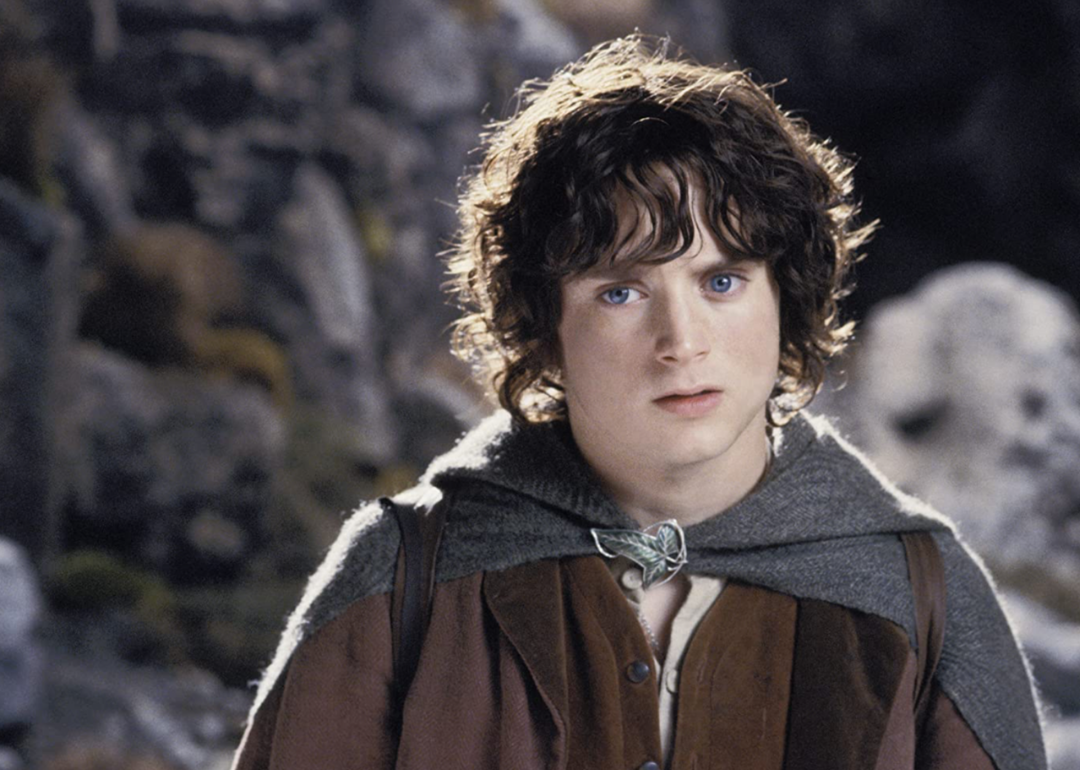
New Line Cinema
#73. The Lord of the Rings: The Two Towers (2002)
Elijah Wood in The Lord of the Rings: The Two Towers.
– Director: Peter Jackson
– Stacker score: 91.1
– Metascore: 87
– IMDb user rating: 8.8
– Runtime: 179 minutes
Next to the Star Wars saga, Peter Jackson’s Lord of the Rings trilogy, and the subsequent Hobbit prequels, endures as one of the most celebrated franchises of all time. In this 2002 installment, Frodo and Sam continue their journey to Mordor, in hopes of destroying an all-powerful ring. Joining them for the trip is a shifty creature named Gollum, who has plans of his own. The movie garnered six nominations at the 75th Academy Awards, winning for Best Sound Editing and Best Visual Effects.
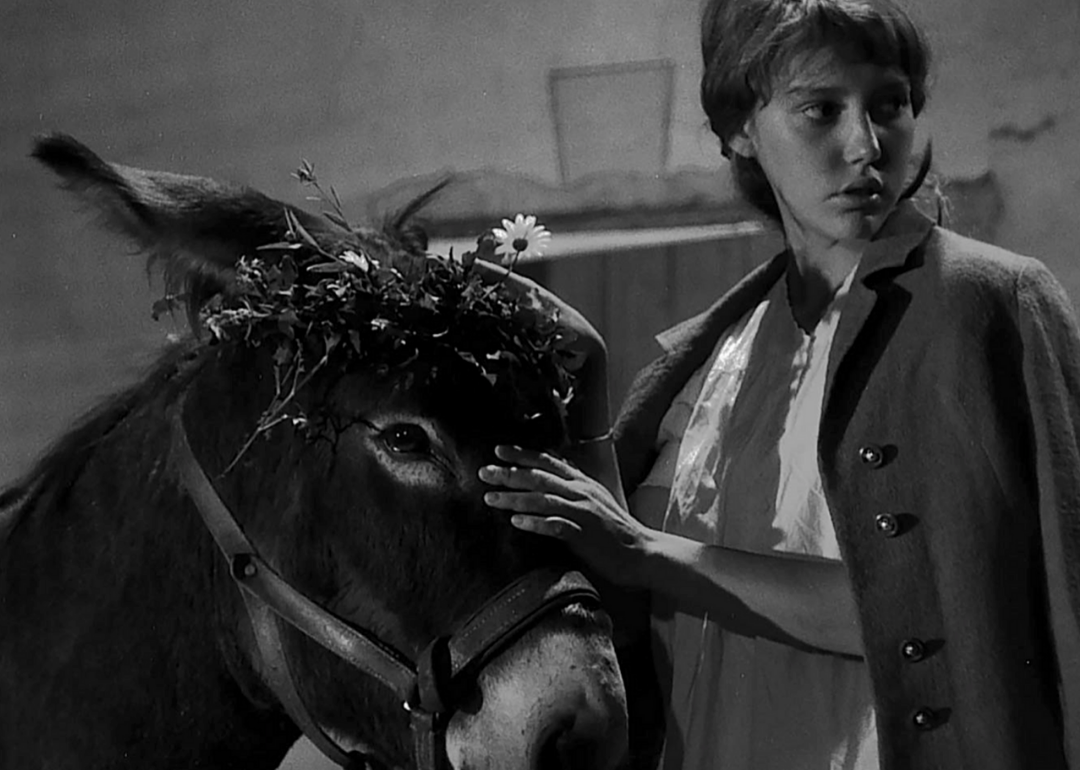
Argos Films
#72. Au hasard Balthazar (1966)
Anne Wiazemsky in a scene from Au Hazard Balthazar.
– Director: Robert Bresson
– Stacker score: 91.7
– Metascore: 98
– IMDb user rating: 7.8
– Runtime: 95 minutes
Partially inspired by a passage from Fyodor Dostoevsky’s novel “The Idiot,” this meditative film follows Balthazar, the beloved pet donkey of young farm girl Marie (Anne Wiazemsky). When the two are separated, their lives mirror each other in curious ways, as they endure cruelty from others and search for small moments of beauty and peace. Director Jean-Luc Godard famously described “Au hasard Balthazar” as “the world in an hour and a half,” noting its empathetic, elliptical tale about the relentless cycle of life.
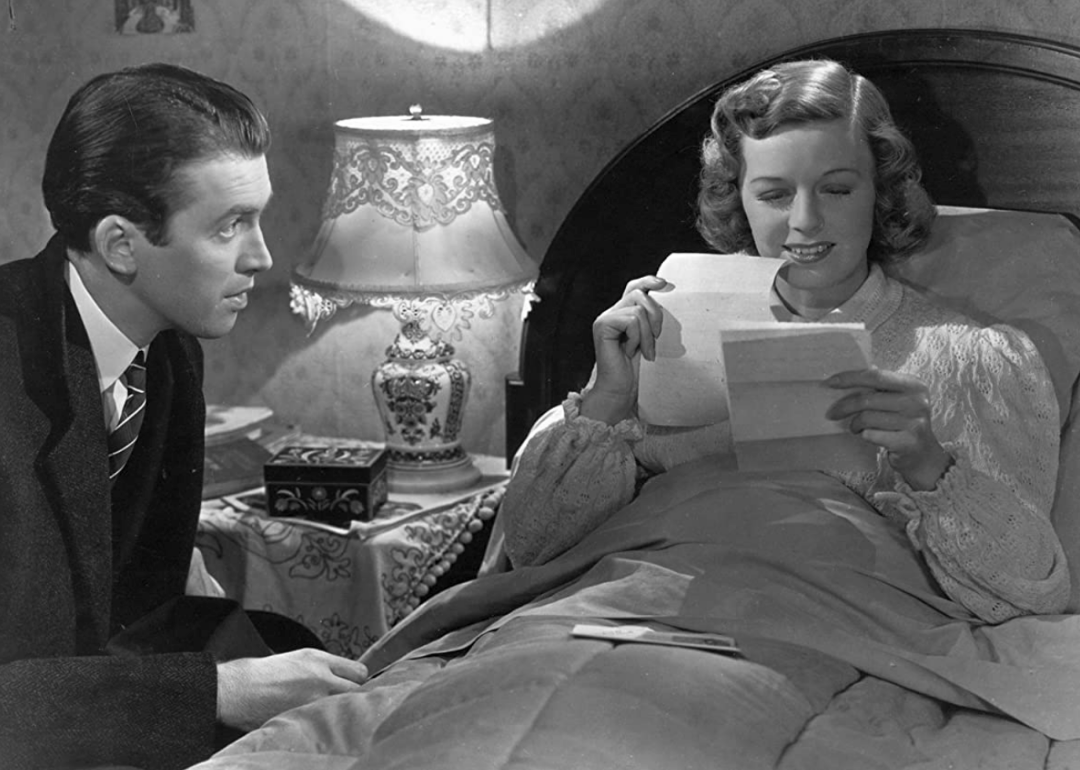
Metro-Goldwyn-Mayer (MGM)
#71. The Shop Around the Corner (1940)
Actors in a scene from The Shop Around the Corner.
– Director: Ernst Lubitsch
– Stacker score: 91.7
– Metascore: 96
– IMDb user rating: 8
– Runtime: 99 minutes
In this classic rom-com, Jimmy Stewart and Margaret Sullavan play Alfred and Klara, employees at a Budapest general store with a bitter rivalry. Unbeknownst to them, they’re falling for each other as anonymous pen pals. “The Shop Around the Corner” was the inspiration for Nora Ephron’s iconic 1998 film “You’ve Got Mail,” in which the premise is updated to include email.
You may also like: 100 best American movies of all time
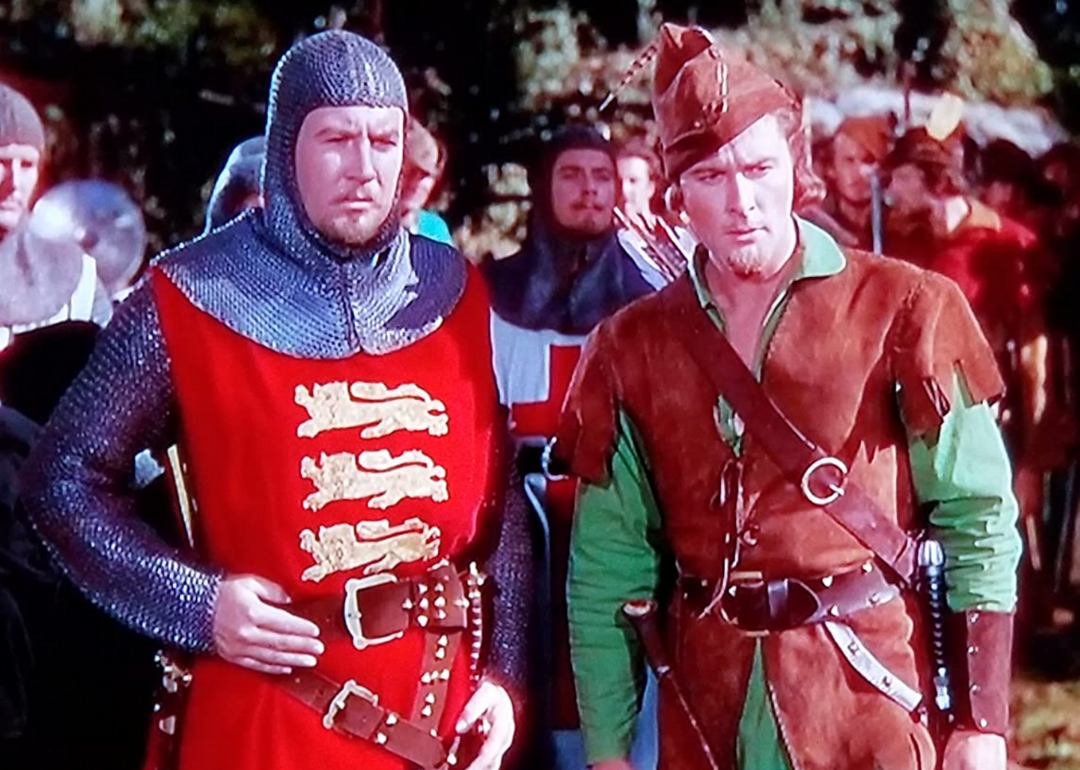
Warner Bros.
#70. The Adventures of Robin Hood (1938)
Errol Flynn and Ian Hunter in The Adventures of Robin Hood.
– Directors: Michael Curtiz, William Keighley
– Stacker score: 91.7
– Metascore: 97
– IMDb user rating: 7.9
– Runtime: 102 minutes
The story of Robin Hood has been adapted for the big screen multiple times since the dawn of cinema, but it’s this 1938 version that ranks as the best one, according to fans and critics alike. Famously starring Errol Flynn in the title role, the movie sees Robin Hood leading the resistance against an oppressive king. Not only was the film a massive success upon its initial release, but it raked in even more cash after being re-released in technicolor 10 years later. In 1995, the movie was selected for preservation by the National Film Registry.
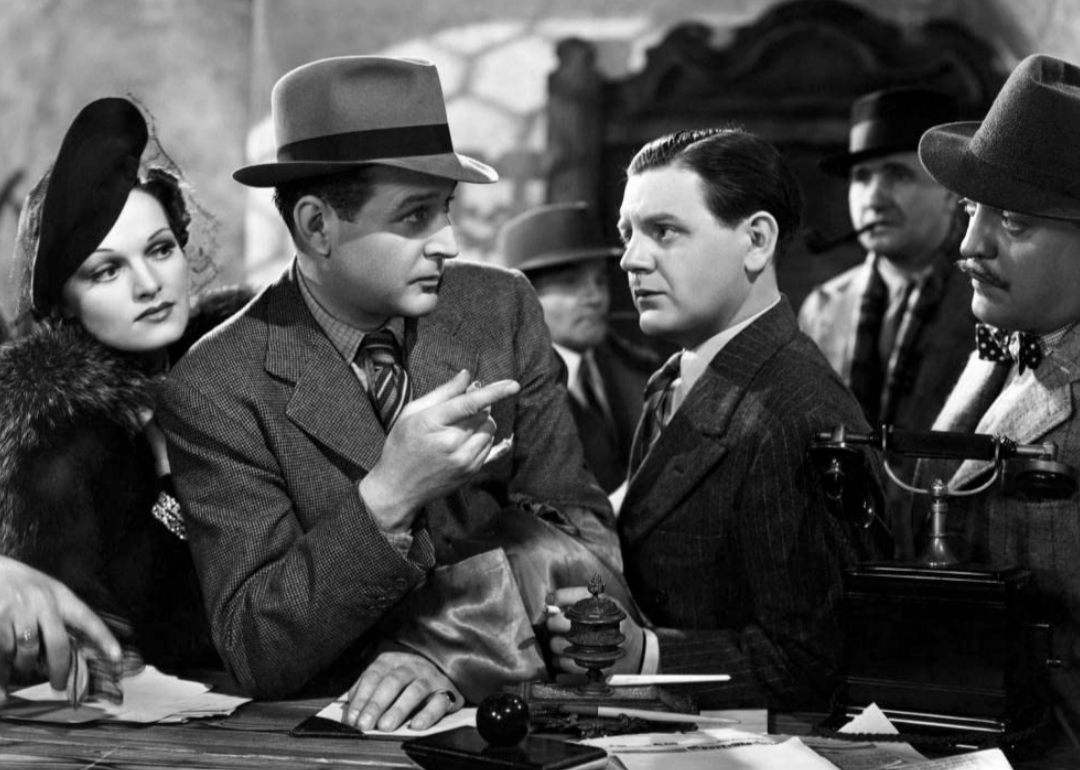
Gainsborough Pictures
#69. The Lady Vanishes (1938)
Actors in a film still from The Lady Vanishes.
– Director: Alfred Hitchcock
– Stacker score: 91.7
– Metascore: 98
– IMDb user rating: 7.8
– Runtime: 96 minutes
“The Lady Vanishes” was the film that secured Alfred Hitchcock’s fruitful career in Hollywood, as he moved from England to the United States shortly after its success. The movie stars Margaret Lockwood as Iris, a young woman who’s startled to discover that the older woman (May Whitty) she befriended on a train journey has vanished. When almost no one else on the train seems to believe her, Iris sets out to investigate the mystery with her soon-to-be-paramour and fellow traveler Gilbert (Michael Redgrave).
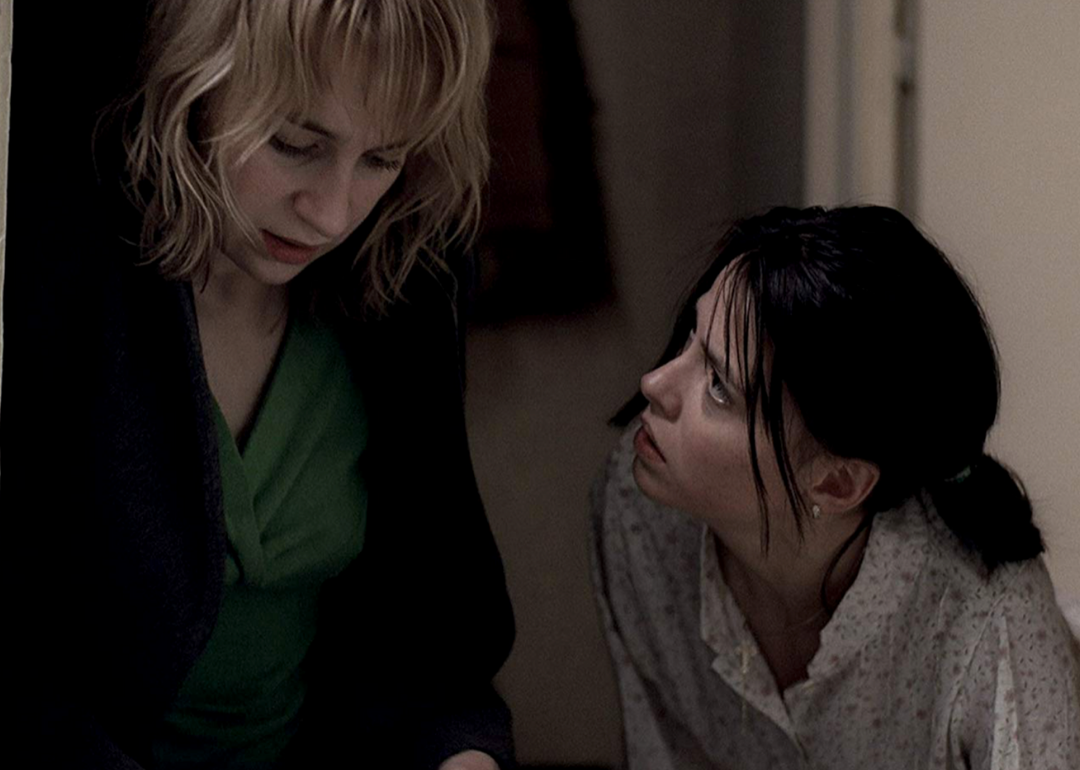
Mobra Films
#68. 4 Months, 3 Weeks and 2 Days (2007)
Anamaria Marinca and Laura Vasiliu in a scene from 4 Months, 3 Weeks and 2 Days.
– Director: Cristian Mungiu
– Stacker score: 91.7
– Metascore: 97
– IMDb user rating: 7.9
– Runtime: 113 minutes
“4 Months, 3 Weeks and 2 Days” propelled Romanian director Cristian Mungiu to international prominence, as his movie won the Palme d’Or at the Cannes Film Festival. The film takes place in 1987, as roommates Otilia (Anamaria Marinca) and Găbița (Laura Vasiliu) attempt to secure an illegal abortion for Găbița under a restrictive Romanian dictatorship. Although it was shut out of the Academy Awards, Mungiu’s film remains an unfortunately timely portrayal of women fighting for bodily autonomy against the backdrop of fascism.
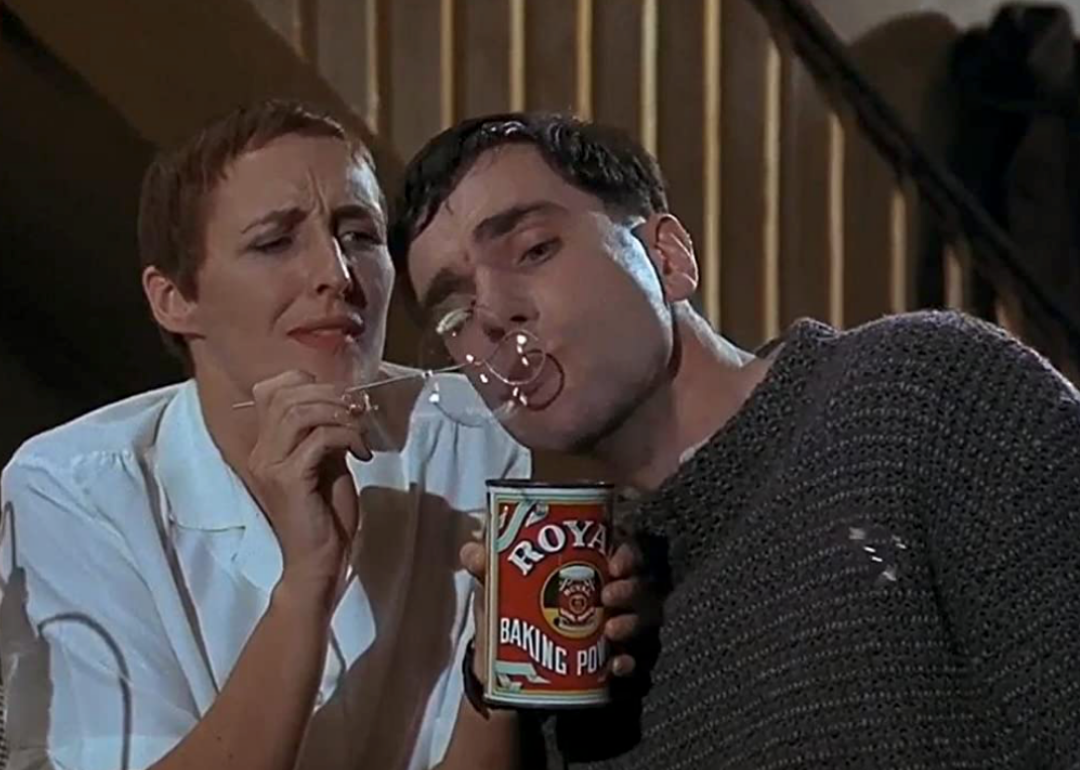
Miramax
#67. My Left Foot (1989)
Daniel Day-Lewis and Fiona Shaw in a scene from My Left Foot.
– Director: Jim Sheridan
– Stacker score: 91.7
– Metascore: 97
– IMDb user rating: 7.9
– Runtime: 103 minutes
Daniel Day-Lewis won his first Academy Award for his portrayal of real-life Irishman Christy Brown, a working-class man with cerebral palsy who became a well-known artist. Based on Brown’s 1954 memoir of the same name, “My Left Foot” received five Oscar nominations, with Day-Lewis and co-star Brenda Fricker taking home acting trophies. A notorious method actor, Day-Lewis refused to do anything Brown wouldn’t do, living in a wheelchair and asking crew members for help eating.
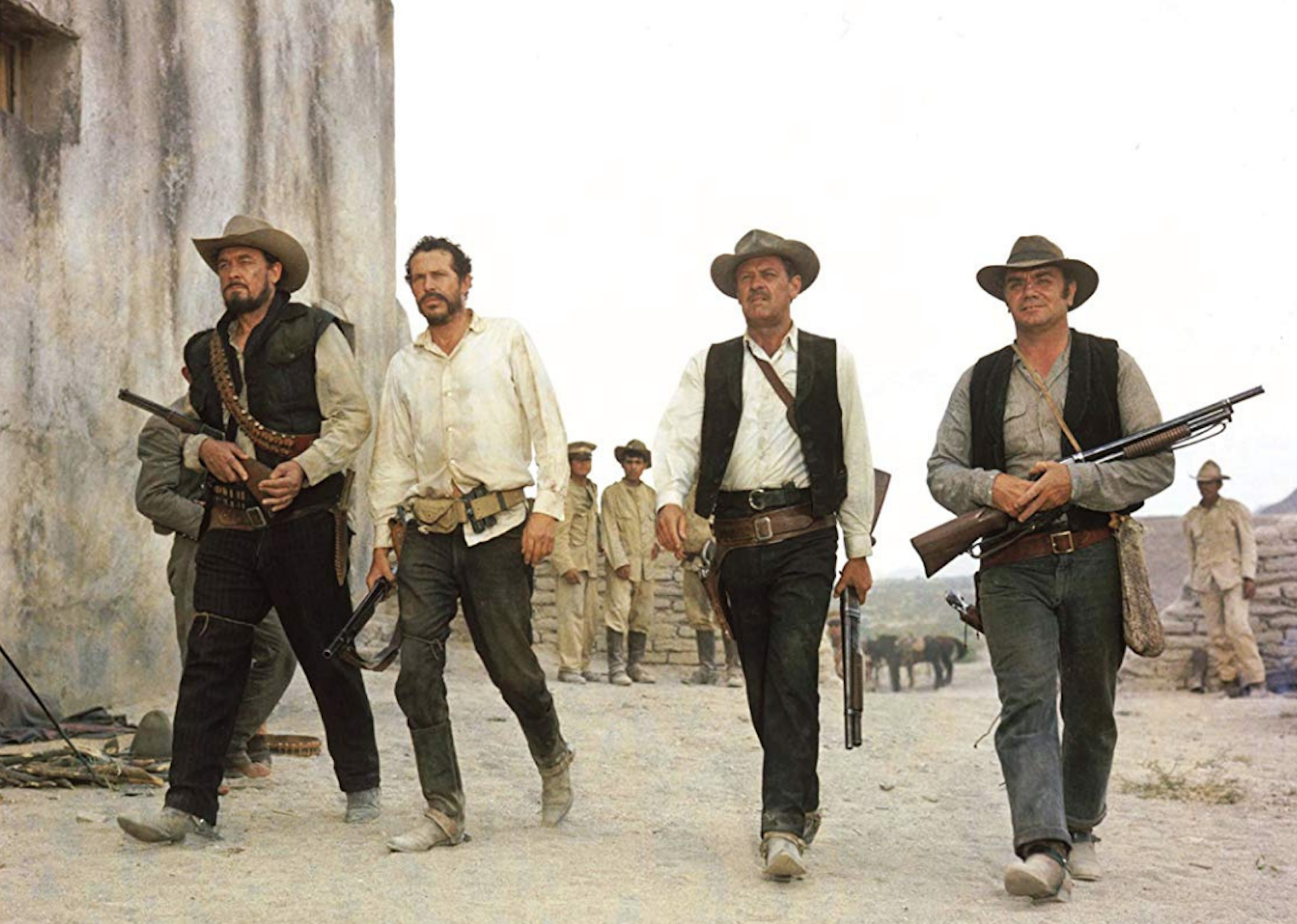
Warner Brothers/Seven Arts
#66. The Wild Bunch (1969)
Actors in a scene from The Wild Bunch’
– Director: Sam Peckinpah
– Stacker score: 91.7
– Metascore: 97
– IMDb user rating: 7.9
– Runtime: 135 minute.
All-stars Ernest Borgnine, William Holden, and Robert Ryan deliver stunning performances as outlaws past their prime in this timeless Western that was nominated for two Oscars. The film about men trying to contend with the ever-evolving world around them caused a stir for its raw depictions of survival and what was then considered gratuitous violence. The film was nominated for two Academy Awards, including Best Original Score and Best Original Screenplay.
You may also like: Incredible filming locations from popular movies
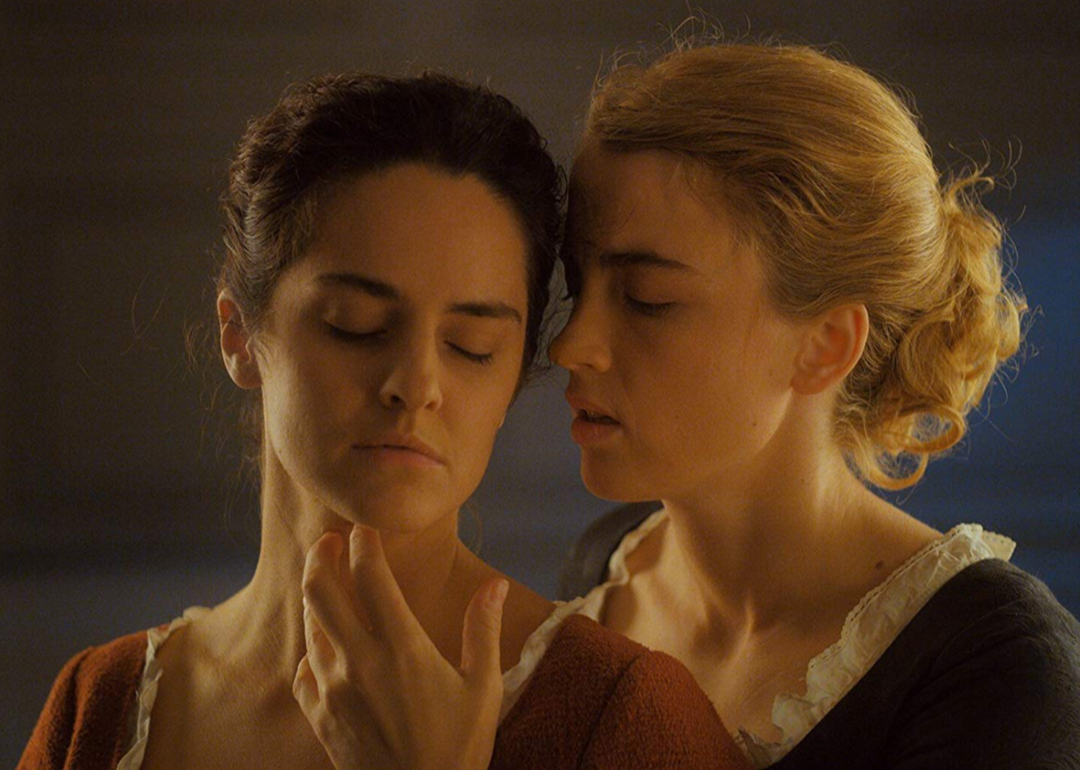
Lilies Films
#65. Portrait of a Lady on Fire (2019)
Adele Haenel and Noemie Merlant in a scene from Portrait of a Lady on Fire.
– Director: Céline Sciamma
– Stacker score: 91.7
– Metascore: 95
– IMDb user rating: 8.1
– Runtime: 122 minutes
In Céline Sciamma’s revelatory romantic drama “Portrait of a Lady on Fire,” female painter Marianne (Noémie Merlant) is commissioned to paint a covert wedding portrait of headstrong, resistant bride-to-be Héloïse (Adèle Haenel) in 18th-century Brittany. However, the two soon embark on a romance, challenging antiquated beliefs about the artist versus muse relationship, and the passionate, sometimes liberating act of looking. “Portrait of a Lady on Fire” won the Queer Palm at the 2019 Cannes Film Festival, marking the first time a film directed by a woman won the award.
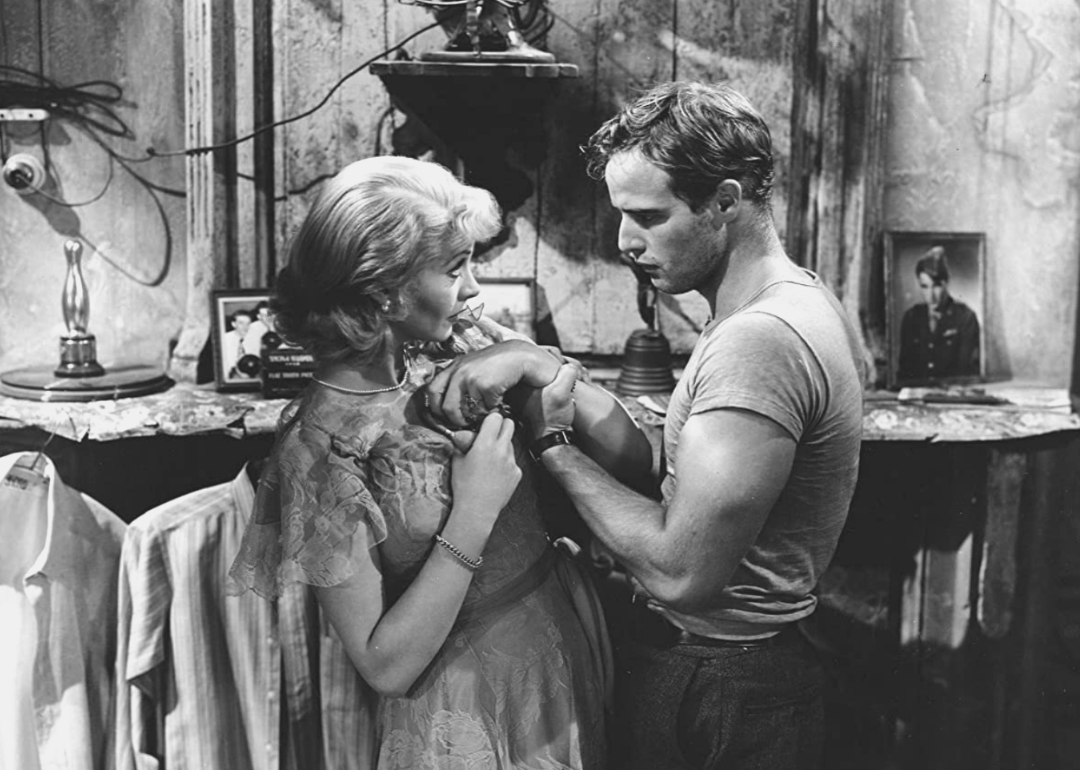
Warner Bros.
#64. A Streetcar Named Desire (1951)
Marlon Brando and Vivien Leigh in a scene from A Streetcar Named Desire.
– Director: Elia Kazan
– Stacker score: 91.7
– Metascore: 97
– IMDb user rating: 7.9
– Runtime: 122 minutes
A renowned play by Tennessee Williams leaped onto the big screen in 1951, with Elia Kazan helming, and Marlon Brando and Vivien Leigh tackling the respective lead roles. In the film, a troubled woman named Blanche DuBois (Leigh) moves in with her sister Stella (Kim Hunter), only to find herself at odds with Stella’s brutish husband, Stanley (Brando). This is one of only two films in history to win three Academy Awards for acting. Additionally, the blockbuster, which banked an estimated $4.25 million at the box office, also garnered Brando his fourth consecutive Oscar nomination for Best Actor.
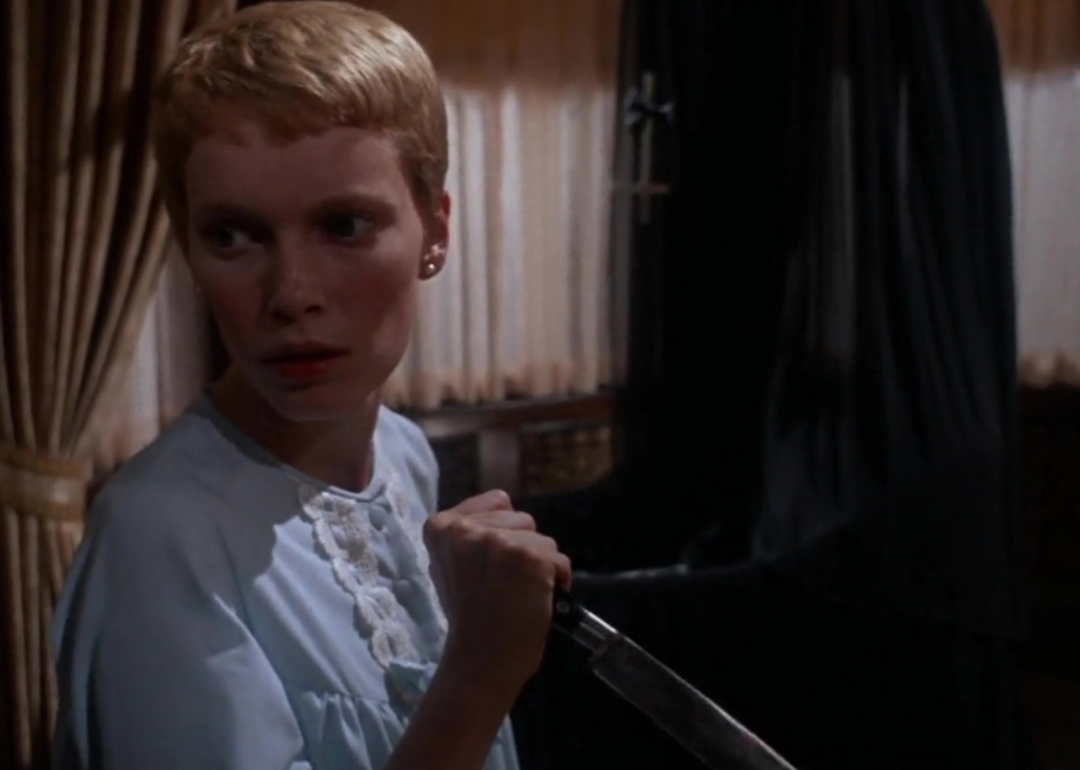
William Castle Enterprises
#63. Rosemary’s Baby (1968)
Mia Farrow in Rosemary’s Baby.
– Director: Roman Polanski
– Stacker score: 91.7
– Metascore: 96
– IMDb user rating: 8
– Runtime: 137 minutes
A true exercise in terror, this 1968 film stars Mia Farrow as Rosemary, a woman who goes to sleep one night and wakes up pregnant the next day. As many sinister events unfold around her, Rosemary realizes her feverish nightmare on the night in question wasn’t a nightmare after all and that she might be carrying the spawn of Satan himself. Making the creepy premise that much creepier is some haunting theme music from Krzysztof Komeda. In 2014, the cult horror classic was selected by the Library of Congress for preservation in the National Film Registry.
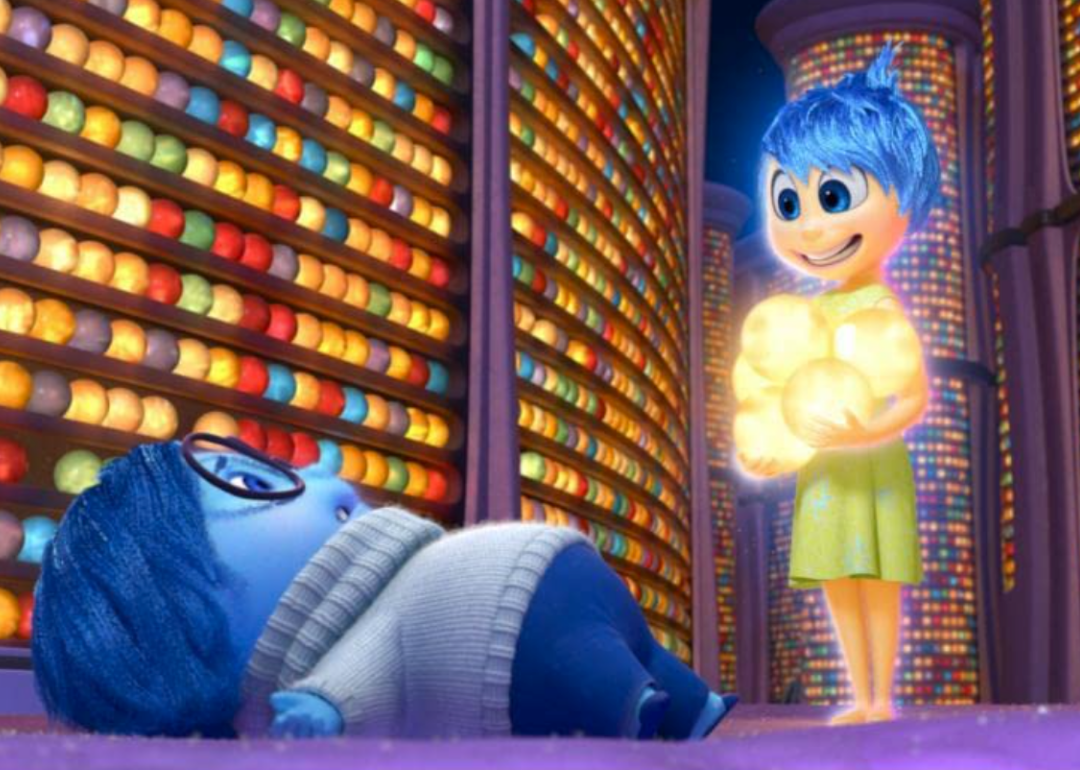
Disney/Pixar
#62. Inside Out (2015)
An illustrated frame from Inside Out.
– Directors: Pete Docter, Ronnie Del Carmen
– Stacker score: 91.7
– Metascore: 94
– IMDb user rating: 8.2
– Runtime: 95 minutes
Representing yet another home run from Pixar, this 2015 animated feature primarily takes place within the mind of a young girl named Riley. After Riley’s family moves to a new city, she suffers a range of emotions, each personified by a specific character. As Riley seeks mental balance in her new surroundings, her emotions embark on a harrowing journey of epic proportion. Featured in the film are the voices of comedic talents like Amy Poehler, Bill Hader, Mindy Kaling, and Lewis Black. The film became the seventh highest-grossing film of 2015, raking in $858.8 million worldwide.
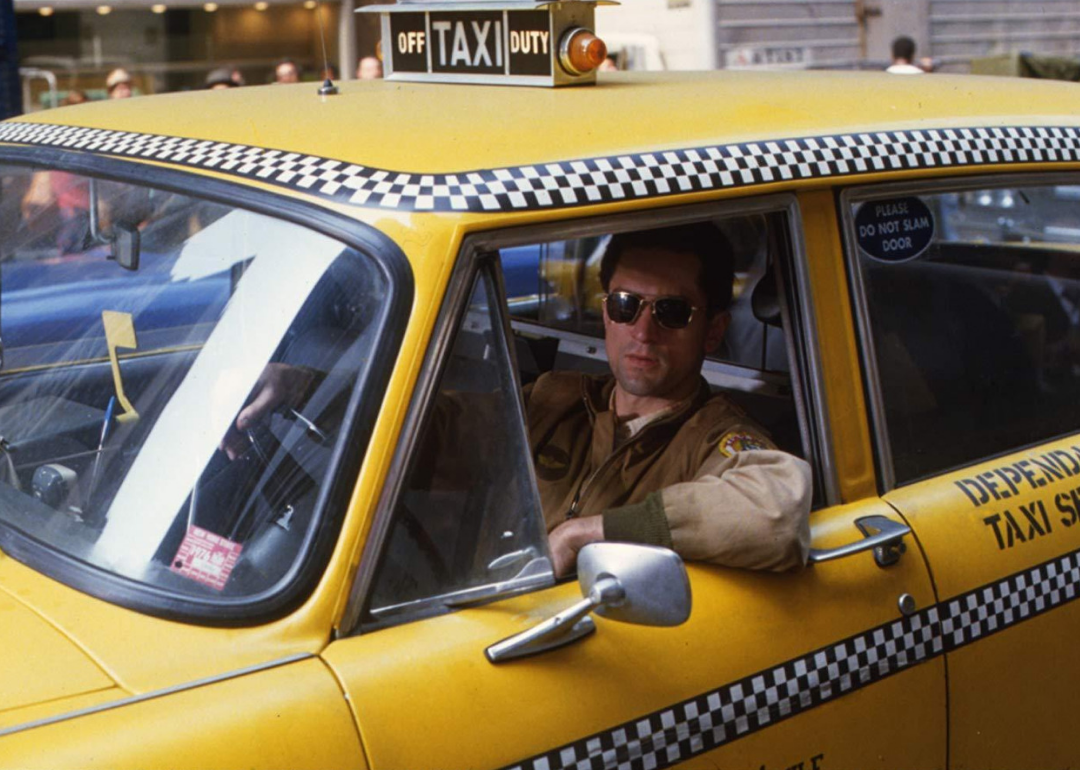
Columbia Pictures Corporation
#61. Taxi Driver (1976)
Robert De Niro in a scene from Taxi Driver.
– Director: Martin Scorsese
– Stacker score: 91.7
– Metascore: 94
– IMDb user rating: 8.2
– Runtime: 114 minutes
One of Martin Scorsese’s earliest masterpieces, this 1976 film follows a mentally unbalanced taxi driver named Travis Bickle (Robert De Niro), whose pent up disgust with New York City slowly devolves into violence. Co-starring as a 12-year-old prostitute is Jodie Foster in one of her most challenging roles. According to legend, screenwriter Paul Schrader made numerous revisions to Foster’s character after meeting an underage prostitute in real life. In 1994, the film was chosen for preservation in the National Film Registry.
You may also like: 100 best Western films of all time
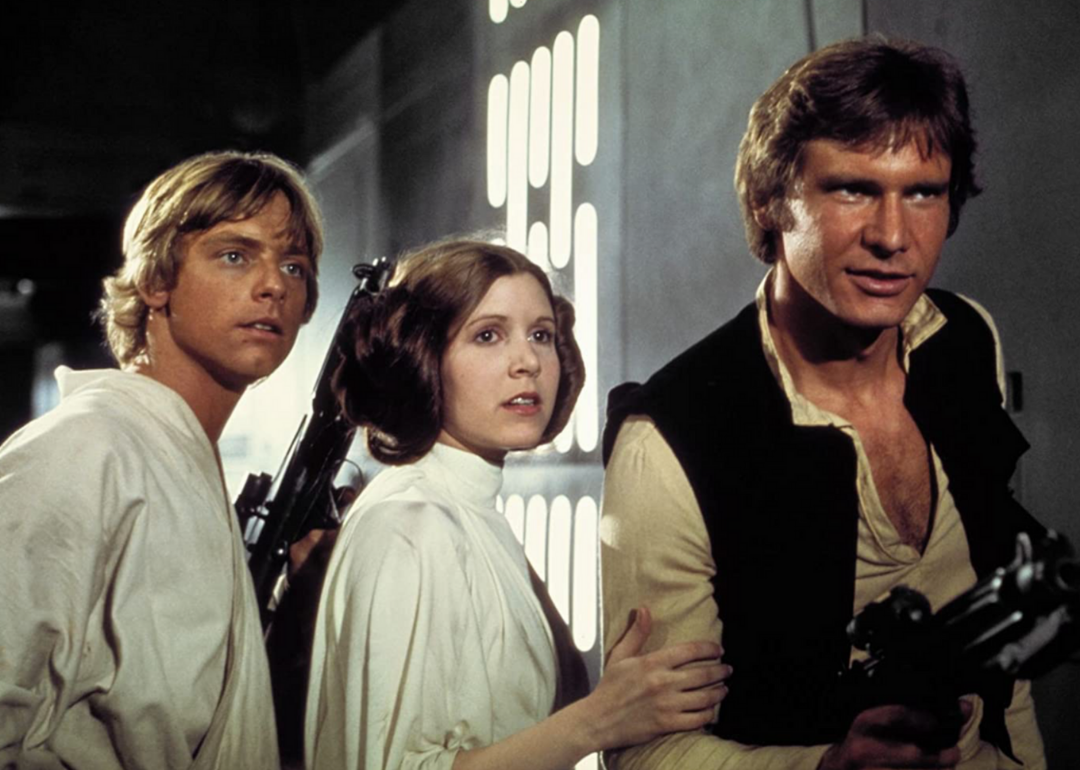
Lucasfilm Ltd.
#60. Star Wars: Episode IV—A New Hope (1977)
Harrison Ford, Carrie Fisher, and Mark Hamill in Star Wars: Episode IV – A New Hope.
– Director: George Lucas
– Stacker score: 91.7
– Metascore: 90
– IMDb user rating: 8.6
– Runtime: 121 minutes
The biggest franchise in cinematic history started with this groundbreaking space epic, which introduced audiences to Luke Skywalker, Princess Leia, Han Solo, Obi-Wan Kenobi, and Darth Vader. Inspired by everything from Kubrick’s “2001: A Space Odyssey” to the works of philosopher Joseph Campbell, George Lucas unleashed a fully realized world and one that’s still unfolding by way of new installments. Ultimately, this is a franchise so impactful that there might one day be an actual Millennium Falcon flying through space, if only because some genius “Star Wars” fan made it happen. The film was selected by the Library of Congress for preservation in the National Film Registry in 1989.
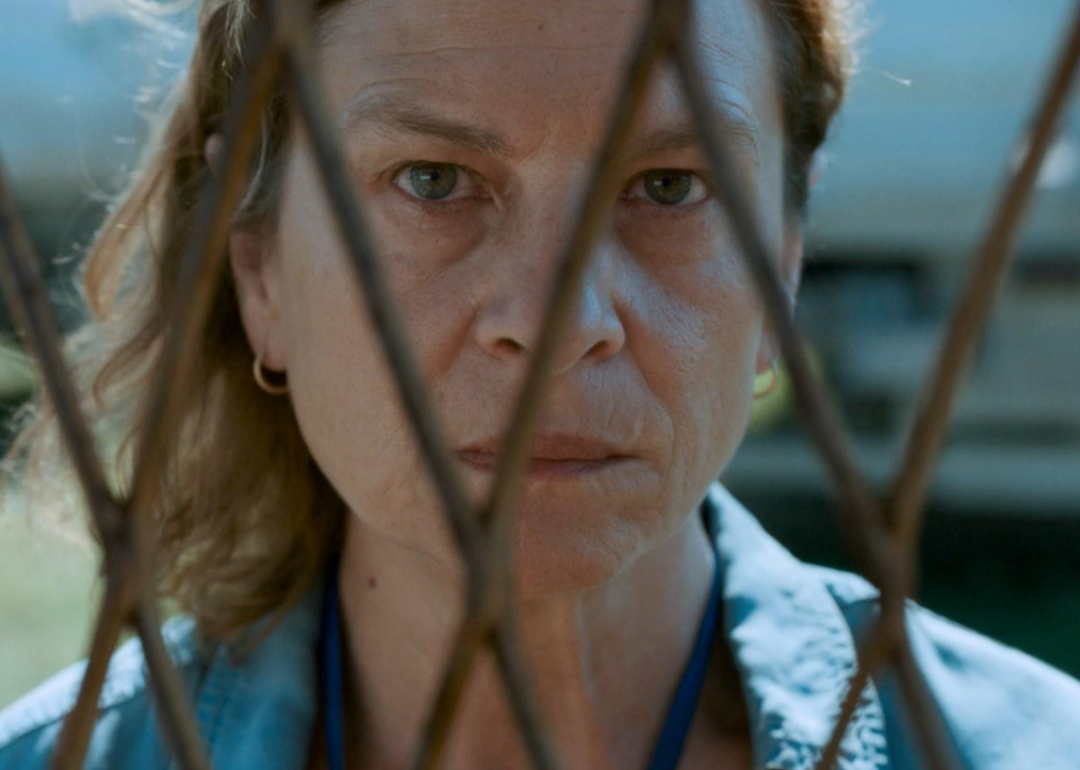
Deblokada Produkcija
#59. Quo Vadis, Aida? (2020)
Jasna Djuricic in Quo Vadis, Aida?
– Director: Jasmila Zbanic
– Stacker score: 92.2
– Metascore: 97
– IMDb user rating: 8
– Runtime: 101 minutes
“Quo Vadis, Aida?” retells the 1995 Srebrenica Massacre through the eyes of Aida (Jasna Đuričić), a Bosnian translator who finds herself torn between duty and family as tragedy unfolds. Variety critic Jessica Kiang writes that the film “works to un-revise history, re-centering the victims’ plight as the eye of a storm of evils.” “Quo Vadis, Aida?” was nominated for Best International Feature Film at the 2021 Academy Awards.
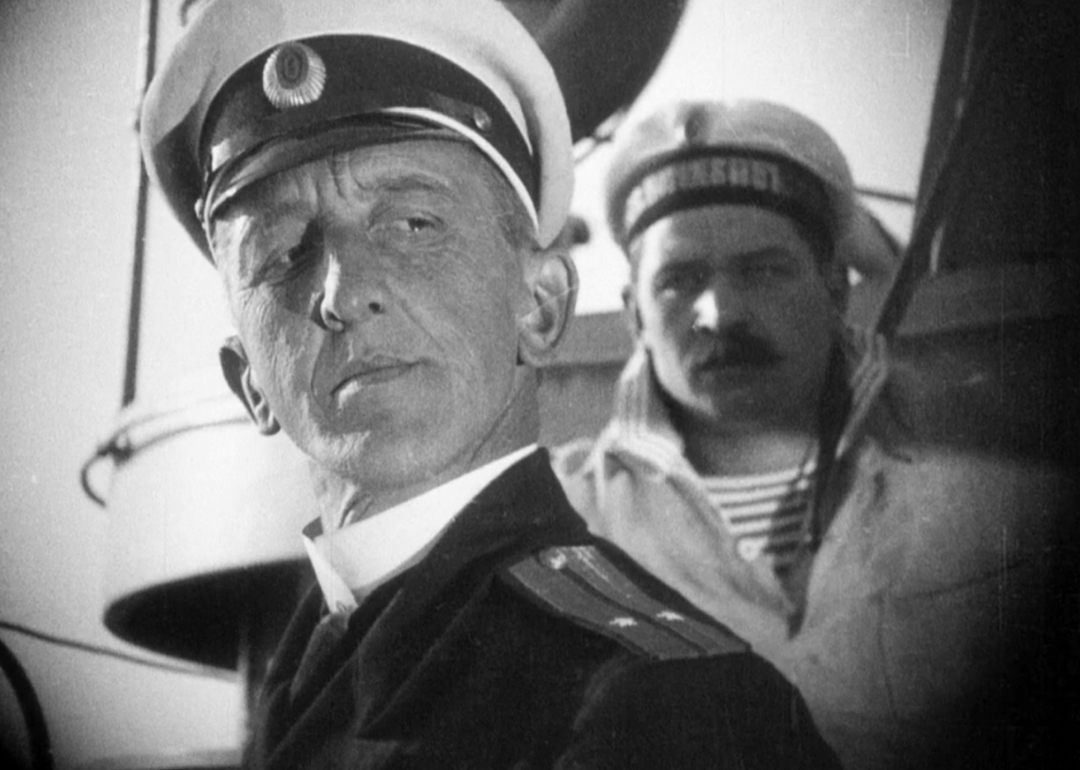
Goskino
#58. Battleship Potemkin (1925)
Actors in a scene from Battleship Potemkin.
– Director: Sergei Eisenstein
– Stacker score: 92.2
– Metascore: 97
– IMDb user rating: 8
– Runtime: 66 minutes
This silent Soviet film takes place during the Russian Revolution of 1905, as the crew of the battleship Potemkin rebel against their tyrannical officers. In the most recent Sight & Sound critics poll, “Battleship Potemkin” ranked #11 in its list of the top 100 films of all time. Many influential directors, such as Orson Welles and Michael Mann, have also cited it as one of their favorite movies.
Casbah Film
#57. The Battle of Algiers (1966)
Actors in a scene from The Battle of Algiers.
– Director: Gillo Pontecorvo
– Stacker score: 92.2
– Metascore: 96
– IMDb user rating: 8.1
– Runtime: 121 minutes
Shot on location in a newsreel style, “The Battle of Algiers” recreates a key year in the Algerian struggle for freedom from French occupation in the 1950s and 1960s. It serves as a case study and critique of the atrocities of modern warfare, particularly urban guerilla warfare. It’s also associated with the style of Italian neorealist film.
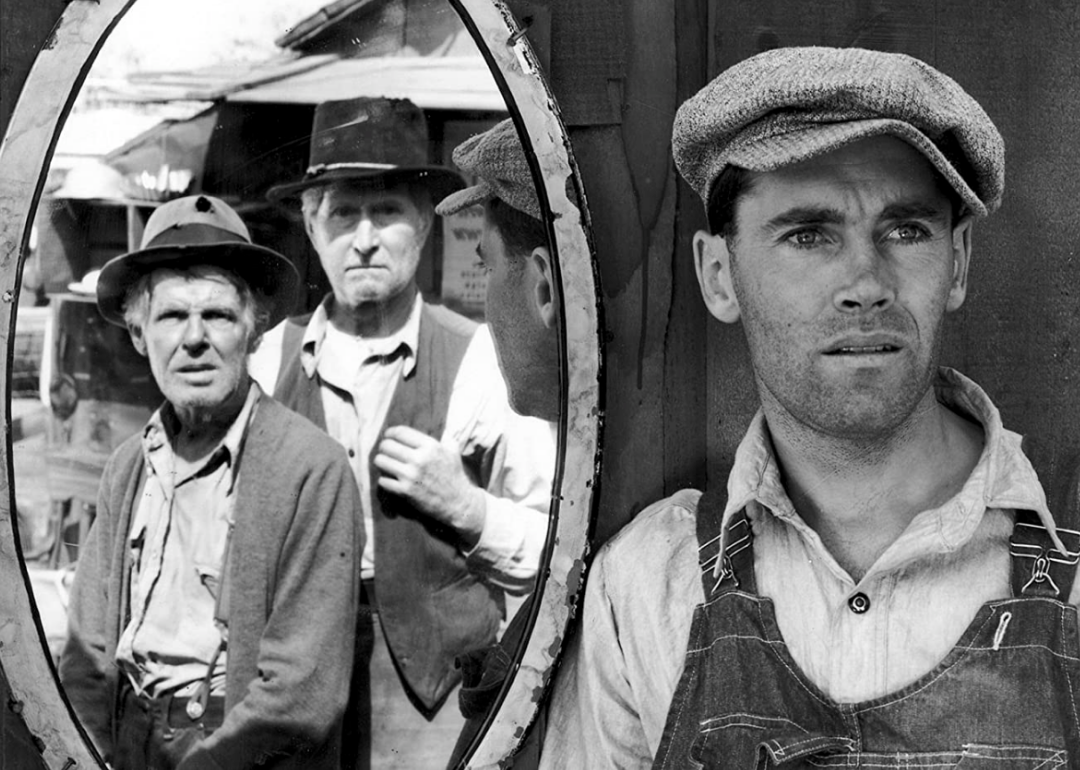
Twentieth Century Fox
#56. The Grapes of Wrath (1940)
Henry Fonda in a scene from The Grapes of Wrath.
– Director: John Ford
– Stacker score: 92.2
– Metascore: 96
– IMDb user rating: 8.1
– Runtime: 129 minutes
Based on the Pulitzer Prize-winning novel by John Steinbeck, this 1940 drama takes place in California’s Dust Bowl at the height of the Great Depression and chronicles the struggles of an impoverished family. In spite of its bleak themes, the movie was both a financial and critical success, winning two Academy Awards. Inspired by the film, famous folk singer Woody Guthrie penned his iconic song “The Ballad of Tom Joad.” Widely regarded as one of the greatest films of all time, the movie was selected for preservation in the National Film Registry in 1989.
You may also like: 50 times actors hated their own movies
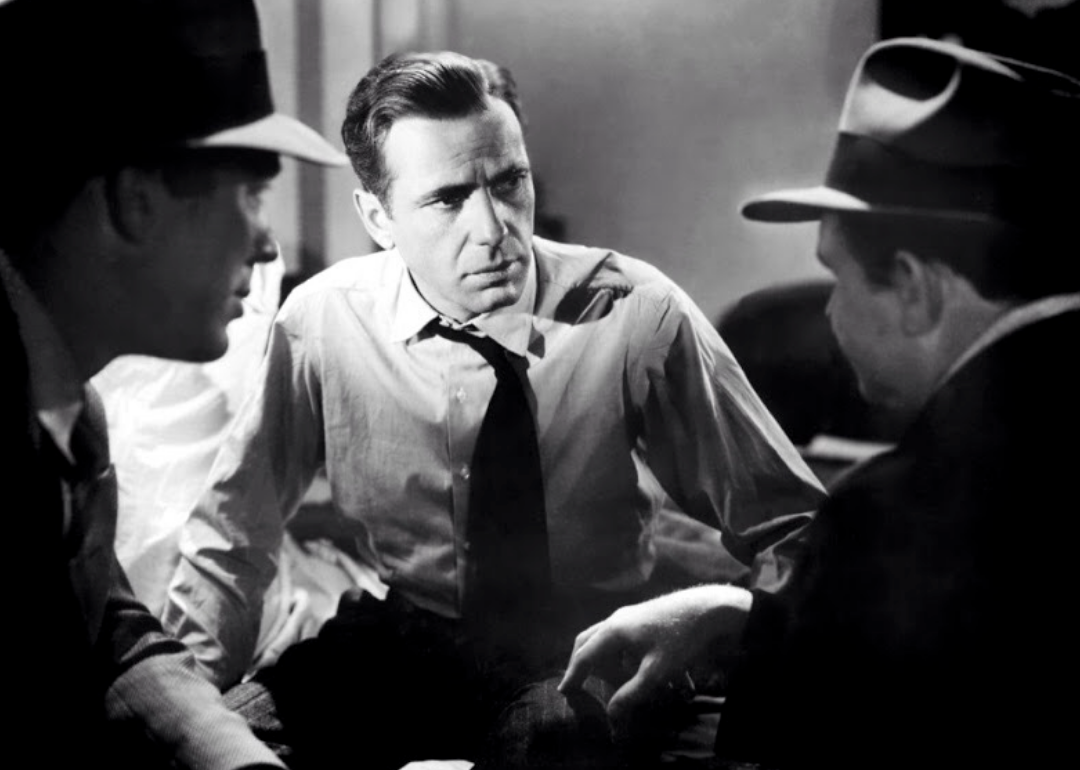
Warner Bros.
#55. The Maltese Falcon (1941)
Humphrey Bogart in a scene from The Maltese Falcon.
– Director: John Huston
– Stacker score: 92.2
– Metascore: 97
– IMDb user rating: 8
– Runtime: 100 minutes
From the acclaimed novel by Dashiell Hammett came this classic film noir, in which hard-boiled private eye Sam Spade (Humphrey Bogart) outmaneuvers cunning criminals and duplicitous dames while hunting for a priceless statuette. Warner Bros. released two previous versions in the years leading up to this celebrated film, one of them being a comedic misfire. Proving just how legendary this third version remains, a 45-pound prop statuette used in the film sold at auction in 2013 for a whopping $4 million. The Bogart starrer also earned three Academy Award nominations, including one for Best Picture.
The Mirisch Corporation
#54. The Apartment (1960)
Actors in a scene from The Apartment.
– Director: Billy Wilder
– Stacker score: 92.2
– Metascore: 94
– IMDb user rating: 8.3
– Runtime: 125 minutes
Billy Wilder’s classic rom-com follows the odd world of insurance worker C.C. Baxter (Jack Lemmon), who lets executives at his firm use his apartment for extramarital affairs as a means to move up in the company. All doesn’t go as planned when Baxter’s manager Mr. Sheldrake (Fred MacMurray) brings home the elevator girl from work (Shirley MacLaine) for whom Baxter has feelings of his own. During filming, Wilder only gave MacLaine 40 pages of the script so she wouldn’t find out how the story ended. The film was nominated for 10 awards at the 33rd Academy Awards, winning five, including Best Picture, Best Director, and Best Screenplay.
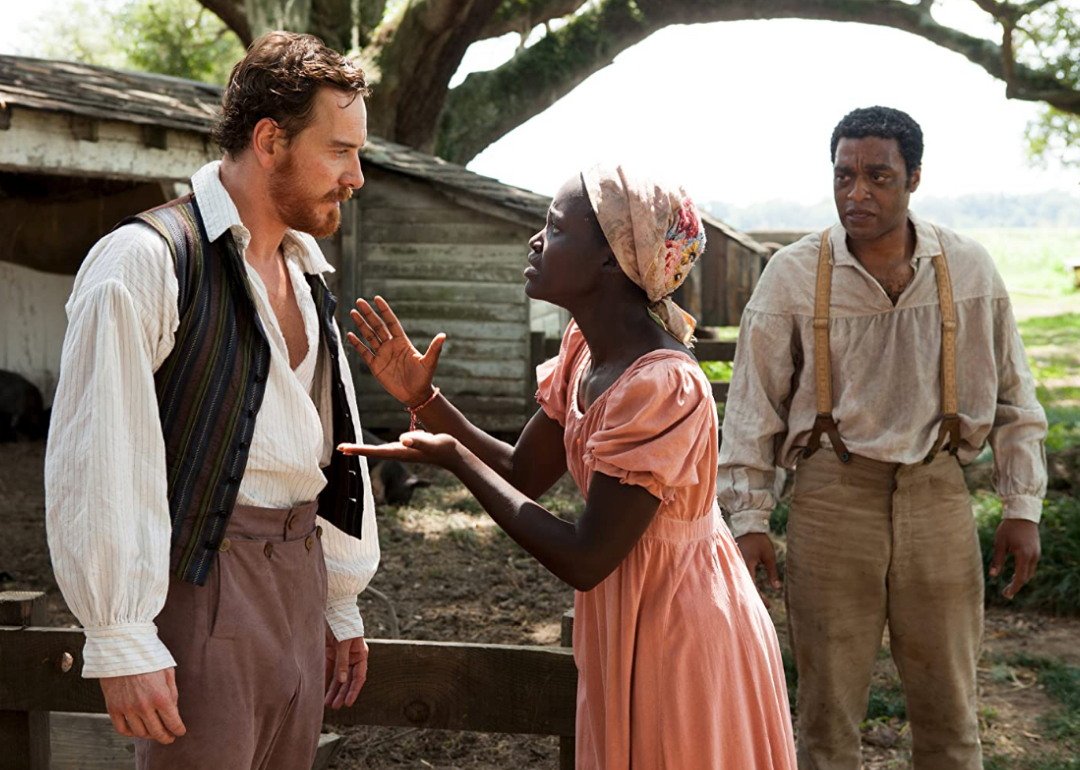
Regency Enterprises
#53. 12 Years a Slave (2013)
Chiwetel Ejiofor, Michael Fassbender, and Lupita Nyong’o in a scene from 12 Years a Slave.
– Director: Steve McQueen
– Stacker score: 92.2
– Metascore: 96
– IMDb user rating: 8.1
– Runtime: 134 minutes
Based on the 1853 memoir by Solomon Northup, this 2013 drama tells the true story of a free Black man (Chiwetel Ejiofor) from the North who’s abducted and sold into slavery down South. Over the following 12 years, Northup and his peers suffer unspeakable torment and abuse at the hands of a sadistic enslaver (Michael Fassbender). The gripping film won three Academy Awards, including Best Picture. Lupita Nyong’o also had her breakthrough performance in the period drama, winning the Oscar for Best Supporting Actress.
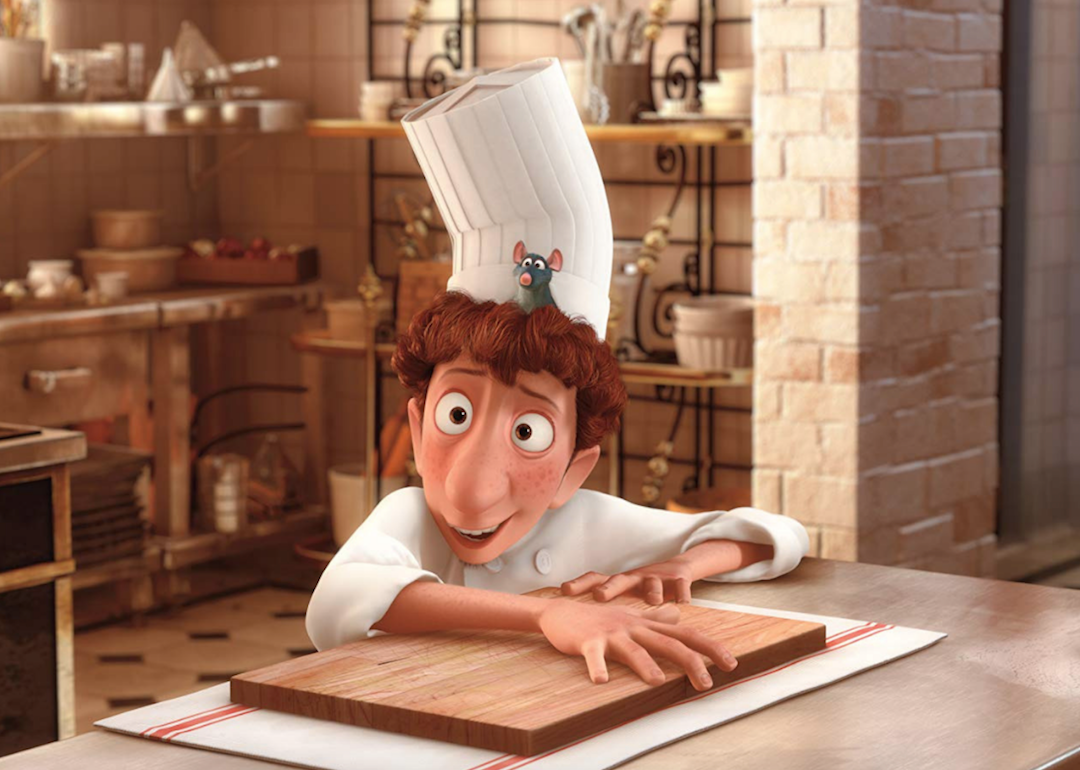
Pixar Animation Studios
#52. Ratatouille (2007)
An animated still from Ratatouille showing Linguini and Remy in the kitchen.
– Directors: Brad Bird, Jan Pinkava
– Stacker score: 92.2
– Metascore: 96
– IMDb user rating: 8.1
– Runtime: 111 minutes
In this animated flick from Pixar, an epicurean rat named Remy ends up inside the kitchen of a once-famous French restaurant, where he puts his culinary skills to work. Rather than risk exposure, Remy hides inside the hat of a bumbling kitchen employee named Alfredo Linguini and controls Linguini’s movements by pulling on his hair. Thanks to their teamwork, the French restaurant re-attains its status as a veritable dining destination. But will Remy and Linguini’s cuisine impress the harshest critic in France? Watch to find out. The Disney classic took home the Oscar for Best Animated Feature at the 80th Academy Awards.
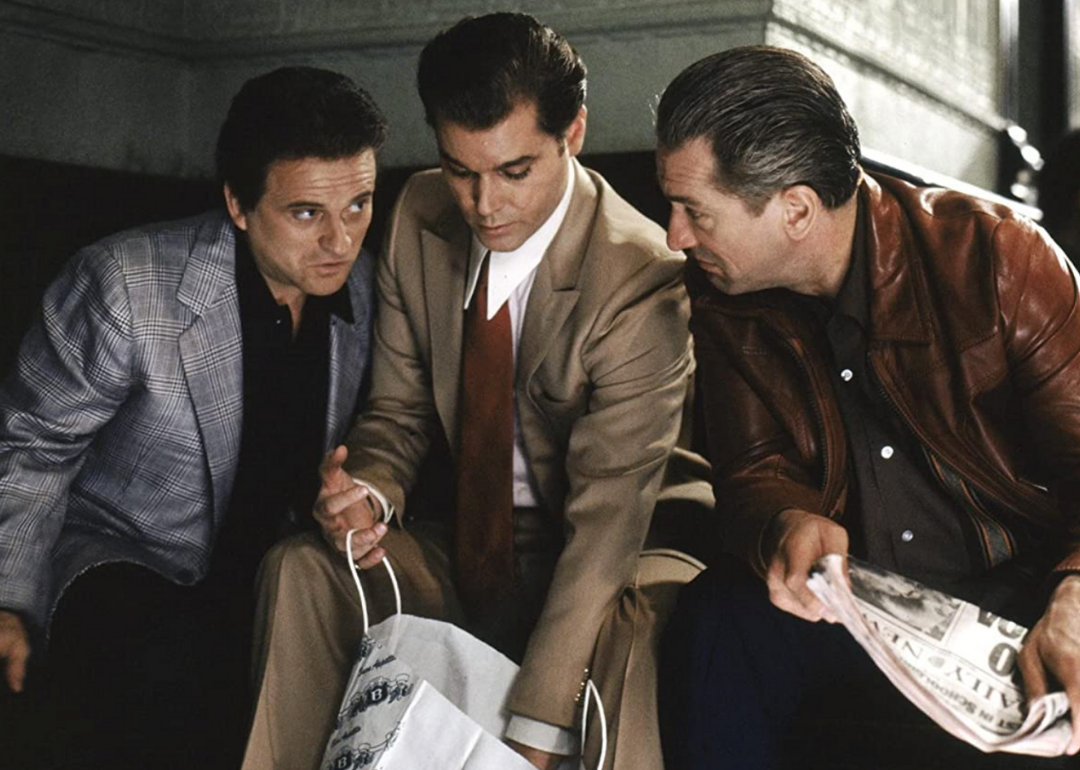
Warner Bros.
#51. Goodfellas (1990)
Robert De Niro, Ray Liotta, and Joe Pesci in a scene from Goodfellas.
– Director: Martin Scorsese
– Stacker score: 92.2
– Metascore: 90
– IMDb user rating: 8.7
– Runtime: 145 minutes
Few movies are more quotable or compulsively watchable than 1990’s “Goodfellas,” which chronicles the rise and fall of Henry Hill (Ray Liotta), a criminal with close ties to the Italian American mafia. Between the deft camerawork, the brilliant acting, the gripping violence, and the iconic soundtrack, the movie is quite simply a gift that keeps on giving, revealing new details with every viewing. A number of actors in the film would later appear in HBO’s hit show “The Sopranos,” and that’s no coincidence. After all, “The Sopranos” creator David Chase did once refer to “Goodfellas” as his Koran. The film was nominated for six Academy Awards, including Best Picture and Best Director, earning Joe Pesci the award for Best Supporting Actor.
You may also like: 15 controversial Oscar wins—and how they’ve aged

Amblin Entertainment
#50. Saving Private Ryan (1998)
Tom Hanks and cast in a promotional still from Saving Private Ryan.
– Director: Steven Spielberg
– Stacker score: 92.2
– Metascore: 91
– IMDb user rating: 8.6
– Runtime: 169 minutes
Featuring one of the most memorable battle scenes in movie history, “Saving Private Ryan” follows Capt. Miller (Tom Hanks) and his squad as they track down a paratrooper named Private Ryan (Matt Damon) before Ryan’s mother loses her last son to World War II. Director Steven Spielberg decided to helm the film as a tribute to his own father, who served in the U.S. Army and Signal Corps during World War II. The movie won five Academy Awards, including Best Director. In addition, in 2014, the film was selected for preservation in the National Film Registry by the Library of Congress.
Pathé Consortium Cinéma
#49. Rififi (1955)
Carl Möhner and Jean Servais in a scene from Rififi.
– Director: Jules Dassin
– Stacker score: 92.7
– Metascore: 97
– IMDb user rating: 8.1
– Runtime: 118 minutes
After being blacklisted in Hollywood during the McCarthy era, American director Jules Dassin helmed the iconic French heist film “Rififi.” In it, aging jewel thief Tony (Jean Servais) teams up with three unlikely allies to rob a lavish jewelry shop in Paris’ Rue de la Paix. “Rififi” is best-known for its highly choreographed, nearly silent half-hour heist scene. The film earned Dassin the Best Director prize at the 1955 Cannes Film Festival.
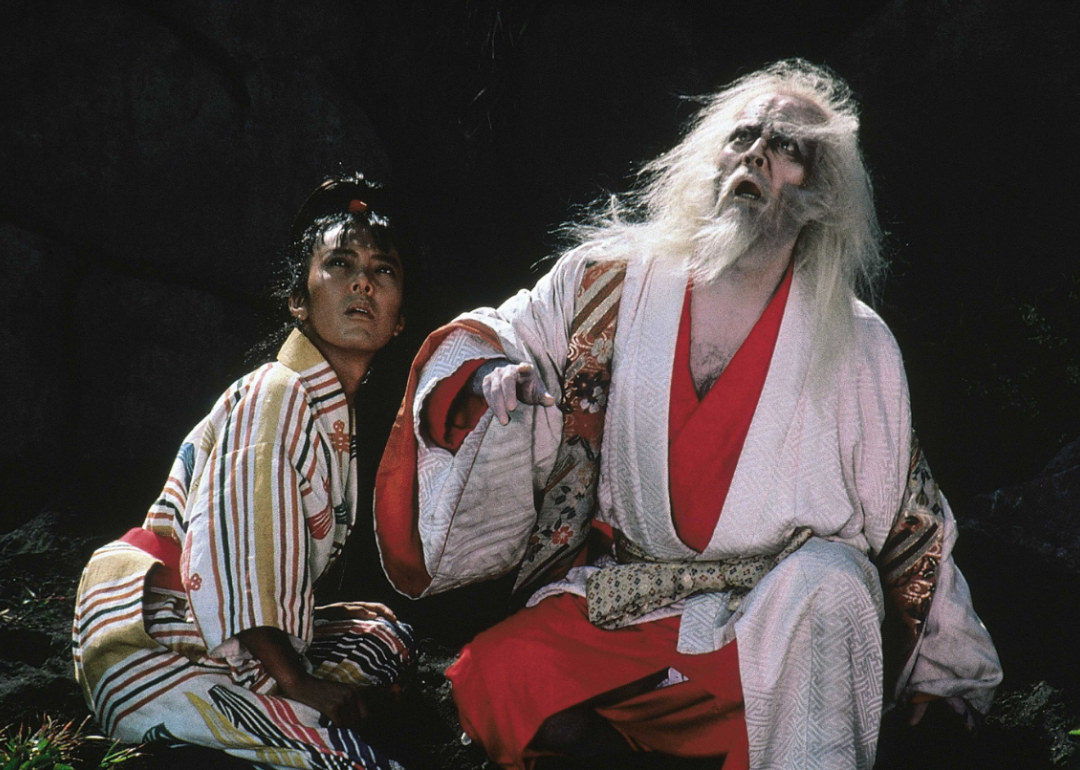
Rialto Pictures
#48. Ran (1985)
Tatsuya Nakadai and Pîtâ in a scene from Ran.
– Director: Akira Kurosawa
– Stacker score: 92.7
– Metascore: 96
– IMDb user rating: 8.2
– Runtime: 162 minutes
While Akira Kurosawa previously reimagined Shakespeare in the films “Throne of Blood” and “The Bad Sleep Well,” his best-known adaptation of the playwright’s work is the 1985 epic “Ran.” Here, he sets the family drama of “King Lear” in 16th century Japan, as an aging warlord (Tatsuya Nakadai) jockeys for power. With a budget of $12 million, it was the most expensive Japanese film ever made at the time.
Paramount Pictures
#47. Double Indemnity (1944)
Actors in a scene from Double Indemnity.
– Director: Billy Wilder
– Stacker score: 92.7
– Metascore: 95
– IMDb user rating: 8.3
– Runtime: 107 minutes
In this 1944 film noir from Billy Wilder, an insurance salesman (Fred MacMurray) is lured into a murderous plot by a gorgeous femme fatale (Barbara Stanwyck). While accomplished mystery author Raymond Chandler helped write the screenplay and even has a secret cameo in the film, the movie itself is based on a book by James M. Cain. Another one of Cain’s novels, “The Postman Always Rings Twice,” featured a similar premise and was adapted twice for the big screen. Despite being nominated for seven Academy Awards, it didn’t win any.
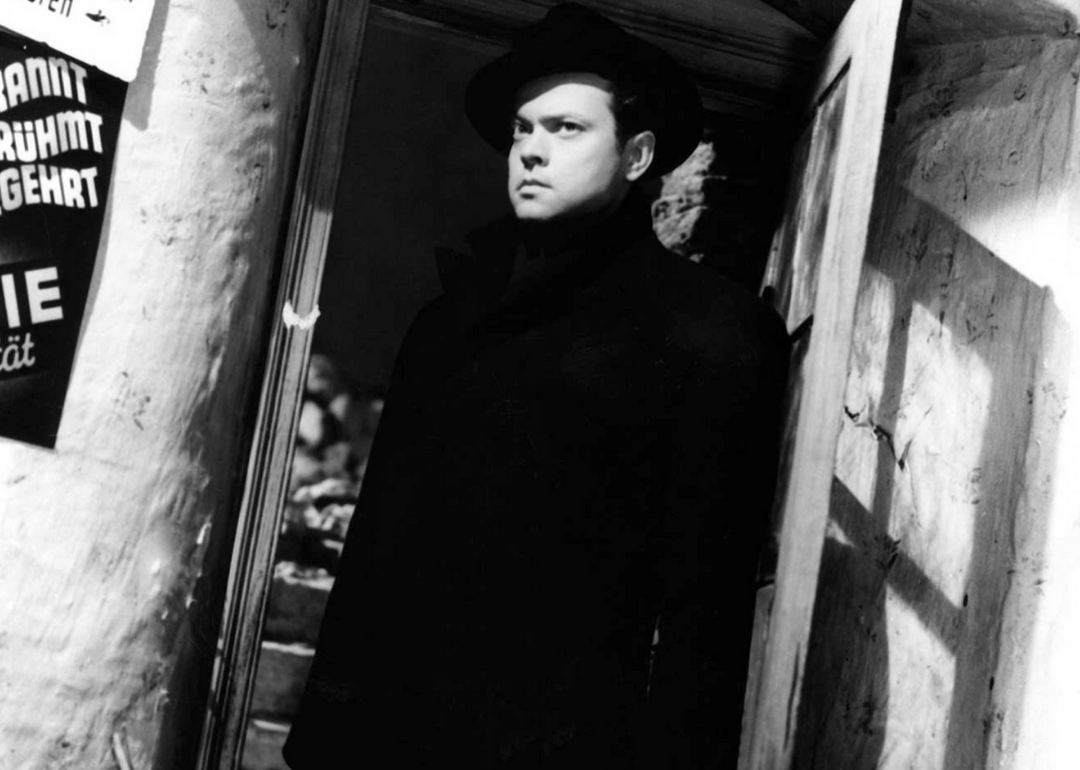
London Film Productions
#46. The Third Man (1949)
Orson Welles in a scene from The Third Man.
– Director: Carol Reed
– Stacker score: 92.7
– Metascore: 97
– IMDb user rating: 8.1
– Runtime: 93 minutes
Joseph Cotten stars in “The Third Man” as Holly, a pulp writer who arrives in Vienna to visit his old friend Harry (Orson Welles), only to find him dead. When Holly learns that a third man was present at Harry’s death, he goes down a conspiracy rabbit hole to solve the mystery of his friend’s death. The film is known for its Dutch angle camerawork, and its stark depiction of early Cold War Vienna.
You may also like: Classic movie quotes that have broken into our daily vocabulary
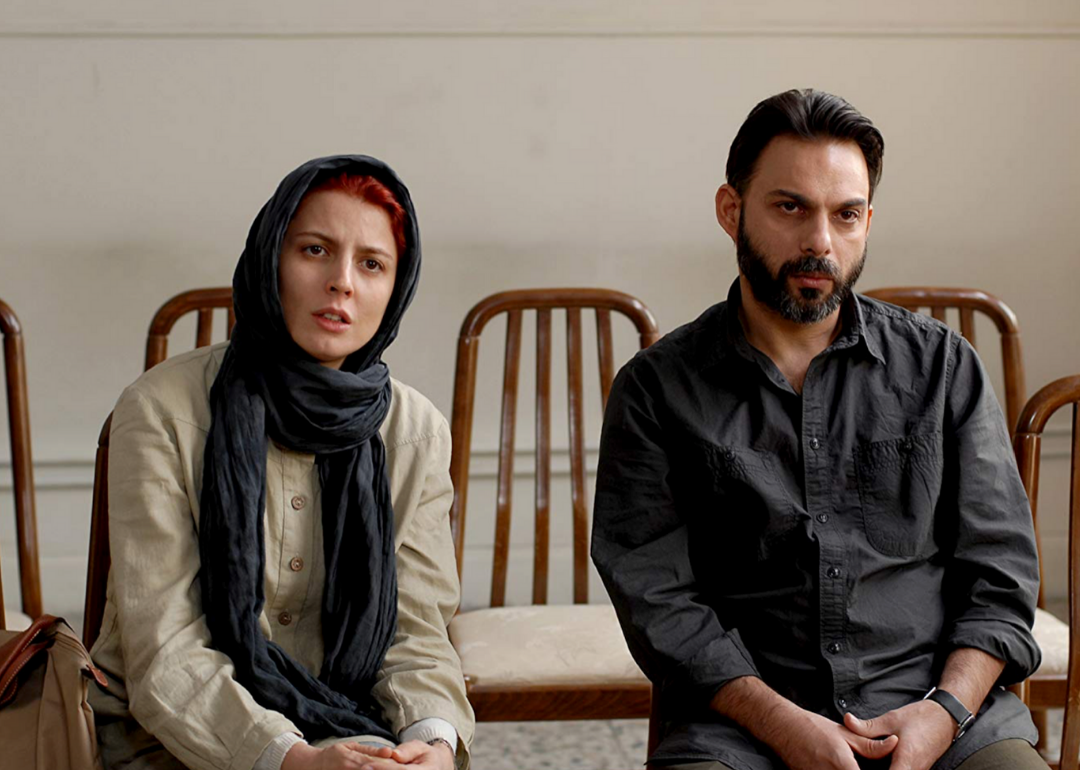
Sony Pictures Classics
#45. A Separation (2011)
Leila Hatami and Payman Maadi in a scene from A Separation.
– Director: Asghar Farhadi
– Stacker score: 92.7
– Metascore: 95
– IMDb user rating: 8.3
– Runtime: 123 minutes
In “A Separation,” moral quandaries and family strife arise when a middle-class Iranian couple separates, but husband Nader (Payman Moaadi) refuses to leave Tehran on account of his father, who has Alzheimer’s disease. Meanwhile, his wife Simin (Leila Hatami) sues for divorce in hopes of taking their young daughter abroad, and an incident involving the father’s caretaker places the whole family’s delicate balance in jeopardy. “A Separation” became the first Iranian film to win the Oscar for Best Foreign Language Film.
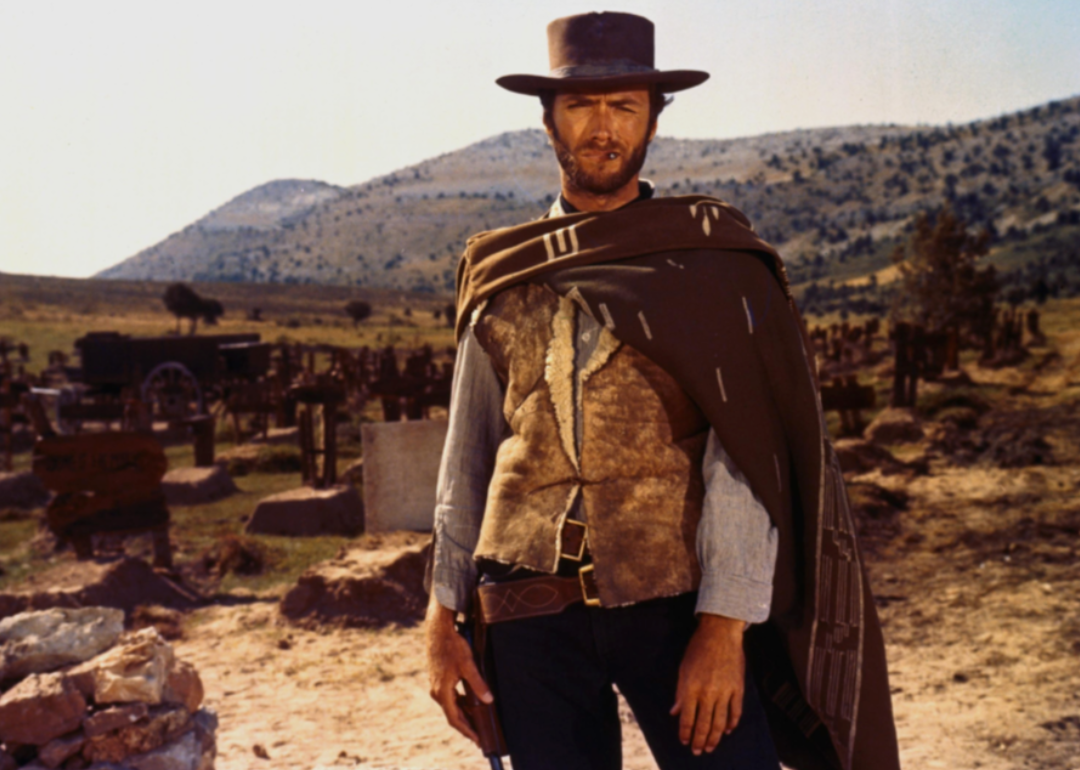
United Artists – MGM
#44. The Good, the Bad and the Ugly (1966)
Clint Eastwood in The Good, the Bad and the Ugly.
– Director: Sergio Leone
– Stacker score: 92.7
– Metascore: 90
– IMDb user rating: 8.8
– Runtime: 178 minutes
“The Good, the Bad and the Ugly” completes Italian director Sergio Leone’s Dollars Trilogy, whose previous installments included the films “A Fistful of Dollars” and “For a Few Dollars More.” Set in the American Southwest during the Civil War, the film details a bounty hunting scheme that forces Mexican outlaw Tuco (Eli Wallach) and an American stranger (Clint Eastwood) into an uneasy alliance. The men race against a third man (Lee Van Cleef) to find buried gold treasure.
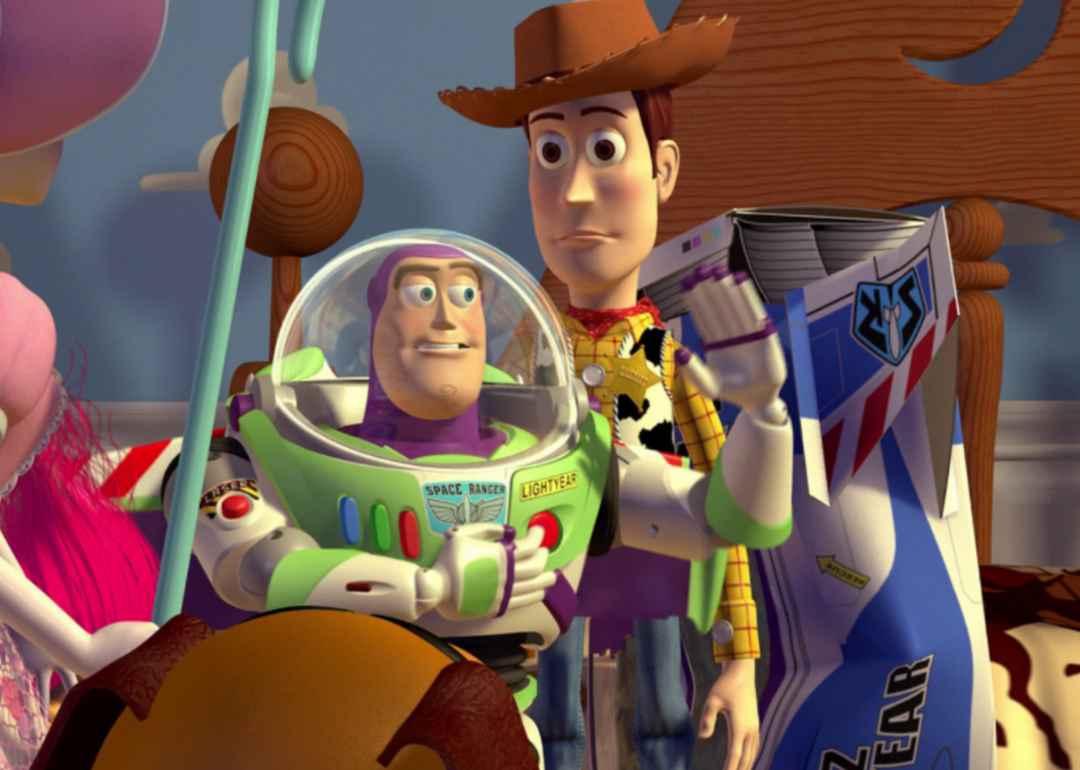
Walt Disney Pictures
#43. Toy Story (1995)
Animated still with characters from Toy Story.
– Director: John Lasseter
– Stacker score: 92.7
– Metascore: 95
– IMDb user rating: 8.3
– Runtime: 81 minutes
If the current era of computer animation kicked off with a single film, that film is 1995’s “Toy Story,” about a bunch of toys that spring to life when their owners aren’t looking. Firing on every cylinder, the movie immediately made Woody and Buzz Lightyear two household names. The film also made Pixar a veritable force to be reckoned with. In 2005, the Library of Congress selected the film for preservation in the National Film Registry.
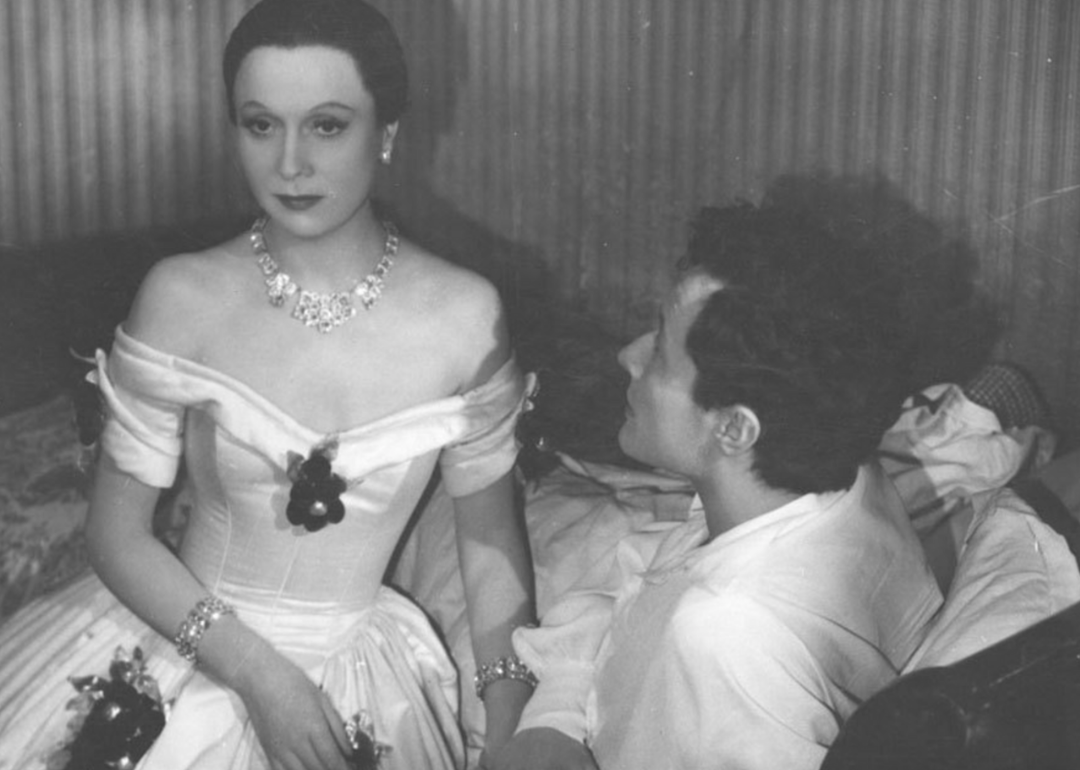
Société Nouvelle Pathé Cinéma
#42. Children of Paradise (1945)
Arletty and Jean-Louis Barrault in a scene from Children of Paradise.
– Director: Marcel Carné
– Stacker score: 93.2
– Metascore: 96
– IMDb user rating: 8.3
– Runtime: 189 minutes
“Children of Paradise” is considered one of the premier examples of poetic realist filmmaking. It tells the story of charismatic yet mysterious Parisian actress Garance (Arletty) and four very different men, each based on real-life historical figures, who bid for her affections: an actor, a count, a criminal, and a mime (Jean-Louis Barrault). Filmed during World War II, its sensitive evocation of the world’s people have marked it as one of the greatest French films.
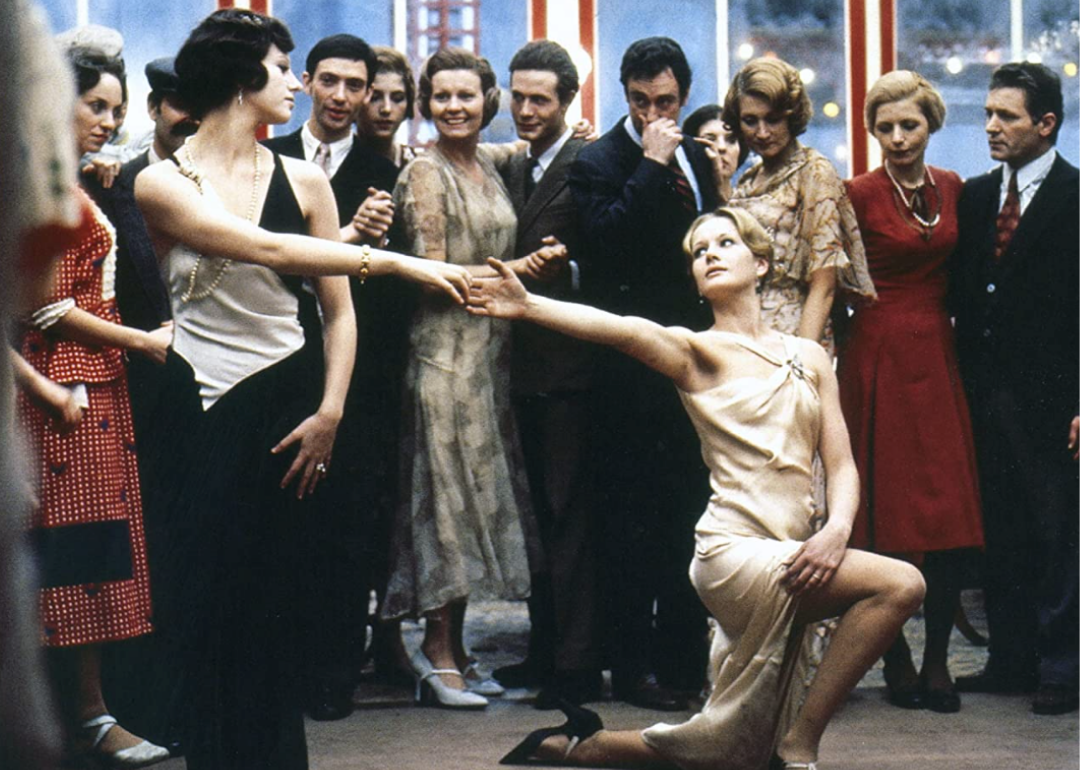
Mars Film
#41. The Conformist (1970)
Two women dance in a scene from The Conformist.
– Director: Bernardo Bertolucci
– Stacker score: 93.2
– Metascore: 100
– IMDb user rating: 7.9
– Runtime: 113 minutes
In “The Conformist,” weak-willed Italian man Marcello Clerici (Jean-Louis Trintignant) becomes a member of the secret police during Mussolini’s fascist regime. During his honeymoon, Clerici plans to assassinate his vocally anti-fascist former professor (Enzo Tarascio), but meeting the man’s young wife (Dominique Sanda) throws a wrench into his plans and larger philosophies. “The Conformist” has inspired numerous influential directors in the years since its release, from the Coen brothers to Steven Spielberg to Francis Ford Coppola. As Vox’s Aja Romano points out, the film’s explorations of fascism through its antihero protagonist remain politically relevant today.
You may also like: 100 greatest movie songs from 100 years of film
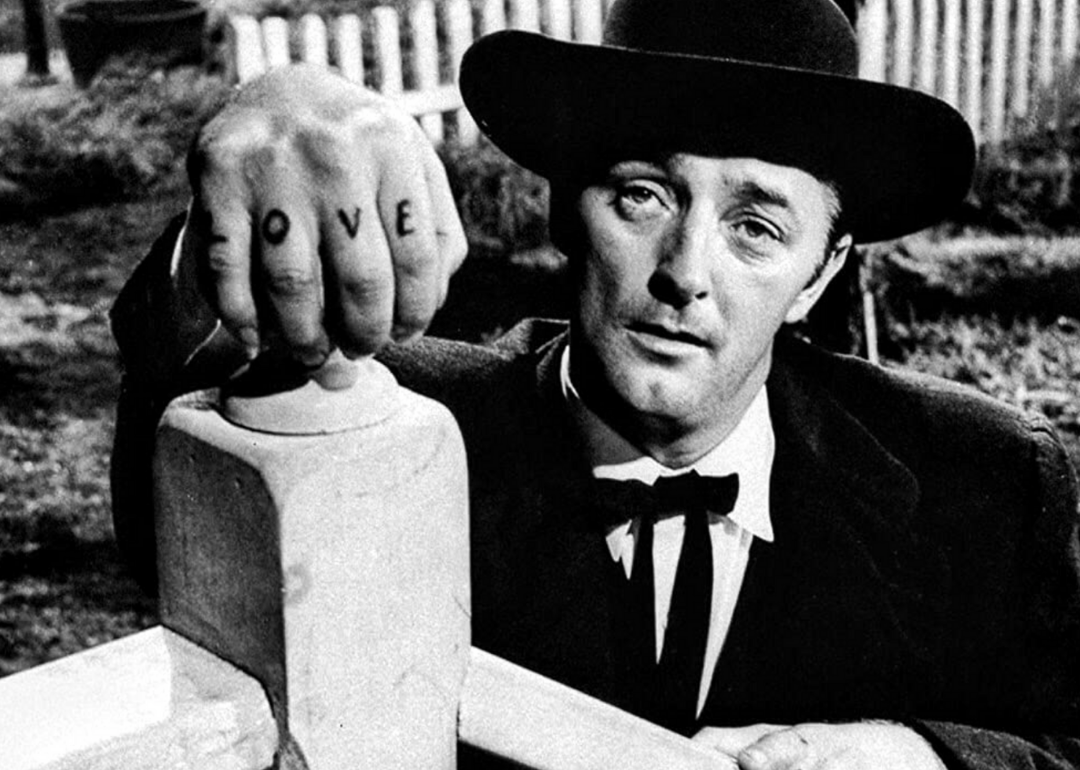
Metro-Goldwyn-Mayer (MGM)
#40. The Night of the Hunter (1955)
Robert Mitchum in The Night of the Hunter.
– Director: Charles Laughton
– Stacker score: 93.2
– Metascore: 99
– IMDb user rating: 8
– Runtime: 92 minutes
Renowned film critic Pauline Kael called this 1955 thriller “one of the most frightening movies ever made.” While modern audiences might not necessarily agree, they can still find plenty to relish when watching “Night of the Hunter,” a truly off-kilter work that stars Robert Mitchum as crazed religious fanatic Harry Powell. Following the clues left behind by his former prison cellmate, Powell finagles his way into the life of a widow and her two children, taking every conceivable measure to find out where they’re hiding $10,000 in cash. Revered as one of the greatest films of all time, “The Night of the Hunter” was selected for preservation in the National Film Registry in 1992.
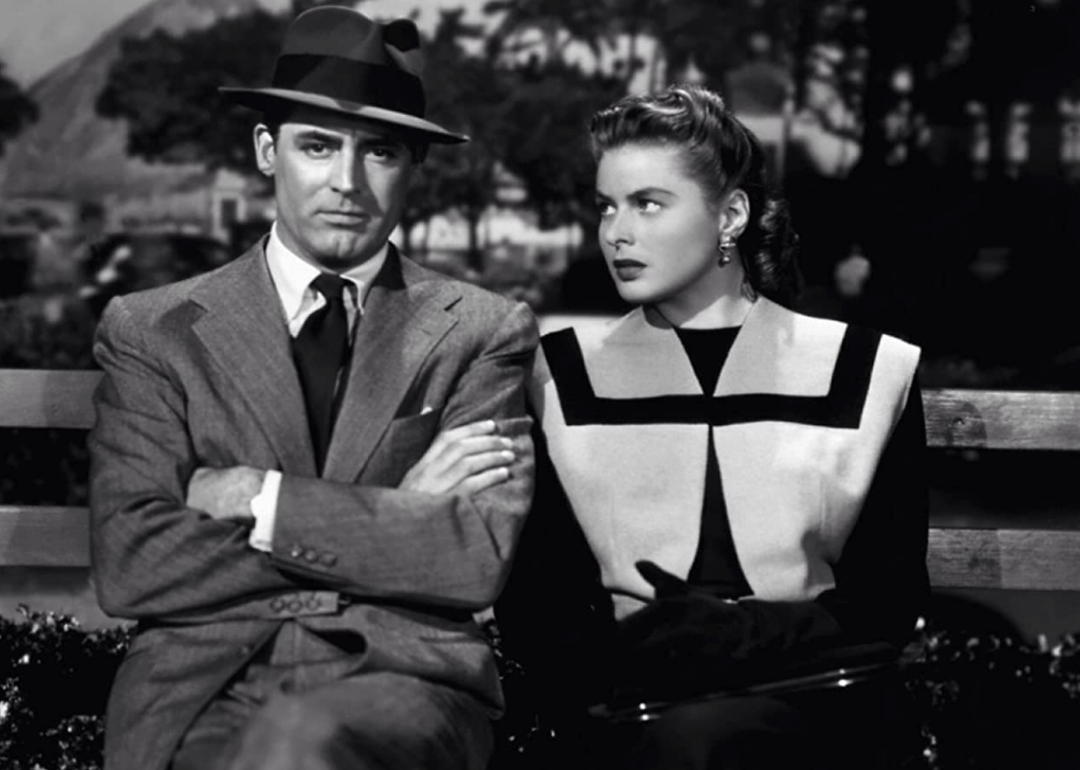
RKO Radio Pictures
#39. Notorious (1946)
Ingrid Bergman and Cary Grant in a scene from Notorious.
– Director: Alfred Hitchcock
– Stacker score: 93.2
– Metascore: 100
– IMDb user rating: 7.9
– Runtime: 102 minutes
Indelible stars Ingrid Bergman and Cary Grant shine bright in “Notorious,” a lauded Alfred Hitchcock film that centers on a government agent (Grant) who sends the daughter of a German war criminal (Bergman) to go undercover and spy on a group of Nazis in South America—one of whom had, and may still have, feelings for her. She agrees because of her feelings for the agent, setting off a visually stunning, high-stakes love story as only Hitchcock can do. Additionally, in 2006, the picture was chosen for preservation in the National Film Registry by the Library of Congress.
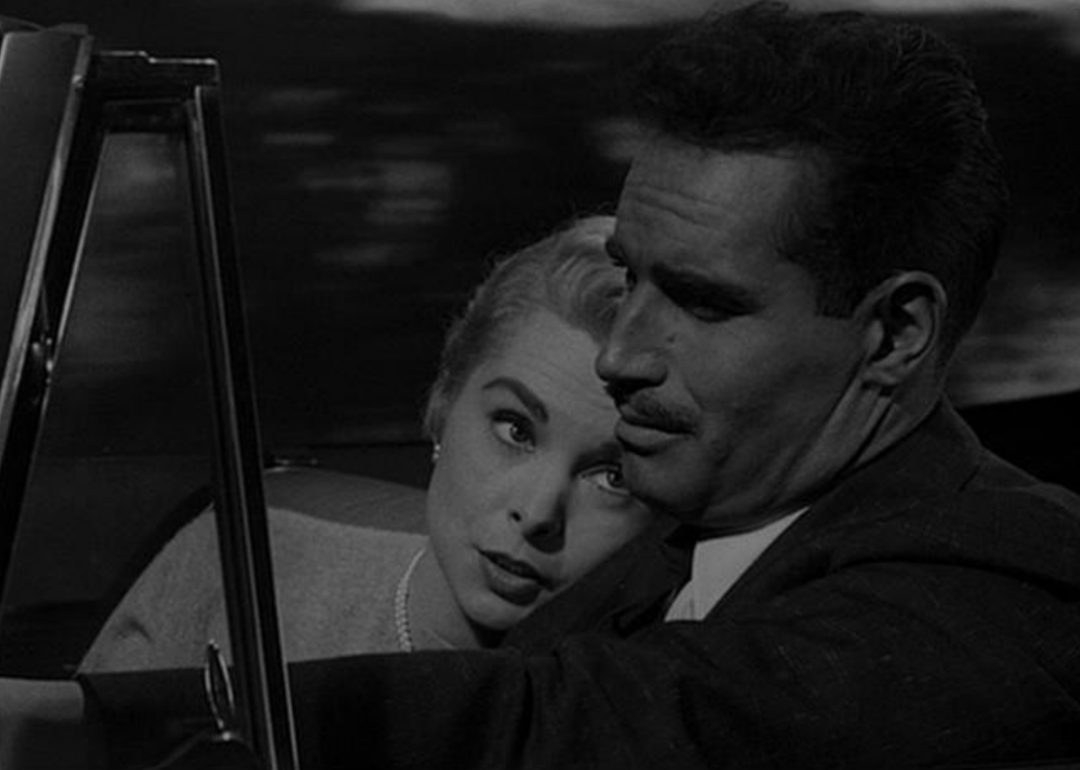
Universal Pictures
#38. Touch of Evil (1958)
Charlton Heston and Janet Leigh in a scene from Touch of Evil.
– Director: Orson Welles
– Stacker score: 93.2
– Metascore: 99
– IMDb user rating: 8
– Runtime: 95 minutes
The name Orson Welles might be most synonymous with 1941’s “Citizen Kane,” but this 1958 effort is similarly phenomenal. After opening with one of the most famous tracking shots, the film dives into the story of scandal, corruption, and murder in a small Mexican border town. Starring as Police Capt. Hank Quinlan is Welles himself, who later claimed this was the most fun he’d ever had making a picture. Among the film’s accolades, “Touch of Evil” would go on to receive the International Critics Prize.

Toho Company
#37. Grave of the Fireflies (1988)
An animated still from Grave of the Fireflies.
– Director: Isao Takahata
– Stacker score: 93.2
– Metascore: 94
– IMDb user rating: 8.5
– Runtime: 89 minutes
Based on a 1967 short story by Akiyuki Nosaka, “Grave of the Fireflies” follows teenage Seita (Tsutomu Tatsumi) and his younger sister Setsuko (Ayano Shiraishi) as they struggle to survive World War II-era Japan in the aftermath of an American firebombing attack. Roger Ebert considered it to be one of the most powerful war movies ever made. To this day, “Grave of the Fireflies” stands out as one of the most mature and resonant Studio Ghibli films.
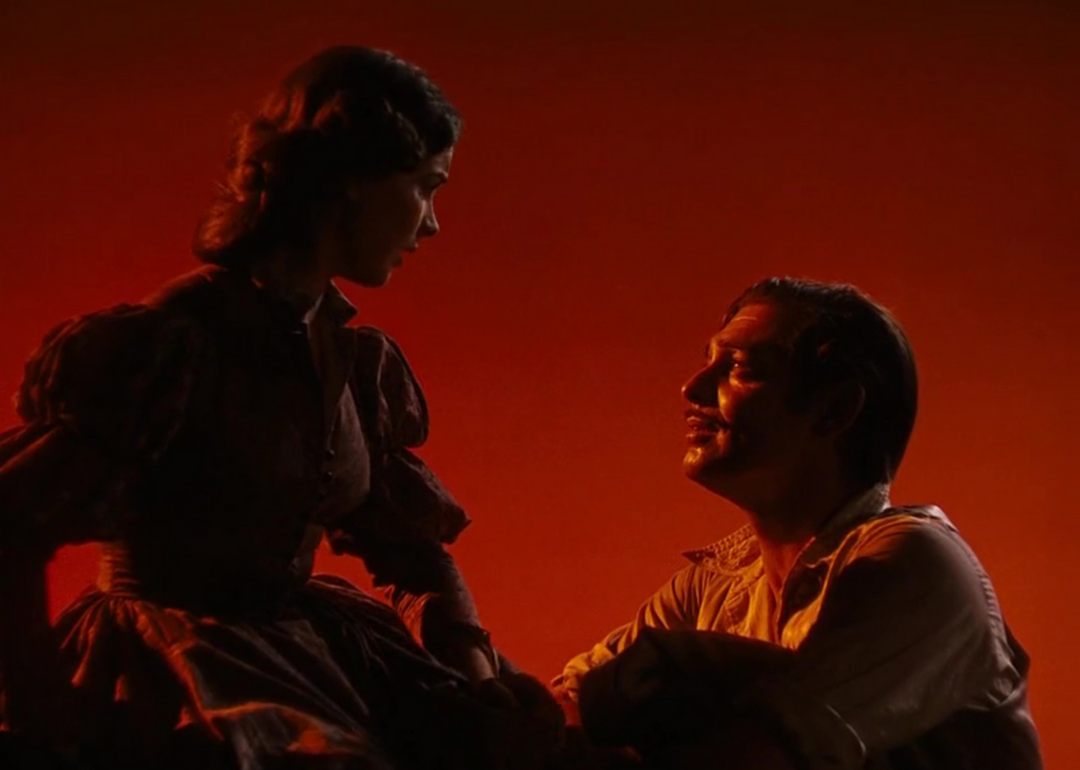
Metro-Goldwyn-Mayer (MGM)
#36. Gone with the Wind (1939)
Clark Gable and Vivien Leigh in a scene from Gone with the Wind.
– Directors: Victor Fleming, George Cukor, Sam Wood
– Stacker score: 93.2
– Metascore: 97
– IMDb user rating: 8.2
– Runtime: 238 minutes
Sagas don’t get much more sweeping than this four-hour epic from 1939. Based on Margaret Mitchell’s equally voluminous novel, “Gone with the Wind” depicts the ongoing struggles of an eccentric woman named Scarlett O’Hara (Vivien Leigh), as she encounters hardship and romance during the Civil War and subsequent Reconstruction era. Meanwhile, getting the film made in the first place was its own sweeping saga. Specifically, the studio went through numerous directors, writers, and actors before arriving at the final product. The classic film walked away with 10 of the 13 awards for which it was nominated at the 12th Academy Awards.
You may also like: Best Clint Eastwood movies
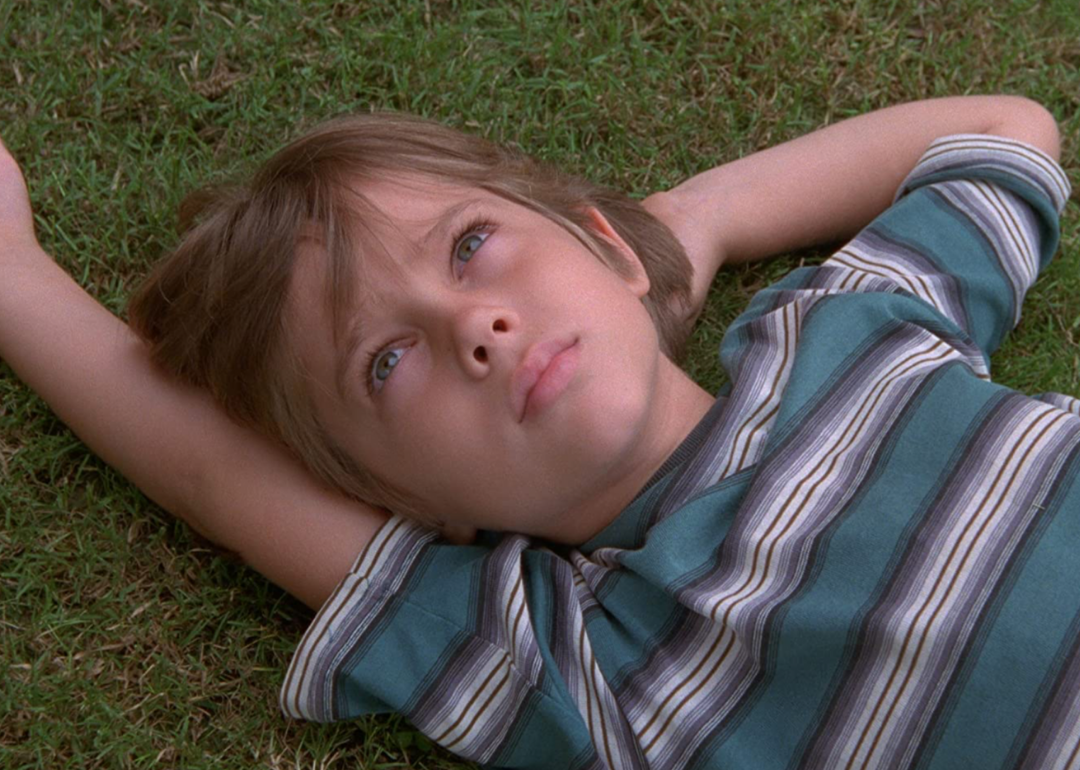
IFC Films
#35. Boyhood (2014)
Ellar Coltrane in a scene from Boyhood.
– Director: Richard Linklater
– Stacker score: 93.2
– Metascore: 100
– IMDb user rating: 7.9
– Runtime: 165 minutes
A film quite unlike any other, 2014’s “Boyhood” chronicles the life of its protagonist, Mason (Ellar Coltrane), over the course of 12 years. What truly distinguishes the work, however, is the fact that director Richard Linklater actually took 12 years to make it, meaning Mason’s development authentically unfolds before viewers’ eyes. Like so many Linklater films, this one relies on the humanistic strength of its characters to get its point across, as opposed to adhering to a strict narrative. Patricia Arquette and Ethan Hawke co-star. The movie was nominated for six Academy Awards, winning Best Supporting Actress for Arquette.
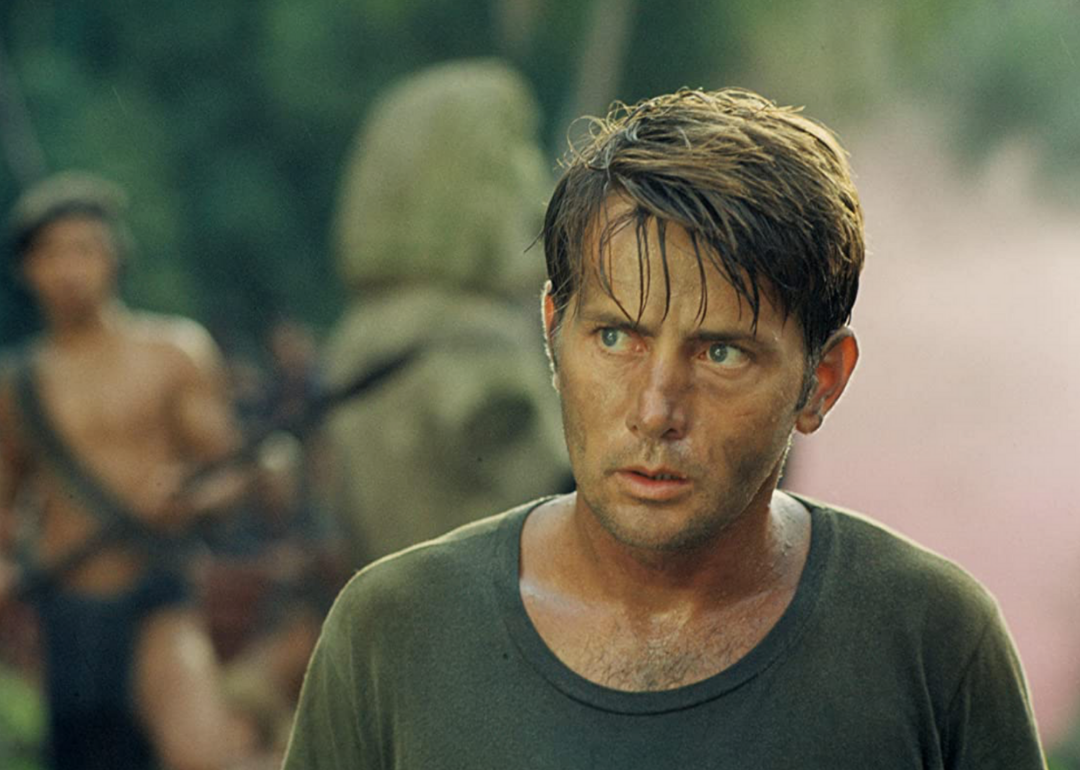
United Artists
#34. Apocalypse Now (1979)
Martin Sheen in a scene from Apocalypse Now.
– Director: Francis Ford Coppola
– Stacker score: 93.2
– Metascore: 94
– IMDb user rating: 8.5
– Runtime: 147 minutes
Putting a surrealist spin on a classic Joseph Conrad novel, this 1979 film takes place during the Vietnam War and sends Capt. Willard (Martin Sheen) into the deepest regions of the Cambodian jungle. His mission? To find and assassinate a crazed colonel named Kurtz (Marlon Brando), who’s become the overlord to a jungle tribe. To get the film made, director Francis Ford Coppola put up several million dollars of his own money and underwent all sorts of medical trauma during the shoot. The effort paid off, as the movie endures as a genuine masterpiece. The original was nominated for eight Academy Awards at the 52nd Academy Awards, including Best Picture and Best Director. What’s more, decades after its initial release, Coppola rolled out an expanded version, also known as “Apocalypse Now Redux.”
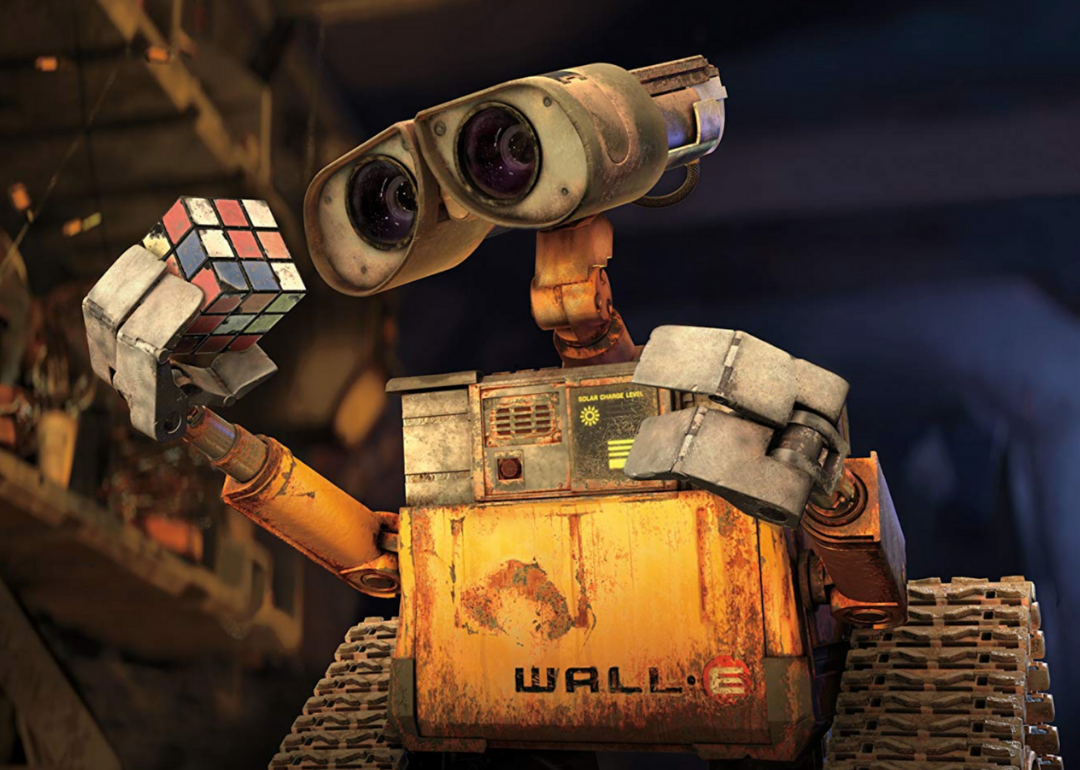
Walt Disney Pictures
#33. WALL·E (2008)
A scene from WALL·E.
– Director: Andrew Stanton
– Stacker score: 93.2
– Metascore: 95
– IMDb user rating: 8.4
– Runtime: 98 minutes
Set in the distant (or not too distant) future, “WALL·E” represents one of Pixar’s most ambitious projects and features virtually no dialogue for the first 20 minutes. It follows the adventures of its title character, a lovable robot who’s tasked with wading through garbage on an uninhabitable Earth. After boarding a spaceship, WALL·E discovers what humans have been up to since they destroyed the planet. And what is that, one might ask? Eating and watching TV, mostly. The beloved animated film took home a slew of notable awards, including the Golden Globe Award for Best Animated Feature Film, the Hugo Award for Best Long Form Dramatic Presentation, and the Academy Award for Best Animated Feature.
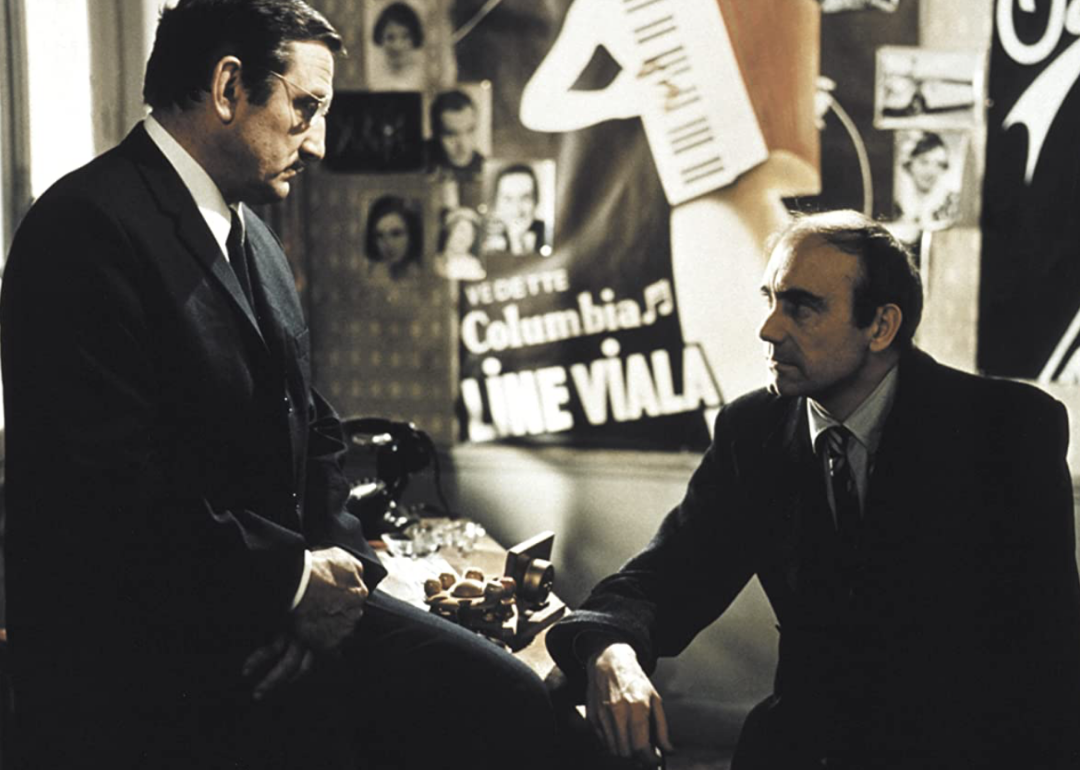
Rialto Picture
#32. Army of Shadows (1969)
Actors in a scene from Army of Shadows.
– Director: Jean-Pierre Melville
– Stacker score: 93.8
– Metascore: 99
– IMDb user rating: 8.1
– Runtime: 145 minutes
“Army of Shadows” presents a bleak, unromanticized depiction of the French Resistance during World War II. Lino Ventura stars as Resistance member Philipipe Gerbier, who finds himself in a torturous Nazi prison camp after an informant betrays him. Based on Joseph Kessel’s 1943 book of the same name, “Army of Shadows” wasn’t originally hailed as the great war film it is today. This is because it was released soon after the unrest of May 1968 and the French government felt it seemingly glorified controversial political figure Charles de Gaulle.
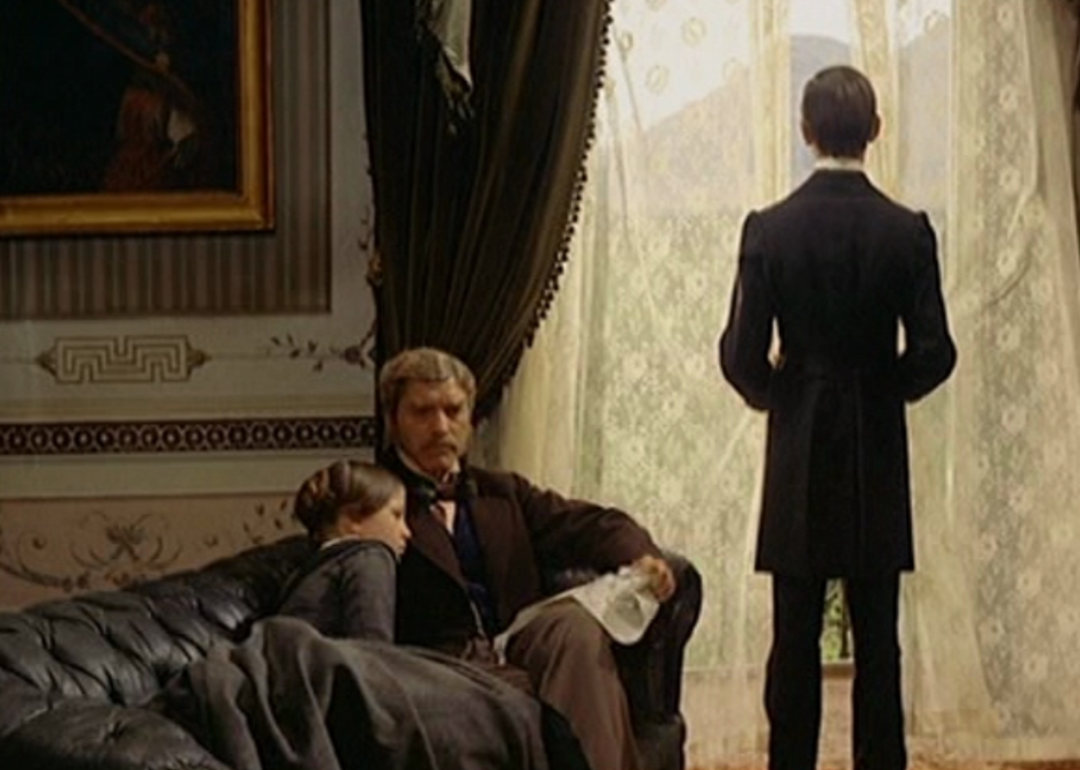
20th Century Fox
#31. The Leopard (1963)
Actors in a scene from The Leopard.
– Director: Luchino Visconti
– Stacker score: 93.8
– Metascore: 100
– IMDb user rating: 8
– Runtime: 186 minutes
This grand Italian epic recounts the country’s Risorgimento era, when the middle class upended the aristocracy and established an Italian democracy. These events are told through the eyes of aging prince Don Fabrizio Corbera (Burt Lancaster). The opulent, devastating film won the Palme d’Or at the 1963 Cannes Film Festival.
You may also like: Sequels that outperformed the original at the box office
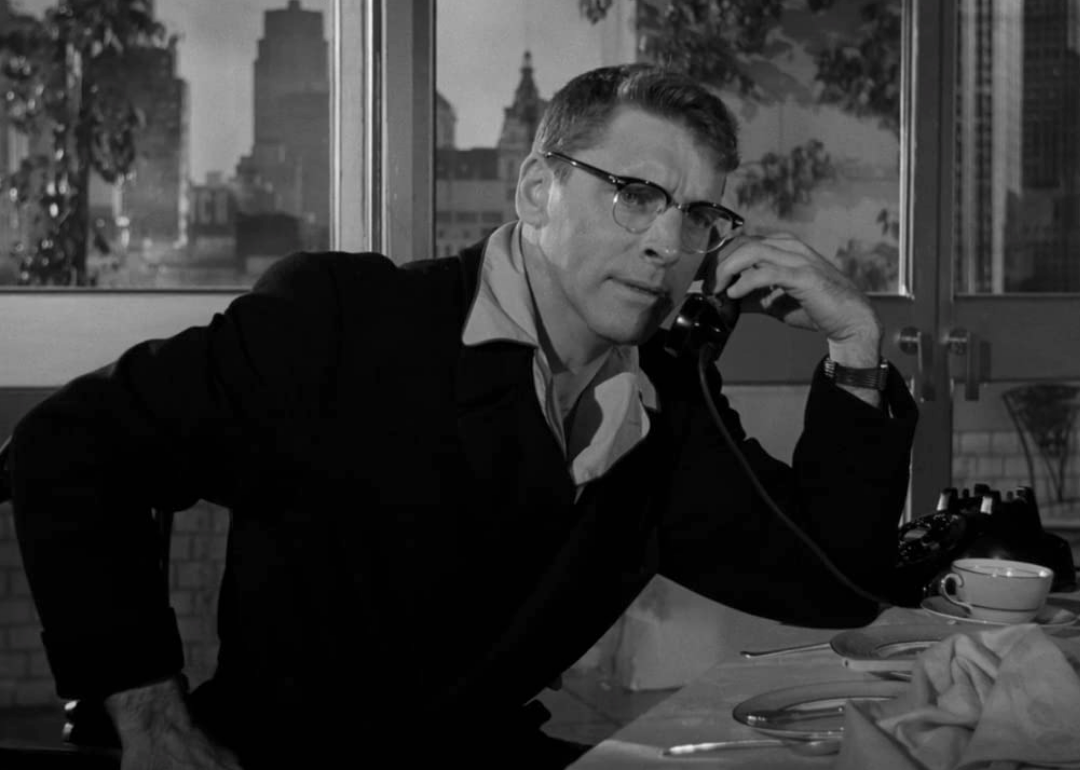
Metro-Goldwyn-Mayer (MGM)
#30. Sweet Smell of Success (1957)
Burt Lancaster in a scene from Sweet Smell of Success.
– Director: Alexander Mackendrick
– Stacker score: 93.8
– Metascore: 100
– IMDb user rating: 8
– Runtime: 96 minutes
Some of the best films take a little time to catch on with audiences, eventually obtaining masterpiece status. Such was the case with 1957’s “Sweet Smell of Success,” which underperformed upon its initial release, but has since earned itself a very loyal following. Converging multiple genres such as drama and noir, the movie centers on an unscrupulous Broadway columnist named J.J. Hunsecker (Burt Lancaster), who goes to great lengths to destroy his sister’s relationship with a jazz musician. The film spawned a musical, titled “Sweet Smell of Success: The Musical,” in 2002.
Warner Bros.
#29. The Treasure of the Sierra Madre (1948)
Humphrey Bogart, Tim Holt, and Walter Huston in a scene from The Treasure of the Sierra Madre.
– Director: John Huston
– Stacker score: 93.8
– Metascore: 98
– IMDb user rating: 8.2
– Runtime: 126 minutes
The ultimate exercise in greed-based paranoia, this 1948 film stars Humphrey Bogart as Fred Dobbs, a down-on-his-luck thief who uncovers a fortune in gold with the help of two men. Soon enough, Dobbs suspects the others are conspiring against him, with his subsequent actions eventually leading to his demise. The movie won three Academy Awards, including two for writer/director John Huston, and later provided the framework for a classic episode of “The Simpsons.” In 1990, the film was selected for preservation in the National Film Registry by the Library of Congress.
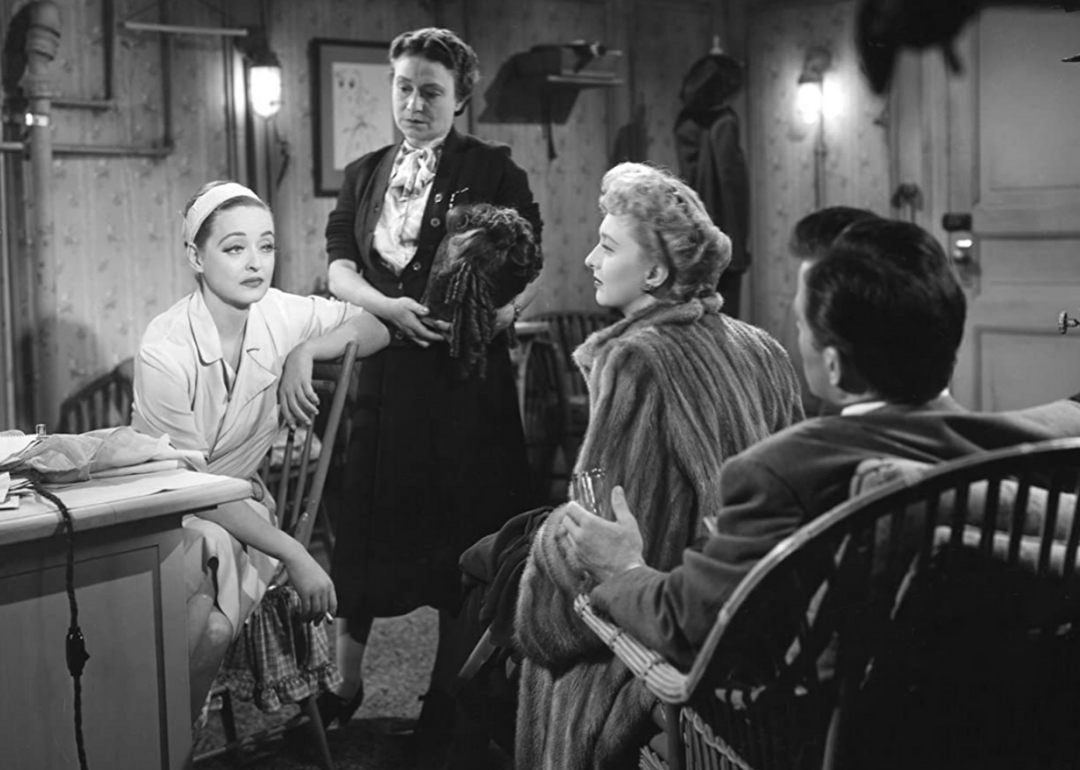
20th Century Fox
#28. All About Eve (1950)
Actors in a scene from All About Eve.
– Director: Joseph L. Mankiewicz
– Stacker score: 93.8
– Metascore: 98
– IMDb user rating: 8.2
– Runtime: 138 minutes
In this 1950 drama, an obsessive actress (Anne Baxter) climbs her way to the top of a theater company by ruthlessly manipulating her supposed idol (Bette Davis). Written and directed by Joseph L. Mankiewicz, “All About Eve” cynically—albeit accurately—portrays show business as a cruel and unforgiving industry, especially to actresses of a certain age. The film was nominated for 14 Academy Awards and won six of them, which ties it with “Titanic” and “La La Land” for the most Oscar nominations in Hollywood history. “All About Eve” became one of the first 50 movies chosen by the Library of Congress for preservation in the National Film Registry.
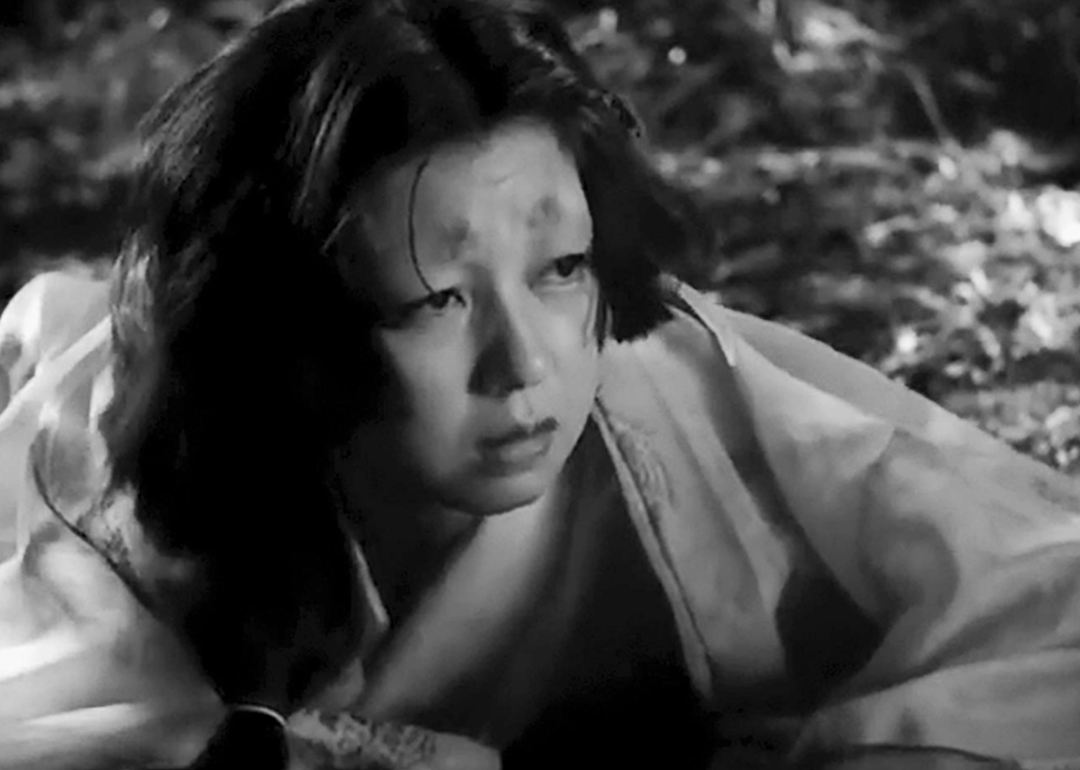
Daiei Motion Picture Company
#27. Rashomon (1950)
Machiko Kyô in a scene from Rashomon.
– Director: Akira Kurosawa
– Stacker score: 93.8
– Metascore: 98
– IMDb user rating: 8.2
– Runtime: 88 minutes
Adapted from Ryunosuke Akutagawa’s short stories “In a Grove” and “Rashomon,” Kurosawa’s towering thriller recounts the murder of a samurai and the rape of his wife from several different perspectives—a bandit, a woodcutter, the wife, and the samurai. “Rashomon” is often credited with introducing Japanese cinema to a wider international audience. It swept international awards ceremonies, ultimately receiving an Academy Honorary Award.
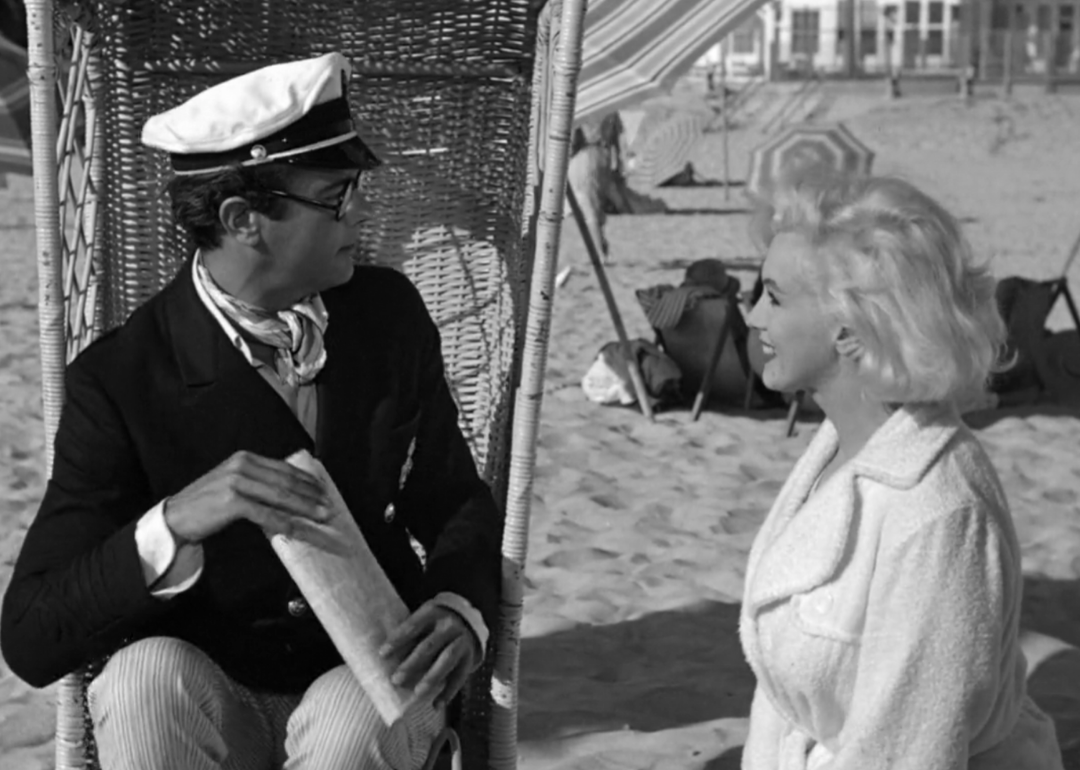
Metro-Goldwyn-Mayer (MGM)
#26. Some Like It Hot (1959)
Marilyn Monroe and Tony Curtis in a scene from Some Like It Hot.
– Director: Billy Wilder
– Stacker score: 93.8
– Metascore: 98
– IMDb user rating: 8.2
– Runtime: 121 minutes
In this 1959 comedy, two male musicians (Tony Curtis and Jack Lemmon) dress up as women and join an all-women band, as they simultaneously evade murderous mobsters. Still adjusting to their new personas, the men befriend singer and ukulele-player Sugar Kane Kowalczyk, played by Marilyn Monroe. While Monroe’s performance is nowadays the stuff of legend, she was reportedly difficult to work with during the shoot, frequently showing up late and forgetting her lines. “Some Like It Hot” earned six Academy Award nominations, including Best Actor, Best Adapted Screenplay, and Best Director, taking home Best Costume Design.
You may also like: Top 25 LGBTQ+ films, according to critics
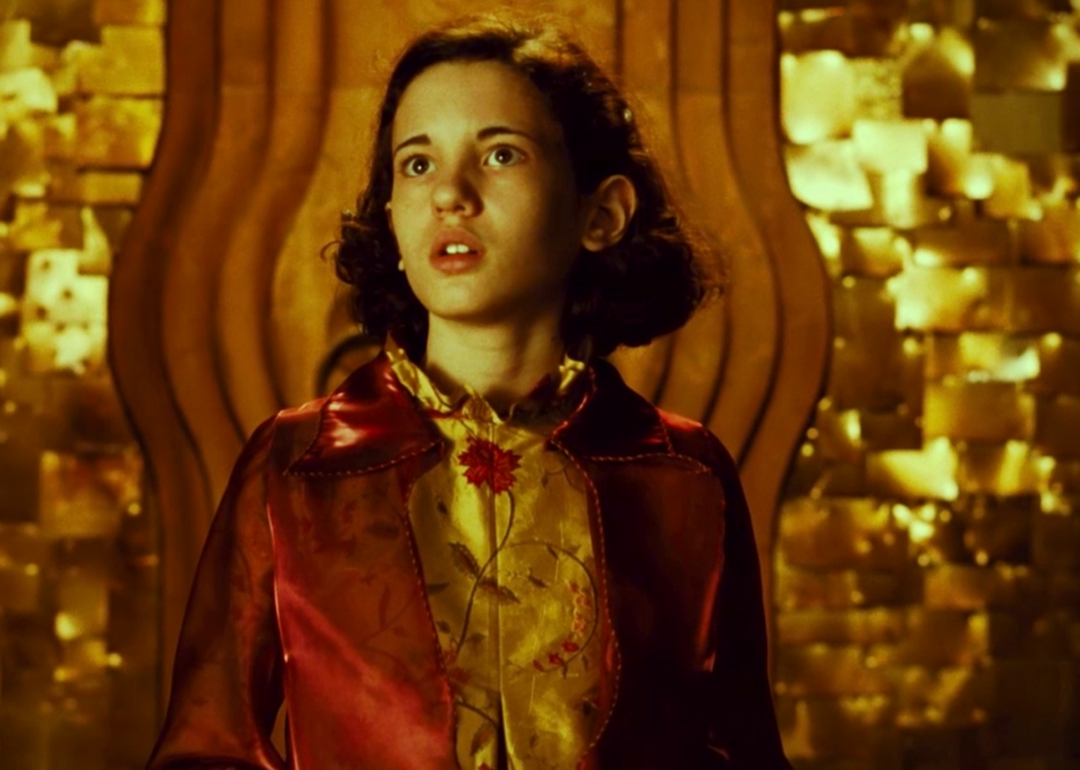
Estudios Picasso
#25. Pan’s Labyrinth (2006)
Ivana Baquero in a scene from Pan’s Labyrinth.
– Director: Guillermo del Toro
– Stacker score: 93.8
– Metascore: 98
– IMDb user rating: 8.2
– Runtime: 118 minutes
This dark political fable unfolds in the years following the Spanish Civil War, as young Ofelia (Ivana Baquero) copes with the horrors of fascism through the violent actions of her army officer stepfather (Sergi López). At the same time, she discovers a captivating underworld and is sent on a mythic quest through its labyrinth. “Pan’s Labyrinth” won three Academy Awards, and has been praised for its depictions of war and loss of innocence.
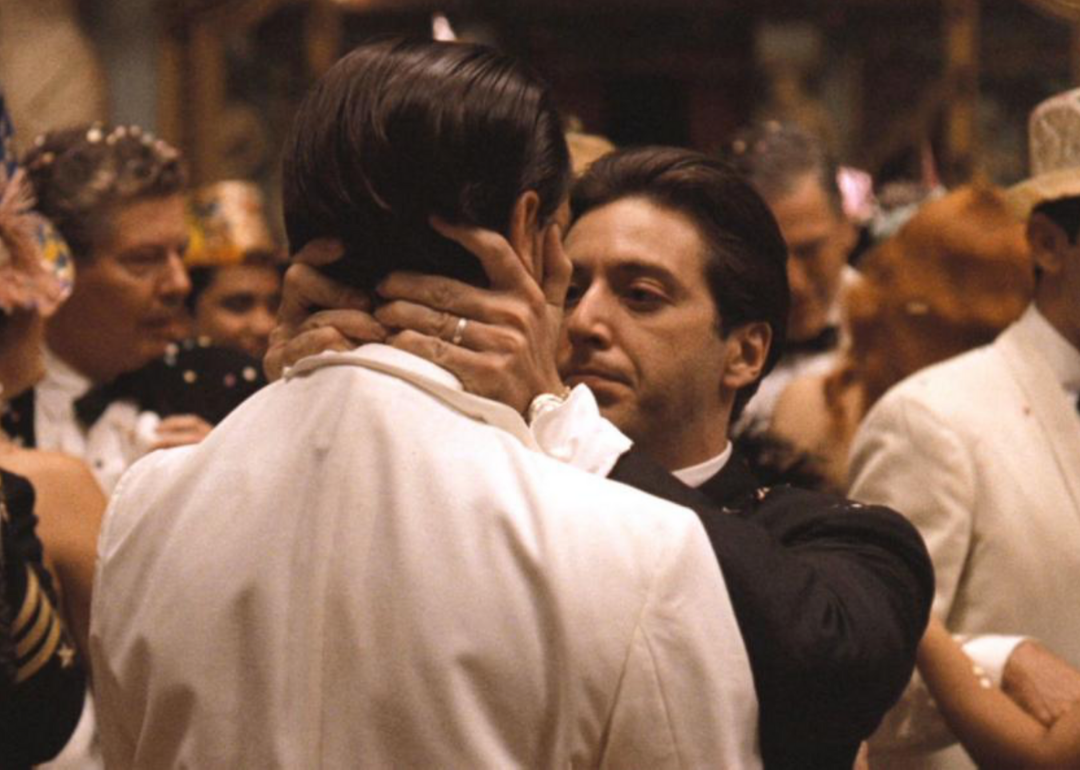
Paramount Pictures
#24. The Godfather: Part II (1974)
Al Pacino and John Cazale in a scene from The Godfather Part II.
– Director: Francis Ford Coppola
– Stacker score: 93.8
– Metascore: 90
– IMDb user rating: 9
– Runtime: 202 minutes
Continuing The Godfather saga to rapturous acclaim and six Academy Awards, this 1974 sequel finds Michael Corleone (Al Pacino) squaring off against a sea of troubles while trying to expand and legitimize his empire. Also depicted is a young Vito Corleone (Robert De Niro), who journeys to the United States from Italy in the early 1900s and ascends to power after murdering the local don. After De Niro won an Academy Award for his performance, he and Marlon Brando became the only two actors in history to win an Oscar for their portrayal of the same character. In 1993, the sequel was selected by the Library of Congress for preservation in the National Film Registry.
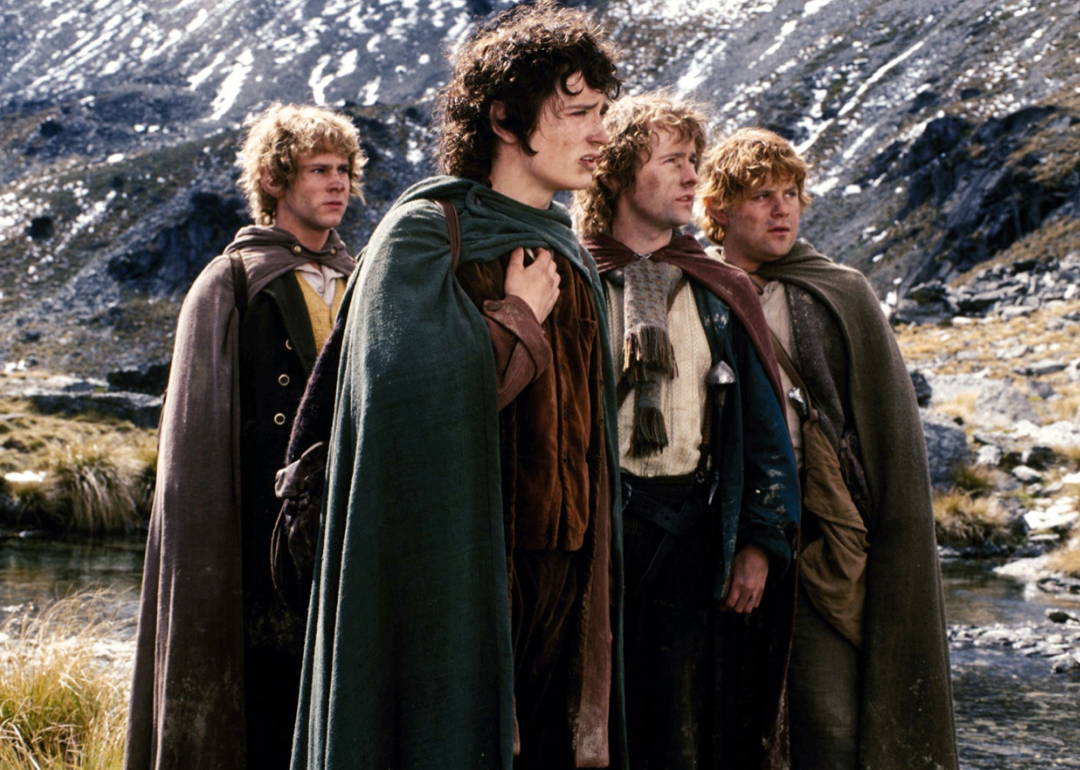
New Line Productions
#23. The Lord of the Rings: The Fellowship of the Ring (2001)
Sean Astin, Elijah Wood, Billy Boyd, and Dominic Monaghan in The Lord of the Rings: The Fellowship of the Ring.
– Director: Peter Jackson
– Stacker score: 93.8
– Metascore: 92
– IMDb user rating: 8.8
– Runtime: 178 minutes
Peter Jackson’s “Lord of the Rings” trilogy kicked off in 2001 with this celebrated installment. After coming into possession of a powerful ring, a hobbit named Frodo (Elijah Wood) and his companions set out to destroy the relic before it ends up in the wrong hands. Hot on their tail is a range of murderous creatures, who will stop at nothing to get their hands on the all-powerful ring. At the 74th Academy Awards, the film was nominated for 13 awards, winning four: Best Cinematography, Best Makeup, Best Original Score and Best Visual Effects.
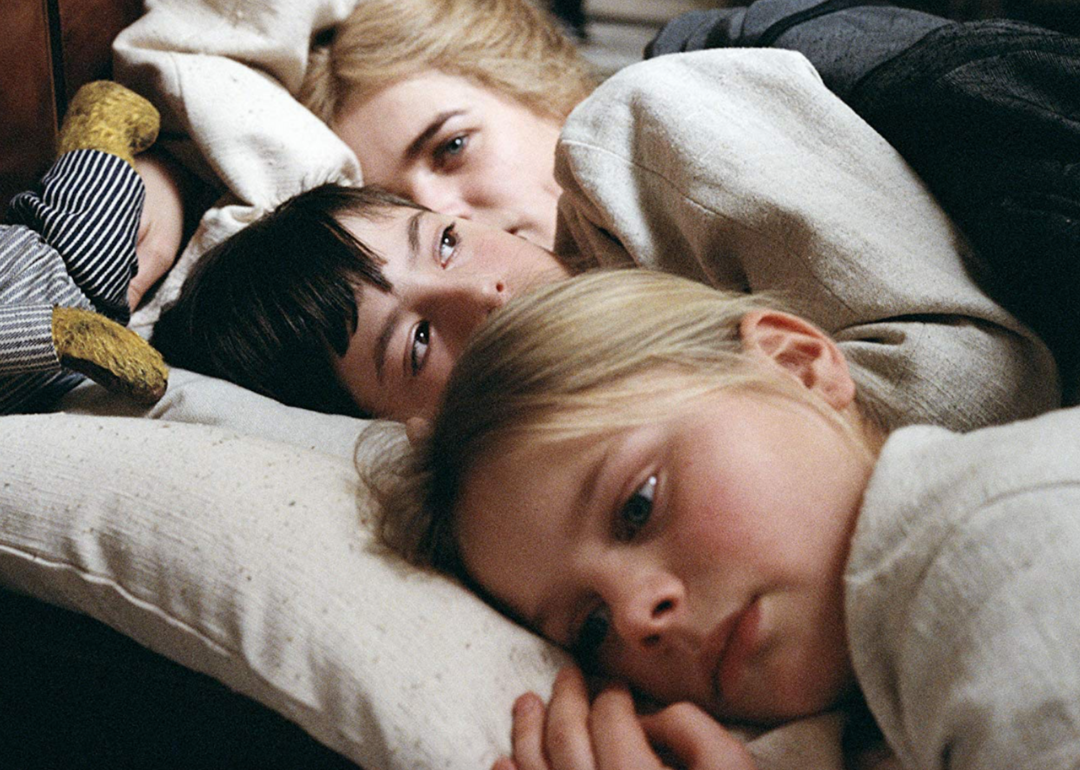
Svenska Filminstitutet (SFI)
#22. Fanny and Alexander (1982)
Actors in a scene from Fanny and Alexander.
– Director: Ingmar Bergman
– Stacker score: 94.3
– Metascore: 100
– IMDb user rating: 8.1
– Runtime: 188 minutes
Originally intended as legendary Swedish filmmaker Ingmar Bergman’s last film, “Fanny and Alexander” tells the semi-autobiographical tale of two children coming of age in a theatrical Swedish family in the early 1900s. It won four Academy Awards, including Best Foreign Language Film. Bergman described it as the sum total of his life as a filmmaker.
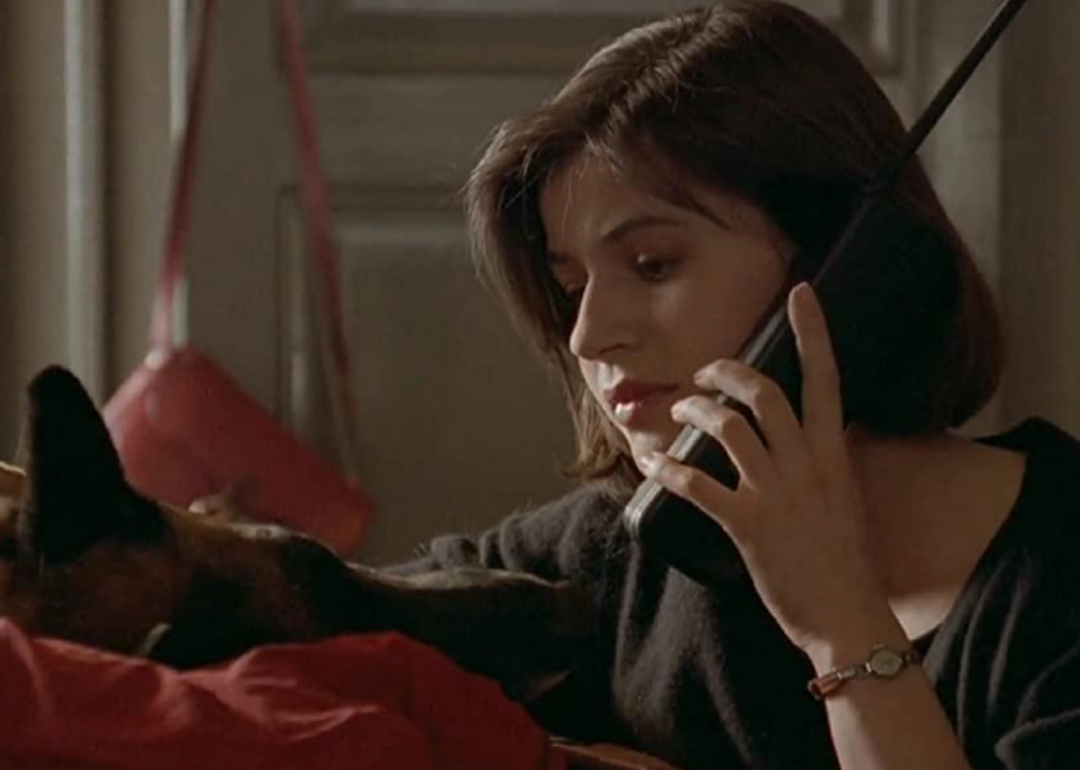
Canal+
#21. Three Colors: Red (1994)
Irène Jacob in a scene from Three Colors: Red.
– Director: Krzysztof Kieslowski
– Stacker score: 94.3
– Metascore: 100
– IMDb user rating: 8.1
– Runtime: 99 minutes
“Red” centers on a somber Swiss model (Irène Jacob) who discovers a retired judge has been spying on local people’s inner lives, connecting a series of unlikely local dramas. It marks the final film in Krzysztof Kieslowski’s Three Colors trilogy, which examined the trio of French Revolutionary ideals. Red explores the idea of fraternity, as characters who seem completely unrelated find their lives inextricably linked. “Red” received three Academy Award nominations, including Best Director.
You may also like: Famous movie quotes from the year you were born
Universum Film (UFA)
#20. Metropolis (1927)
Actors in a scene from Metropolis.
– Director: Fritz Lang
– Stacker score: 94.3
– Metascore: 98
– IMDb user rating: 8.3
– Runtime: 153 minutes
One of the first feature-length sci-fi films made, “Metropolis” is as influential a genre film as they come. The German silent film takes place in a futuristic city sharply divided by class, as the city planner’s son Freder (Gustav Fröhlich) becomes involved in an effort to unite its divided people. In 2001, it became the first film to be inscribed on UNESCO’s Memory of the World Register.
Charles Chaplin Productions
#19. Modern Times (1936)
Charlie Chaplin in a scene from Modern Times.
– Director: Charles Chaplin
– Stacker score: 94.3
– Metascore: 96
– IMDb user rating: 8.5
– Runtime: 87 minutes
Charlie Chaplin reprised his role as The Tramp for this 1936 masterpiece, which stuck to silent-era traditions despite being made in the age of talkies. In the film, The Tramp struggles to make ends meet in a highly industrialized world, famously slithering his way through the gears of a machine during one of the era’s most epochal scenes. Chaplin was reportedly inspired to make the film after talking about machinery and technology with Mahatma Gandhi. “Modern Times” was one of the earliest films chosen by the Library of Congress for preservation in the National Film Registry in 1989.
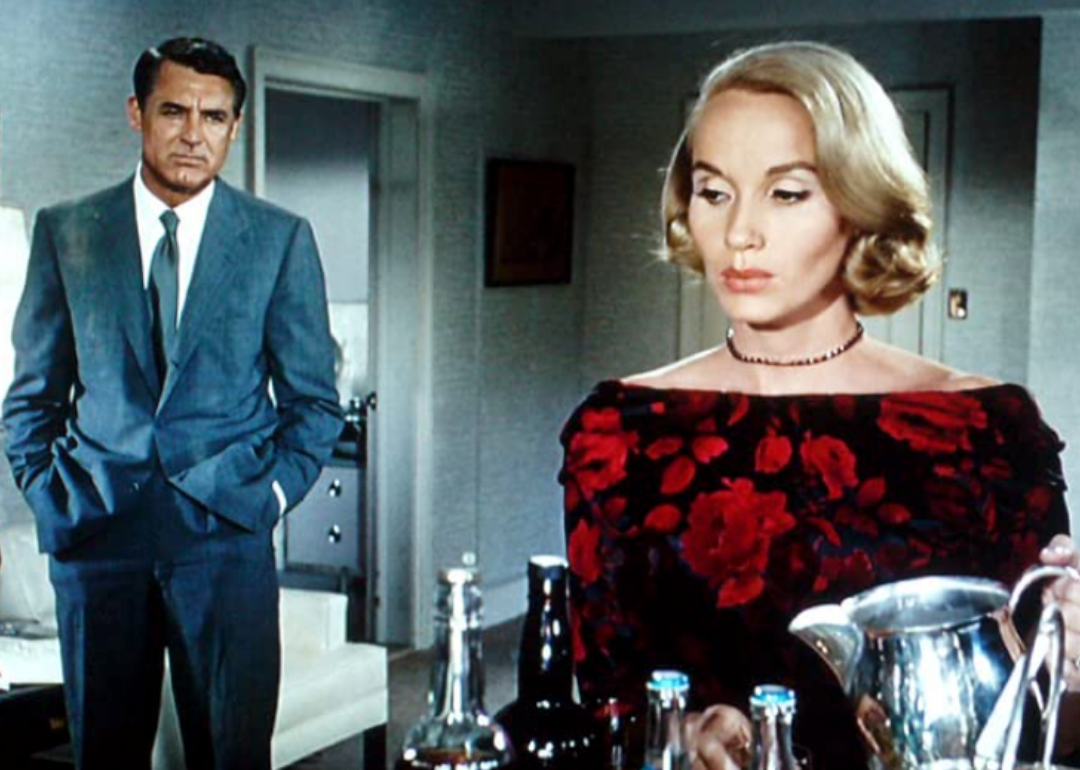
Metro-Goldwyn-Mayer
#18. North by Northwest (1959)
Actors in a scene from North by Northwest.
– Director: Alfred Hitchcock
– Stacker score: 94.3
– Metascore: 98
– IMDb user rating: 8.3
– Runtime: 136 minutes
No list of great films is complete without Alfred Hitchcock, and this 1959 thriller finds the famous director at the top of his game. The movie stars Cary Grant as a New York ad executive, who gets caught up in the world of international espionage after being mistaken for a notorious spy. What follows is an epic struggle for survival, which culminates with a deadly showdown on Mount Rushmore. Regarded as one of the greatest films of all time, “North by Northwest” garnered three Academy Award nominations.
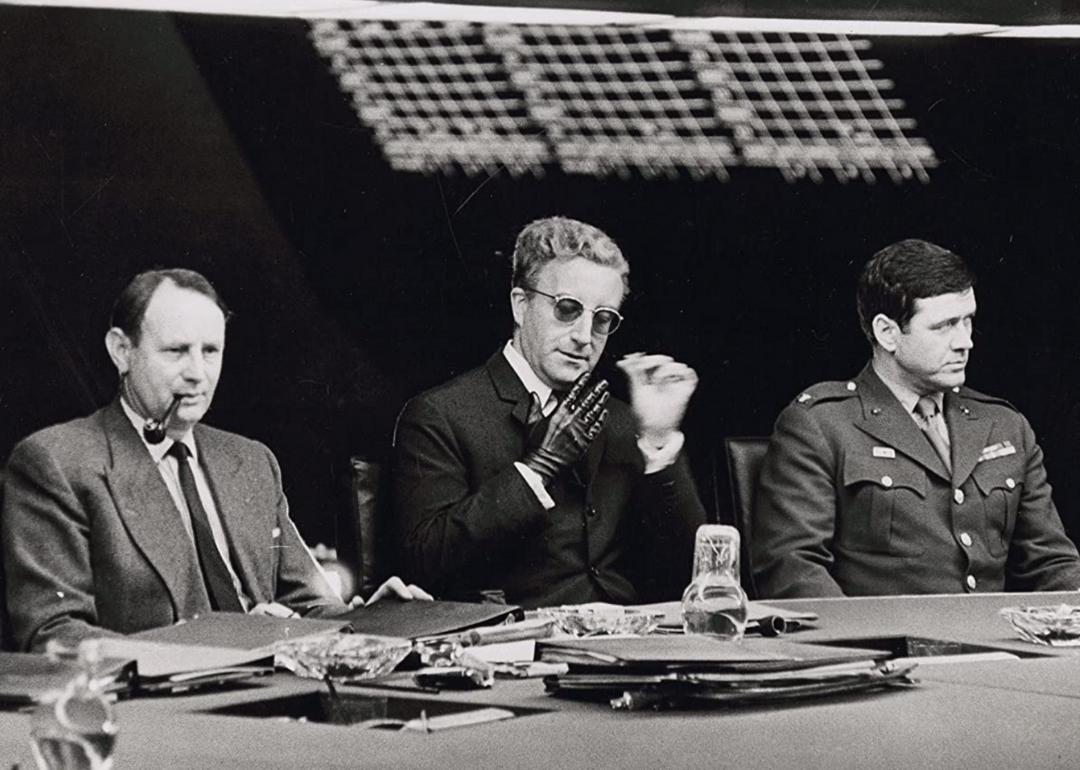
Columbia Pictures Corporation
#17. Dr. Strangelove or: How I Learned to Stop Worrying and Love the Bomb (1964)
Actors in a scene from Dr. Strangelove.
– Director: Stanley Kubrick
– Stacker score: 94.3
– Metascore: 97
– IMDb user rating: 8.4
– Runtime: 95 minutes
Acclaimed director Stanley Kubrick enters the list with 1964’s “Dr. Strangelove or: How I Learned to Stop Worrying and Love the Bomb,” a movie that puts the “dark” in dark comedy. In the film, a series of miscommunications lead to a nuclear showdown between the world’s most powerful nations. As intentionally ridiculous as the movie is, an early version of the script was even more so, with aliens watching the whole fiasco from space. The film garnered four Academy Award nominations, including Best Picture, Best Actor, and Best Director.
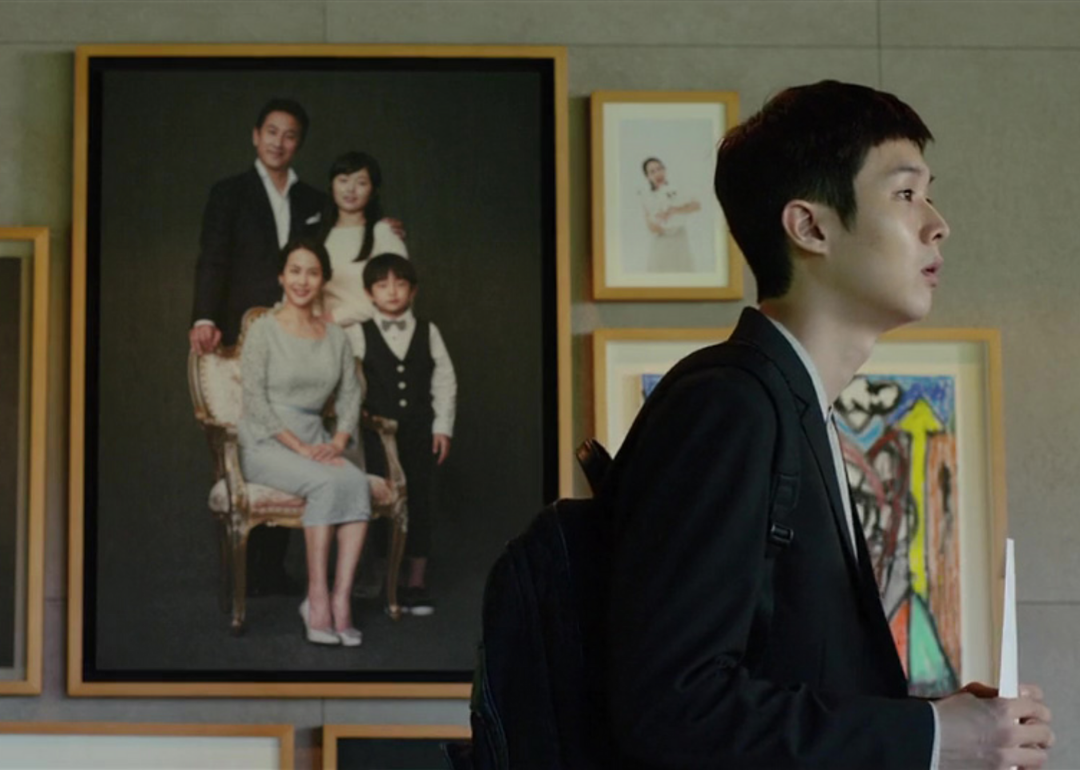
Barunson E&A
#16. Parasite (2019)
A scene from the film Parasite.
– Director: Bong Joon Ho
– Stacker score: 94.3
– Metascore: 96
– IMDb user rating: 8.5
– Runtime: 132 minutes
Upon its 2019 release, “Parasite” managed to distill global unrest over class inequalities into an immensely entertaining thriller. The film tells the story of two Seoul families: one impoverished and posing as employees for the other, who are immensely wealthy. Soon, they become embroiled in a dangerous fight for survival. Hailed as one of the best films of the 21st century thus far, “Parasite” made history when it became the first non-English language film to win Best Picture at the Academy Awards.
You may also like: Different movies with the same plots
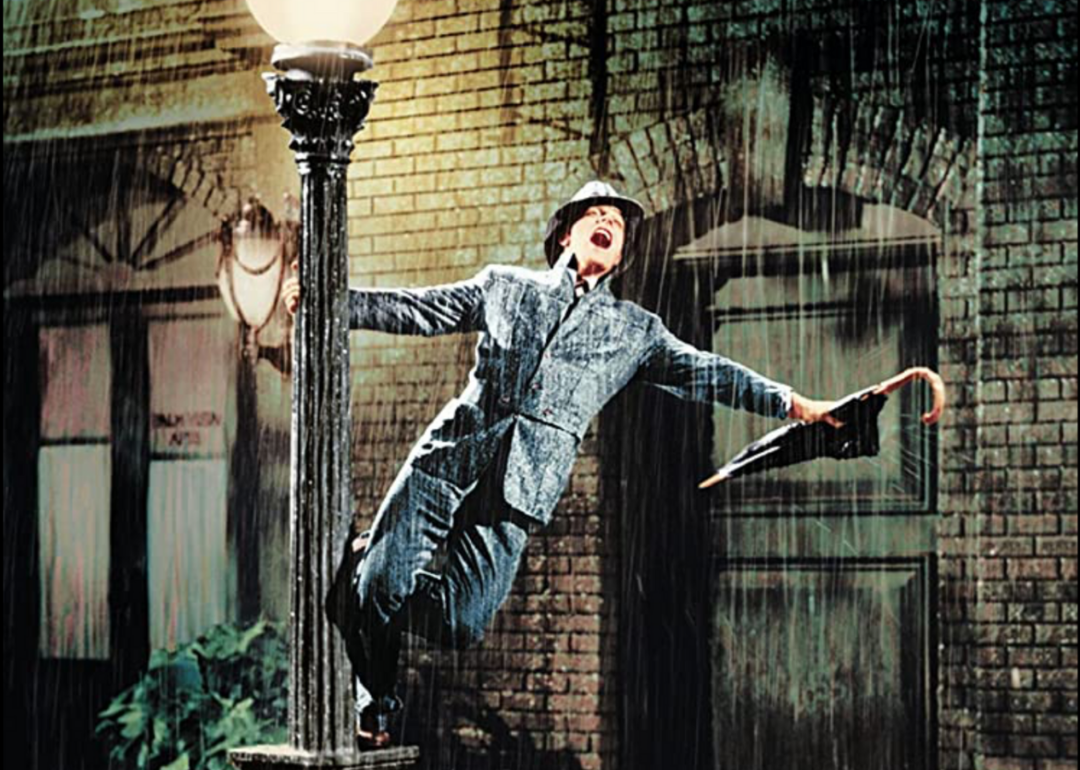
Metro-Goldwyn-Mayer (MGM)
#15. Singin’ in the Rain (1952)
Gene Kelly in Singin’ in the Rain.
– Directors: Stanley Donen, Gene Kelly
– Stacker score: 94.8
– Metascore: 99
– IMDb user rating: 8.3
– Runtime: 103 minutes
Arguably the most celebrated musical of all time, “Singin’ in the Rain” takes place during the rise of talkies and finds the members of a production company struggling to adapt. Not only did Gene Kelly star, co-direct, and choreograph the film, but he performed a song-and-dance number with a temperature of 103 F. Debbie Reynolds co-stars in her breakthrough role as Kathy Selden. In 1989, the movie became one of the first 25 films selected by the Library of Congress for preservation in the National Film Registry.
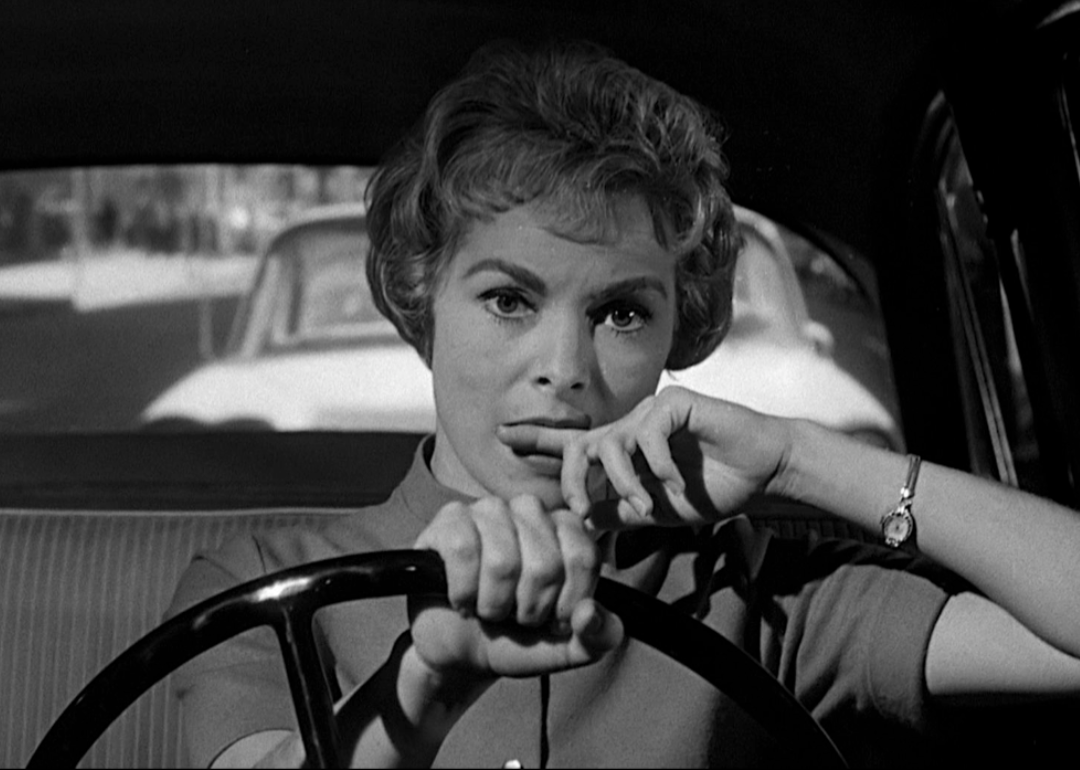
Paramount Pictures
#14. Psycho (1960)
Janet Leigh in a scene from Psycho.
– Director: Alfred Hitchcock
– Stacker score: 94.8
– Metascore: 97
– IMDb user rating: 8.5
– Runtime: 109 minutes
Far more than a heralded thriller, 1960’s “Psycho” paved the way for the modern slasher genre, and furthermore upended various mainstream conventions. In telling the story of a murderous hotel owner, Alfred Hitchcock relied on everything from quick cuts to gripping music to a shape-shifting narrative, thereby delivering a completely new cinematic experience. To this day, the famous shower scene is among the most important sequences in movie history. The film was also nominated for four Oscars, and won Janet Leigh the Golden Globe Award for Best Supporting Actress.
Studio Ghibli
#13. Spirited Away (2001)
An animated still from Spirited Away.
– Director: Hayao Miyazaki
– Stacker score: 94.8
– Metascore: 96
– IMDb user rating: 8.6
– Runtime: 125 minutes
Although Japanese animation studio Studio Ghibli has become internationally renowned for their fantastical, deeply human films, “Spirited Away” is widely recognized as the company’s and Hayao Miyazaki’s magnum opus. The movie follows 10-year-old Chihiro (Rumi Hiiragi), who finds herself in a fantasy world ruled by gods and monsters, as she fights to reclaim her identity and reunite with her parents. It became the first non-English language hand-drawn film to win the Oscar for Best Animated Feature.

Horizon Pictures (II)
#12. Lawrence of Arabia (1962)
Anthony Quinn, Peter O’Toole, and Omar Sharif in a scene from Lawrence of Arabia.
– Director: David Lean
– Stacker score: 95.3
– Metascore: 100
– IMDb user rating: 8.3
– Runtime: 218 minutes
Inspired by the life of iconic English officer T.E. Lawrence and his 1963 book “Seven Pillars of Wisdom,” David Lean’s legendary epic stars Peter O’Toole as Lawrence himself. The film tells the story of how he united Arab tribes against the Ottoman Turks during World War II. Widely recognized as one of the most influential movies ever made, it won seven Oscars, including Best Picture.
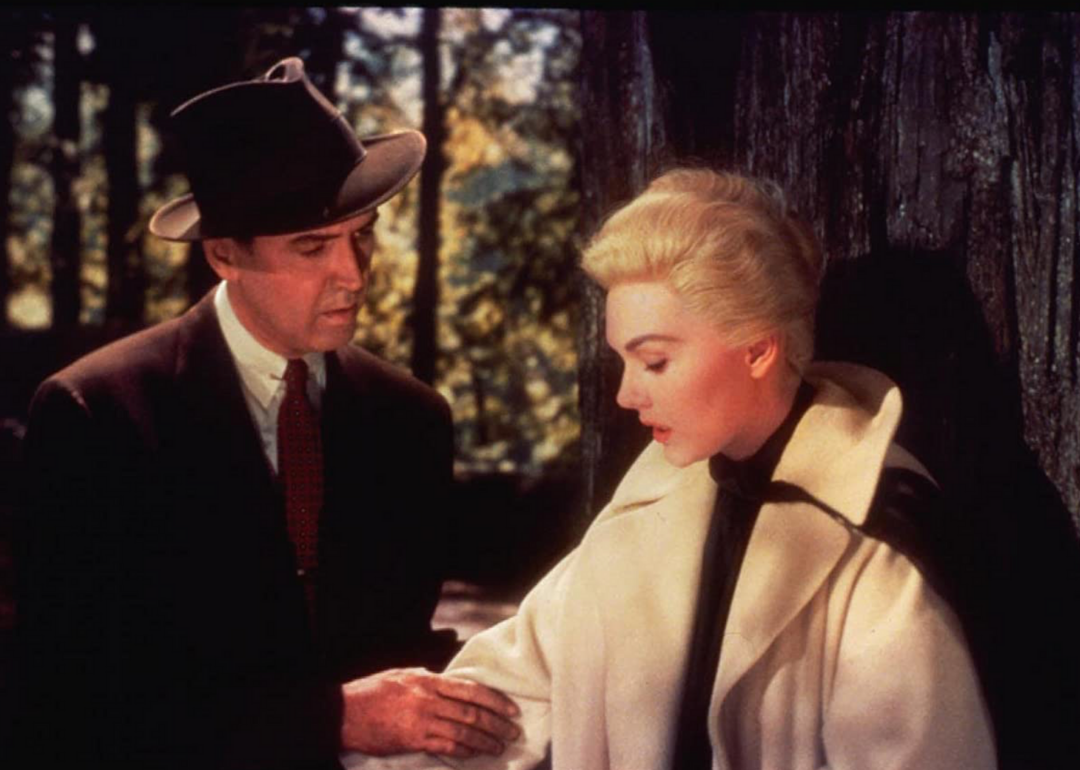
Paramount Pictures
#11. Vertigo (1958)
James Stewart and Kim Novak in Vertigo.
– Director: Alfred Hitchcock
– Stacker score: 95.3
– Metascore: 100
– IMDb user rating: 8.3
– Runtime: 128 minutes
Nothing is as it seems in “Vertigo,” an Alfred Hitchcock classic based on Boileau-Narcejac’s 1954 novel “D’entre les morts” (“From Among the Dead”). In the film, a former police detective (James Stewart) is hired to trail a friend’s wife (Kim Novak) who’s been acting strangely and may be at risk of harming herself. The otherwise mundane gig goes haywire as the private investigator becomes obsessed with the woman and Hitchcock shares his most revelatory, personal production of his career. The classic Hitchcock film was preserved in the National Film Registry in 1989.
You may also like: 100 best international movies of all time
RKO Radio Pictures
#10. Citizen Kane (1941)
Orson Welles in a scene from Citizen Kane.
.- Director: Orson Welles
– Stacker score: 95.3
– Metascore: 100
– IMDb user rating: 8.3
– Runtime: 119 minutes
Here’s a movie so great that when something else is likewise terrific, that thing is often referred to as the “Citizen Kane” of its respective arena. Accordingly, this 1941 film—which depicts the ambitious rise of newspaper magnate Charles Foster Kane (Orson Welles)—has only gotten better with age. It might no longer retain the #1 spot on lists of the greatest films, including this one, but ask the right cinephiles, and they will likely assert “Citizen Kane” is still the best movie of them all. Despite garnering nine Academy Awards, the film only walked away with one, for Best Original Screenplay.
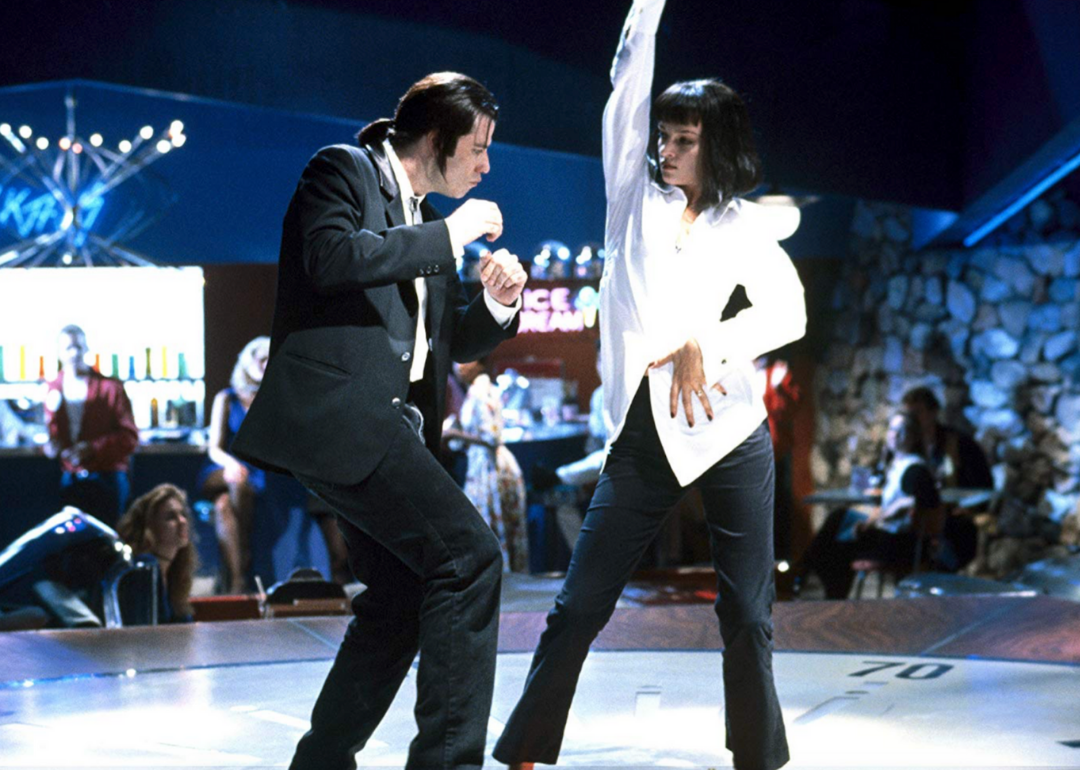
Miramax
#9. Pulp Fiction (1994)
John Travolta and Uma Thurman in a scene from Pulp Fiction.
– Director: Quentin Tarantino
– Stacker score: 95.3
– Metascore: 94
– IMDb user rating: 8.9
– Runtime: 154 minutes
Quentin Tarantino’s second directorial effort arguably remains his most quintessential work. Interweaving three violent stories—while simultaneously paying homage to a host of influences— “Pulp Fiction” is quite simply the stuff that great cinema is made of. Speaking of influences, the hit film was happy to pay it forward, inspiring a wave of upcoming auteurs. In 2013, “Pulp Fiction” was chosen for preservation in the National Film Registry.
Charles Chaplin Productions
#8. City Lights (1931)
Charlie Chaplin and Virginia Cherrill in a scene from City Lights.
– Director: Charles Chaplin
– Stacker score: 95.8
– Metascore: 99
– IMDb user rating: 8.5
– Runtime: 87 minutes
Sticking to his well-established roots, Charlie Chaplin released this primarily silent film three years into the talkie era. Rife with signature pantomime, it follows The Tramp (Chaplin) as he resorts to various extremes while trying to make a buck. It all paves the way for one of cinema’s most unforgettable final scenes, during which the story’s underlying pathos is laid bare. Hailed as being one of the greatest and most inspiring films, “City Lights” went on to be preserved by the Library of Congress in the National Film Registry in 1991.
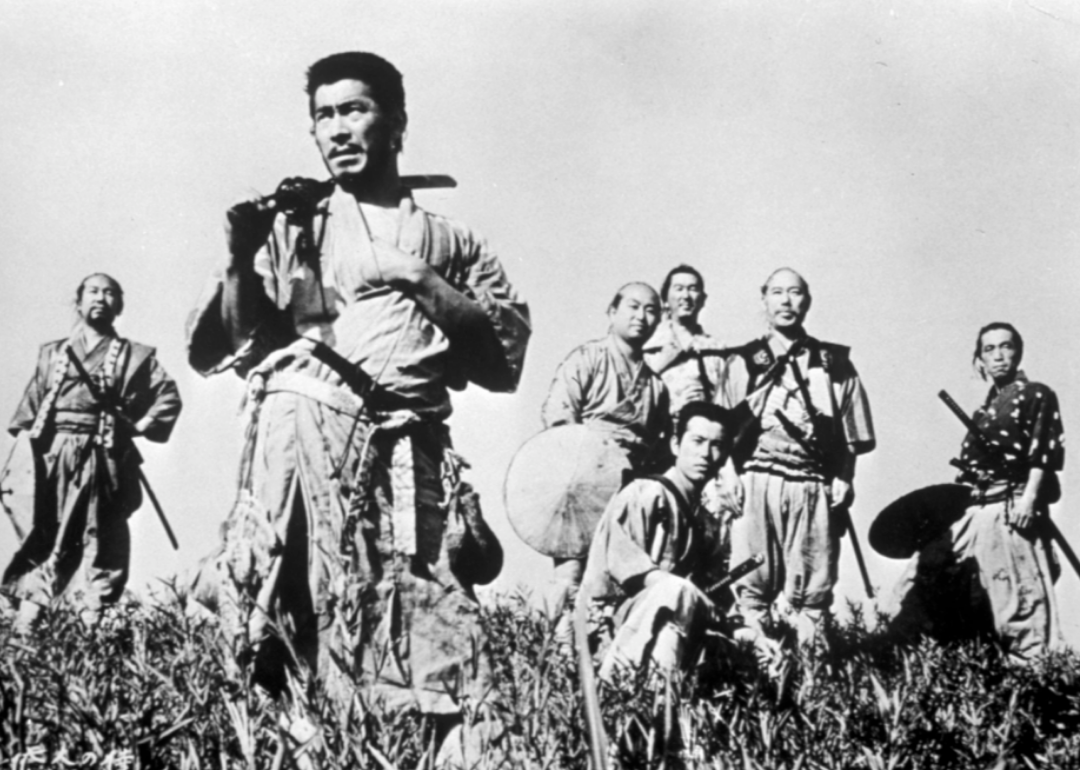
Toho Company
#7. Seven Samurai (1954)
Actors in a film still from Seven Samurai.
– Director: Akira Kurosawa
– Stacker score: 95.8
– Metascore: 98
– IMDb user rating: 8.6
– Runtime: 207 minutes
In this three-hour epic, farmers from a village targeted by bandits hire a veteran samurai and his six companions to help defend them. Featuring iconic Japanese actors like Takashi Shimura and Toshiro Mifune, the movie manages to deliver both breathless action and a rich tale of human resilience. It’s also known for its centerpiece battle, when 40 bandits attack the central village.

Universal Pictures/Amblin Entertainment
#6. Schindler’s List (1993)
Ralph Fiennes and Liam Neeson in a scene from Schindler’s List.
– Director: Steven Spielberg
– Stacker score: 95.8
– Metascore: 94
– IMDb user rating: 9
– Runtime: 195 minutes
While Steven Spielberg was no stranger to serious fare by the early 1990s, he nevertheless caught audiences by surprise when he released this award-winning drama. It tells the true story of Oskar Schindler, a German industrialist who ultimately saved 1,100 Jewish lives during the Holocaust. Spielberg forewent a salary when making the film, and donated the profits to a charitable foundation. The movie was nominated for 12 Academy Awards, winning seven, including Best Picture, Best Director, and Best Adapted Screenplay.
You may also like: Biggest box office bombs of all time
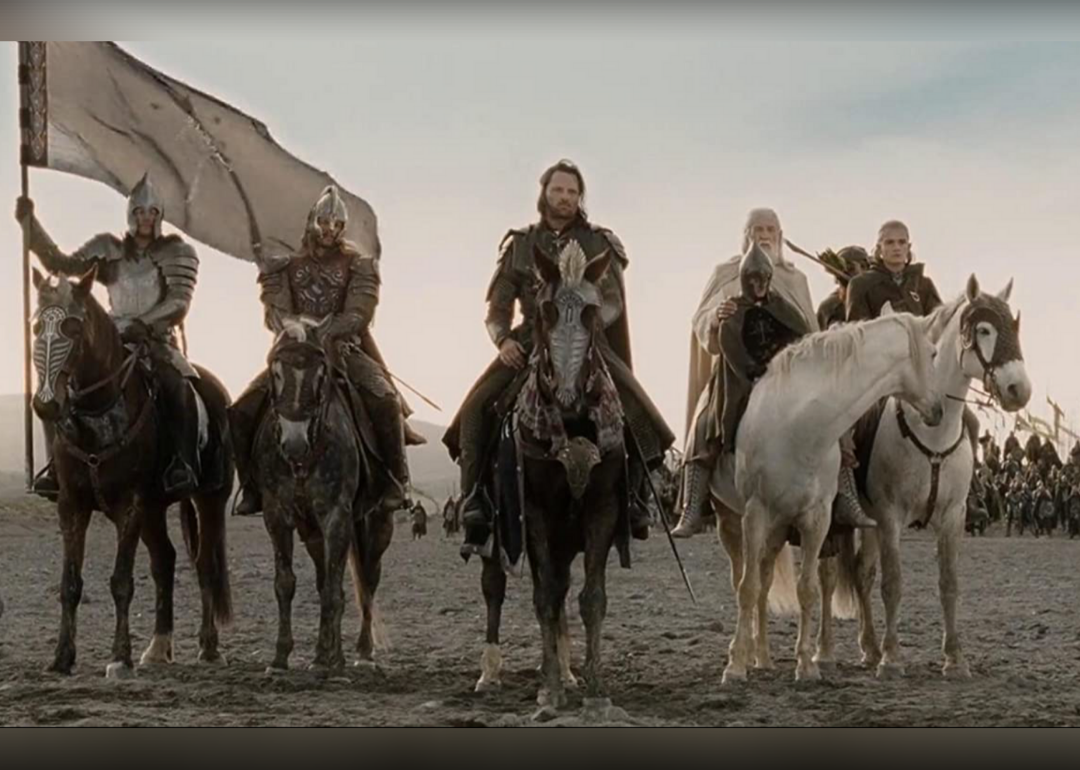
New Line Cinema
#5. The Lord of the Rings: The Return of the King (2003)
Viggo Mortenson, Ian McKellen and Orlando Bloom in a scene from The Lord of the Rings: The Return of the King.
– Director: Peter Jackson
– Stacker score: 95.8
– Metascore: 94
– IMDb user rating: 9
– Runtime: 201 minutes
In the final installment of Peter Jackson’s Lord of the Rings trilogy, the forces of good and evil do battle over the fate of Middle Earth, while Frodo reaches the last leg of his journey. Not only did the film earn more than $1 billion dollars at the box office, but it won 11 Academy Awards out of 11 nominations, giving it the highest perfect score in Oscar history. It also tied with “Ben-Hur” and “Titanic” for the film with the most Oscar wins.
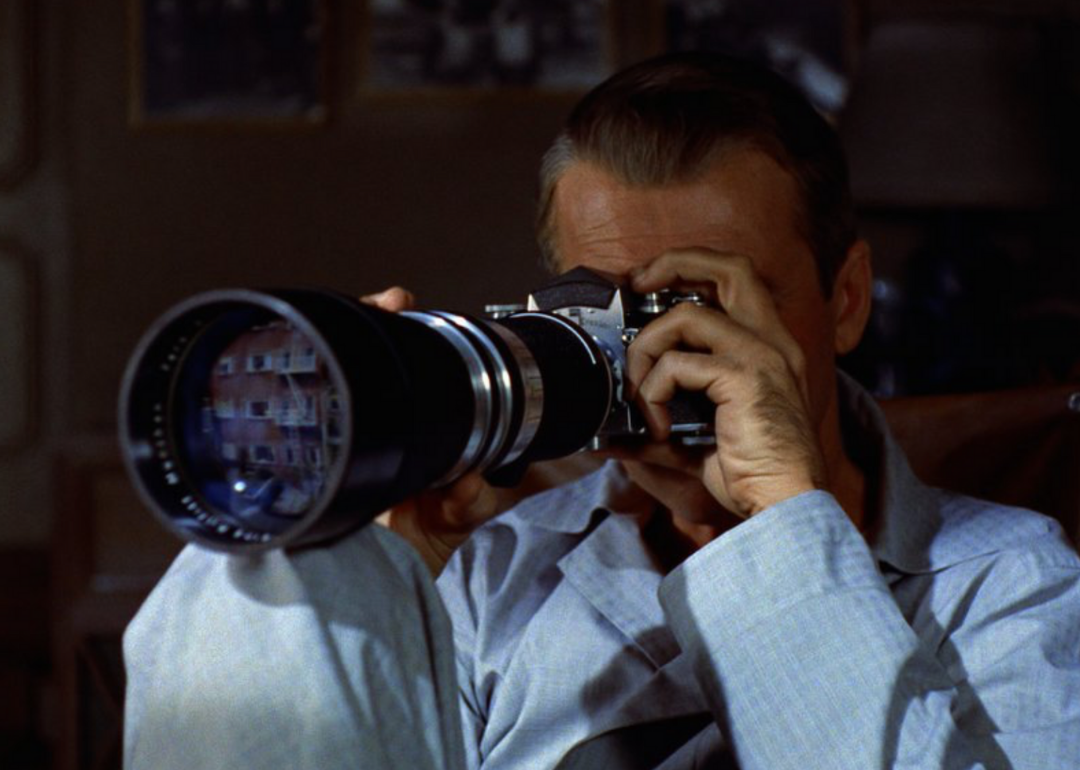
Paramount Pictures
#4. Rear Window (1954)
James Stewart in a scene from Rear Window.
– Director: Alfred Hitchcock
– Stacker score: 96.4
– Metascore: 100
– IMDb user rating: 8.5
– Runtime: 112 minutes
In addition to striking the perfect balance of intrigue and suspense, this 1954 Hitchcock film endures through its perennial relatability. After all, who hasn’t wondered what their neighbor might be up to behind closed doors? In “Rear Window,” the answer is potentially murder. Or is a wheelchair-bound James Stewart simply letting his paranoia get the best of him? To say anything more is to spoil the fun of watching this classic for the first time. The movie earned four Academy Award nominations, including Best Director and Best Adapted Screenplay.
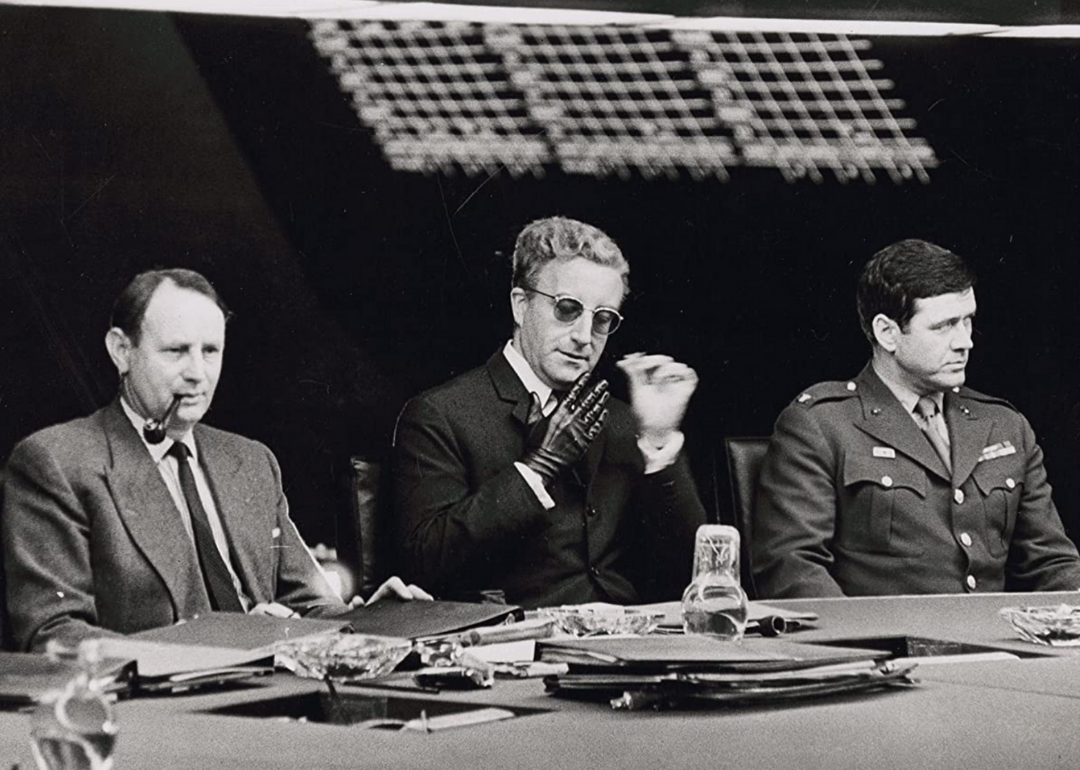
Columbia Pictures Corporation
#17. Dr. Strangelove or: How I Learned to Stop Worrying and Love the Bomb (1964)
Actors in a scene from Dr. Strangelove.
– Director: Stanley Kubrick
– Stacker score: 94.3
– Metascore: 97
– IMDb user rating: 8.4
– Runtime: 95 minutes
Acclaimed director Stanley Kubrick enters the list with 1964’s “Dr. Strangelove or: How I Learned to Stop Worrying and Love the Bomb,” a movie that puts the “dark” in dark comedy. In the film, a series of miscommunications lead to a nuclear showdown between the world’s most powerful nations. As intentionally ridiculous as the movie is, an early version of the script was even more so, with aliens watching the whole fiasco from space. The film garnered four Academy Award nominations, including Best Picture, Best Actor, and Best Director.
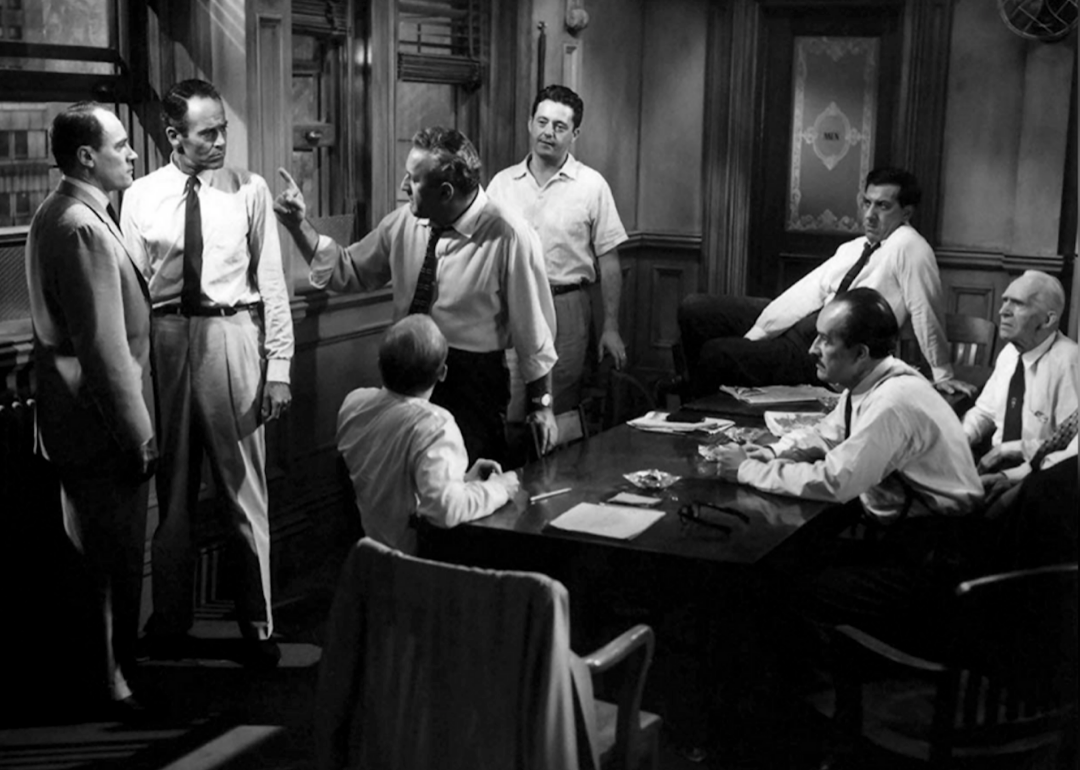
Orion-Nova Productions
#2. 12 Angry Men (1957)
Henry Fonda and cast members in a scene from 12 Angry Men.
– Director: Sidney Lumet
– Stacker score: 96.9
– Metascore: 96
– IMDb user rating: 9
– Runtime: 96 minutes
In this taut 1957 drama from Sidney Lumet, 12 jurors determine the fate of a suspected murderer. What starts as an open-and-shut case becomes something far more complex, as a lone holdout convinces the others that the defendant might not be guilty after all. As the debate unfolds, each juror’s own respective prejudices bubble to the surface, with all the action taking place inside the jury room. In 2007, the film was chosen for preservation in the National Film Registry by the Library of Congress.
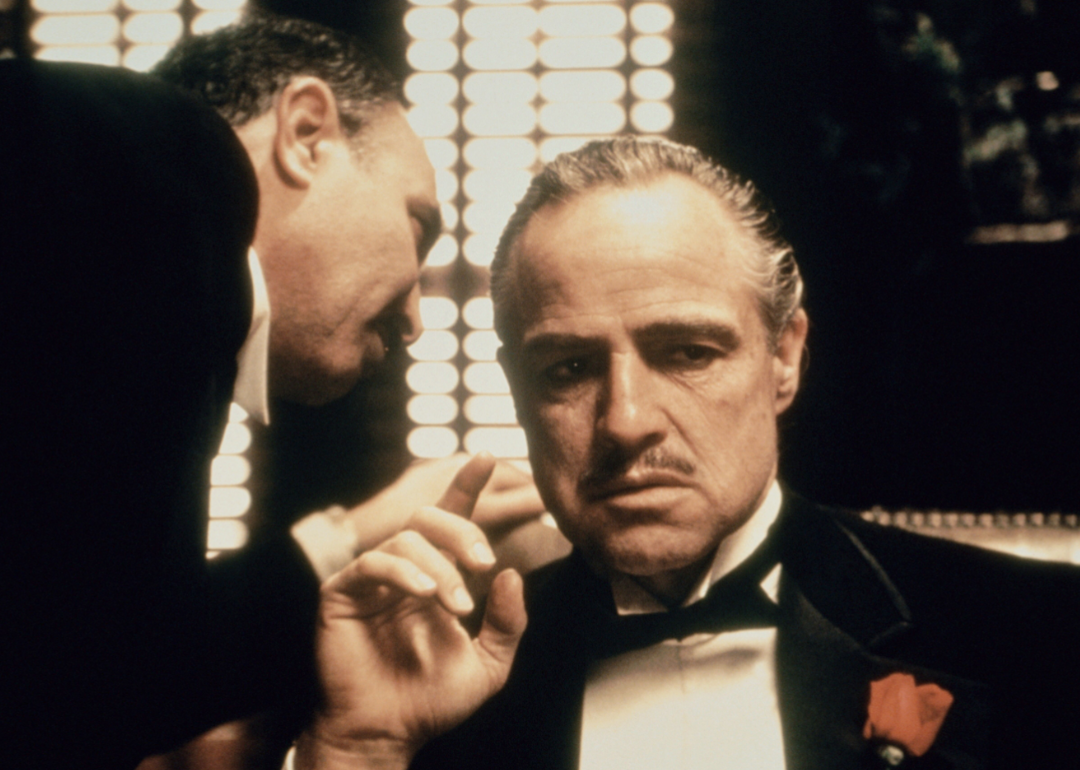
Paramount Pictures
#1. The Godfather (1972)
Marlon Brando and Salvatore Corsitto in The Godfather.
– Director: Francis Ford Coppola
– Stacker score: 100
– Metascore: 100
– IMDb user rating: 9.2
– Runtime: 175 minutes
Stanley Kubrick himself used to reluctantly theorize that “The Godfather” was the greatest movie ever made, and most audiences and critics agree. Chronicling the exploits of the Corleone crime family, this 1972 masterpiece delivers everything one could ask for in a film, fusing elements of drama, violence, and suspense to absolute perfection. Indeed, there’s virtually no aspect of “The Godfather” that doesn’t remain iconic to this day, hence its status as the best movie of all time. The film had a huge turnout at the 45th Academy Awards, winning Best Picture, Best Actor (Marlon Brando), and Best Adapted Screenplay.
You may also like: Most widely watched but universally hated movies of all time
